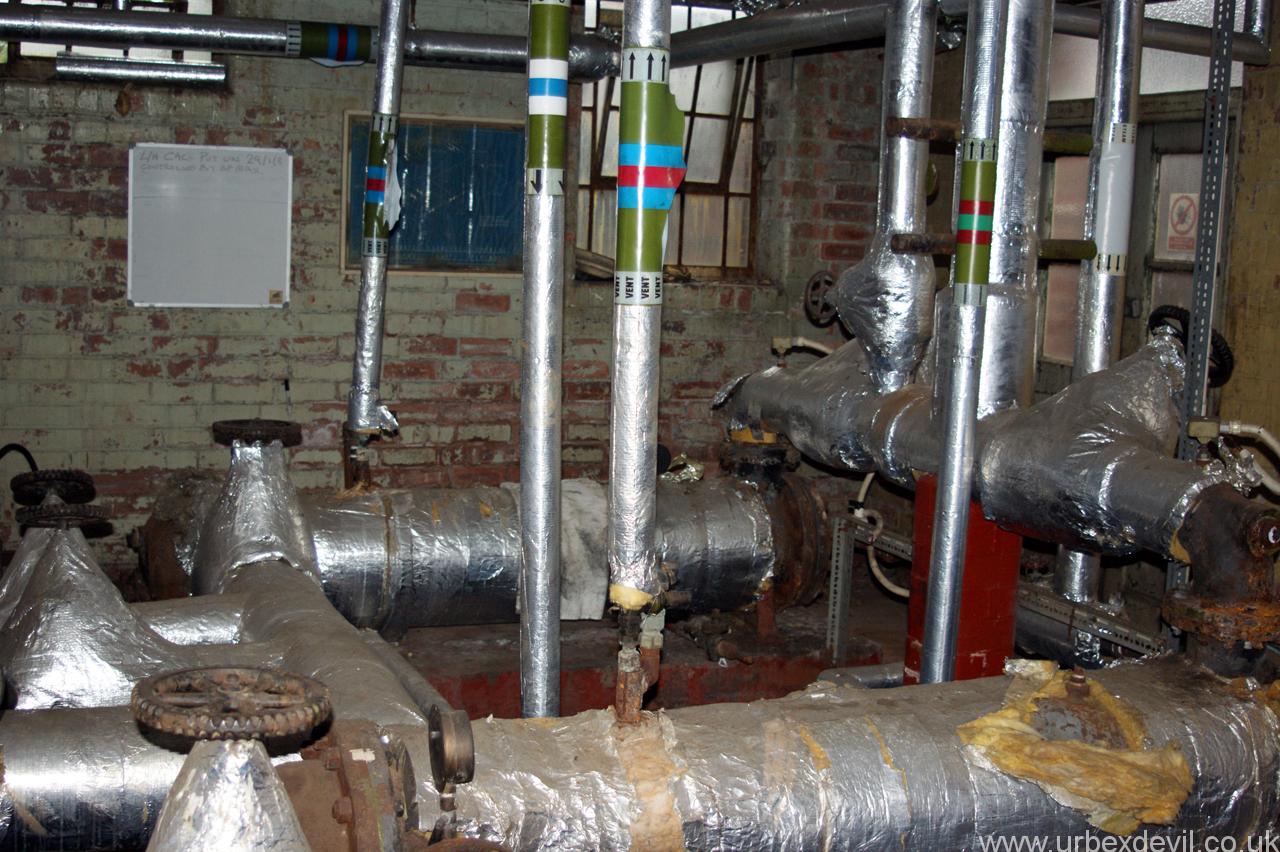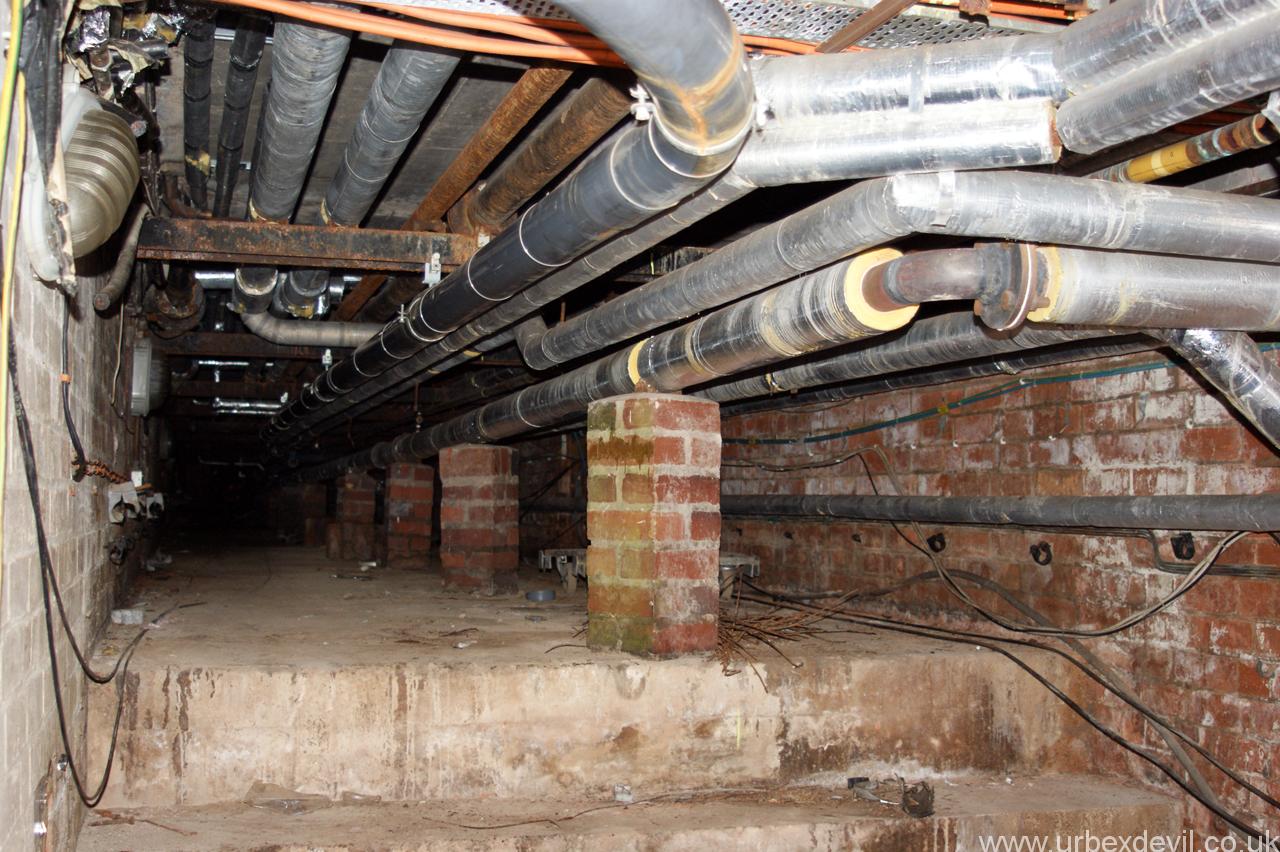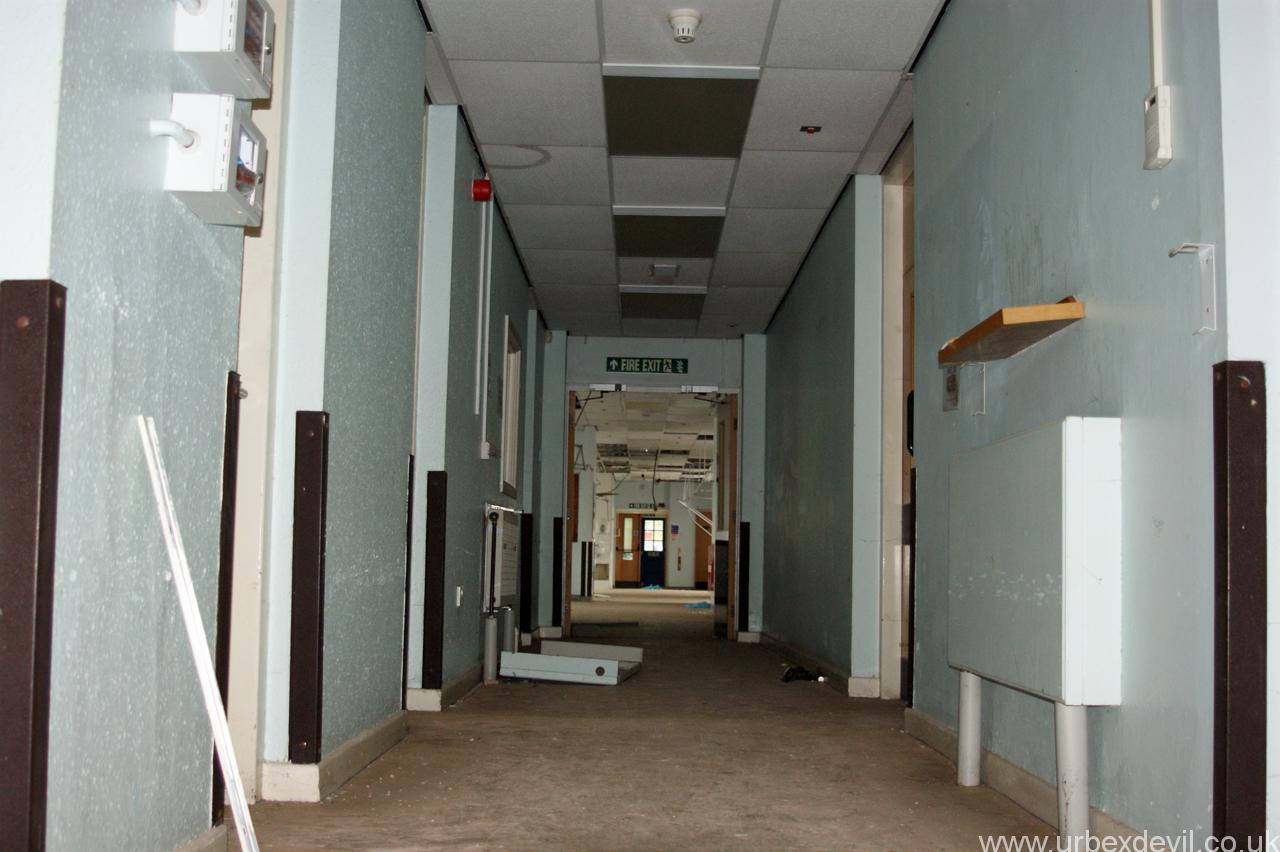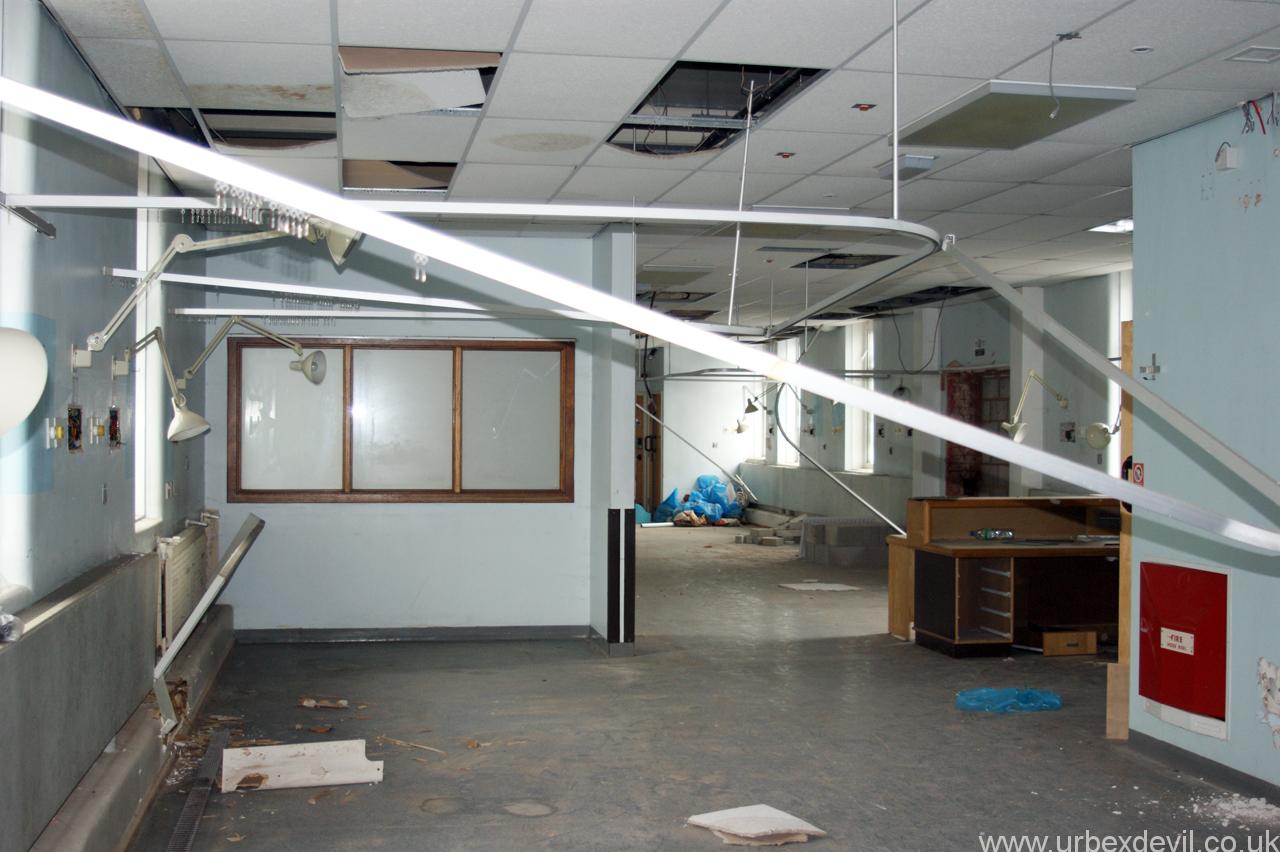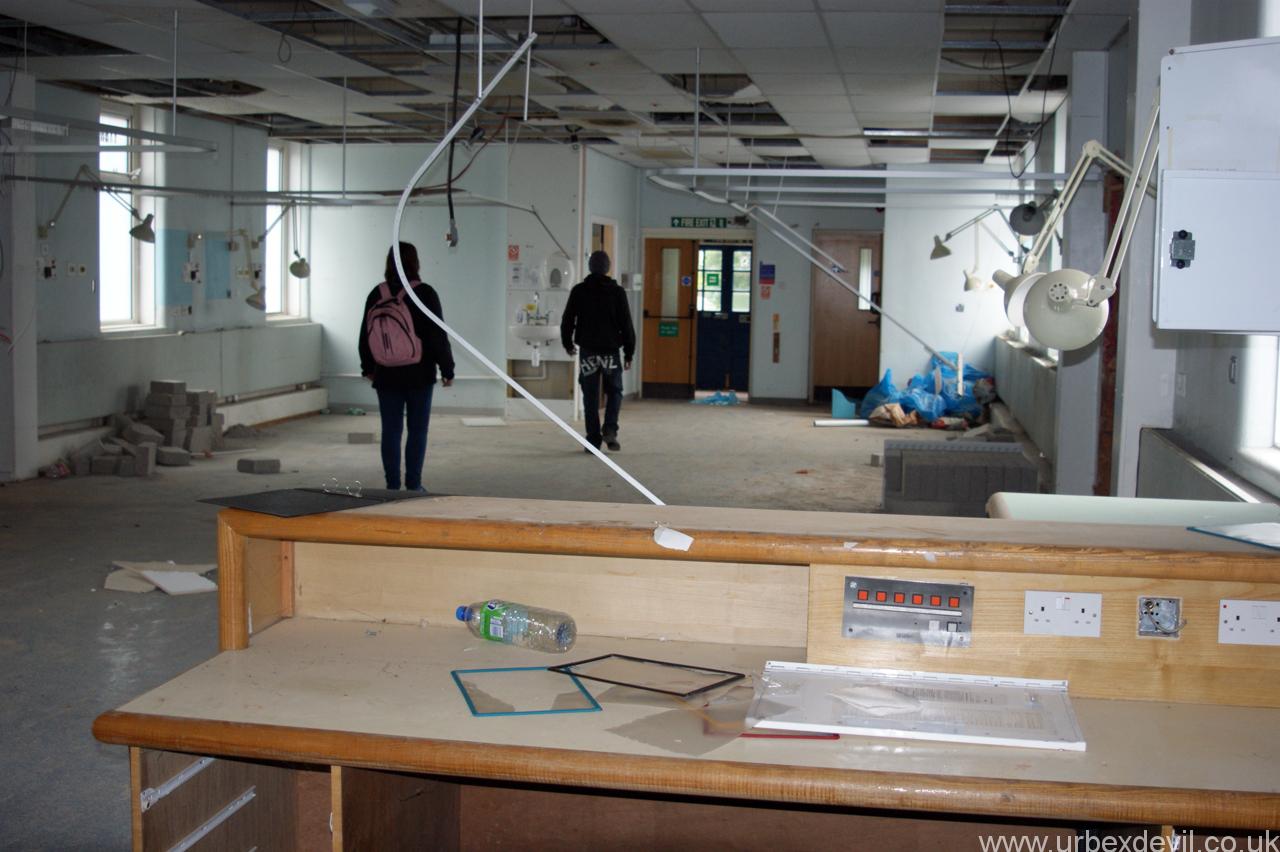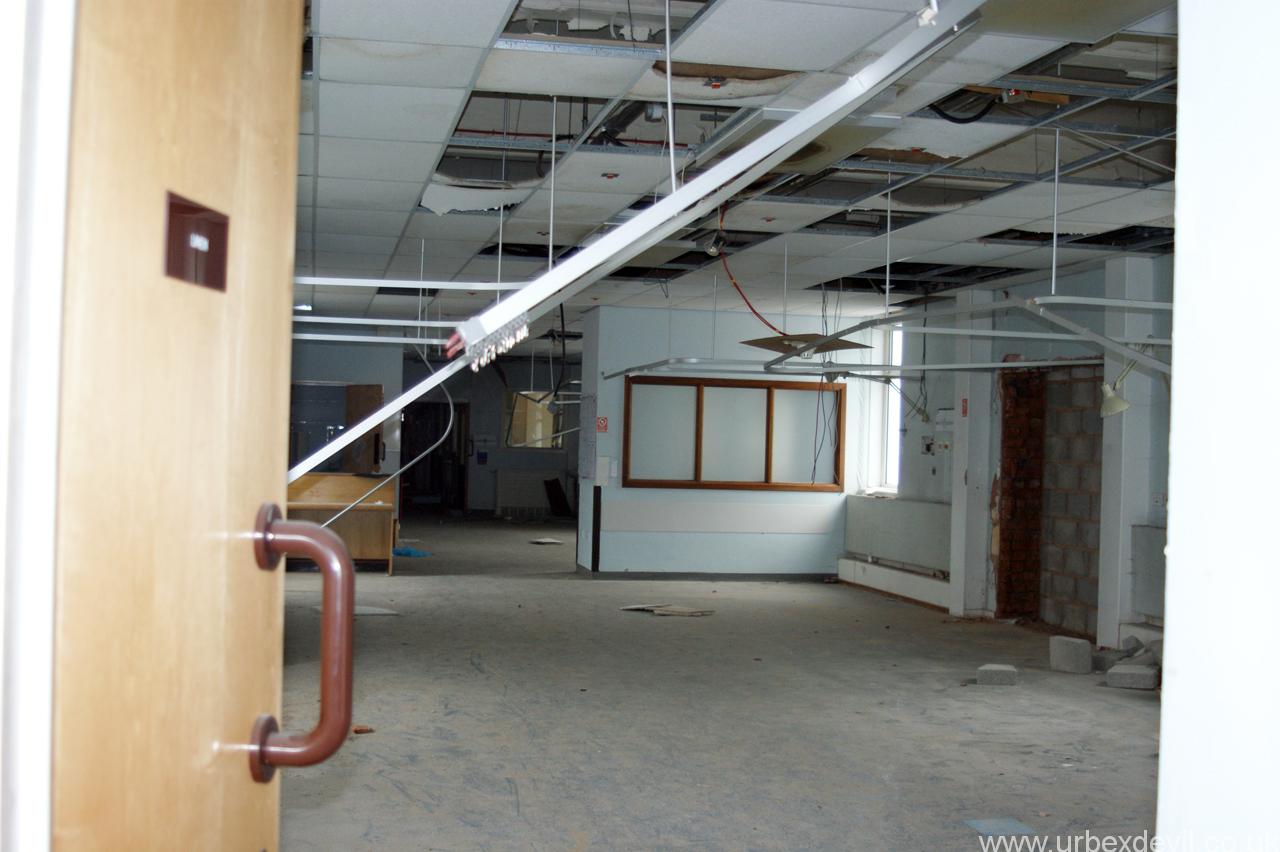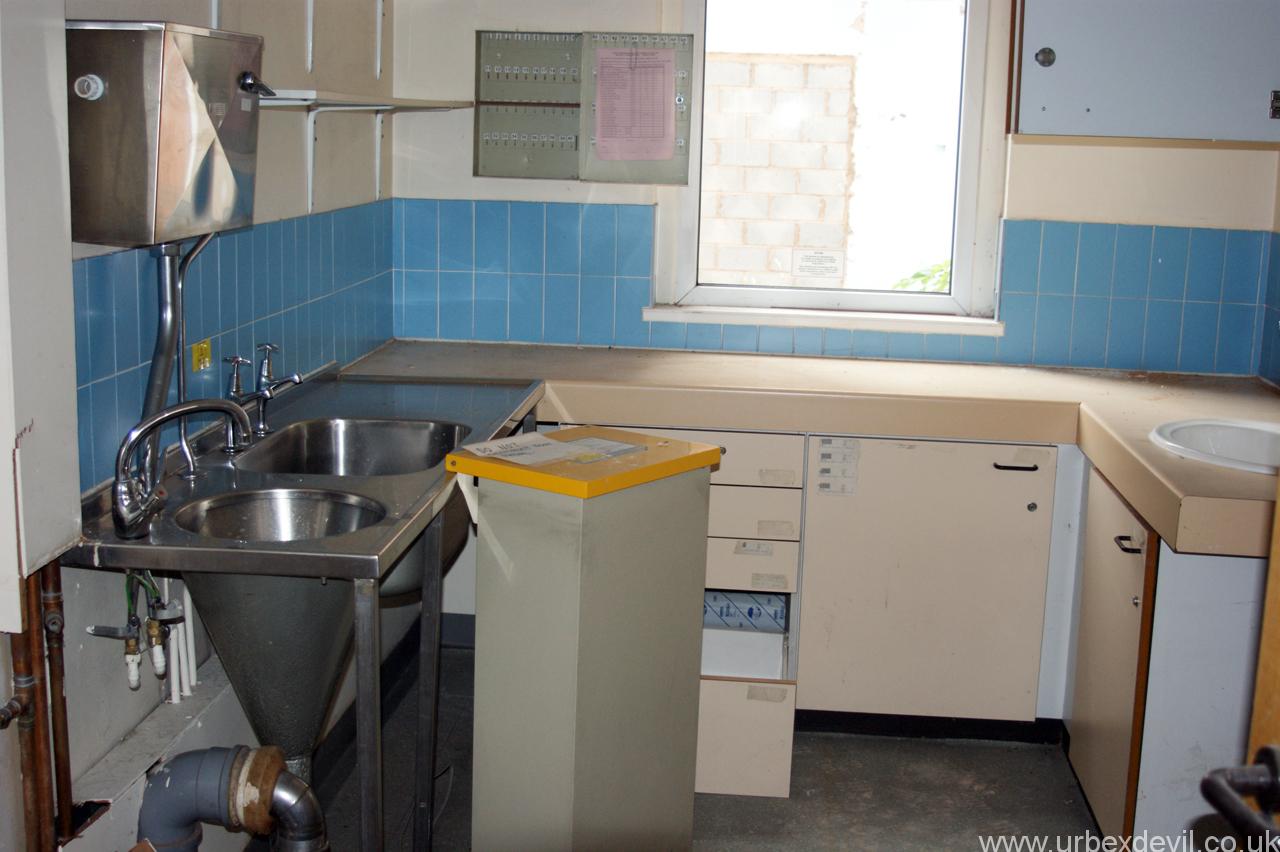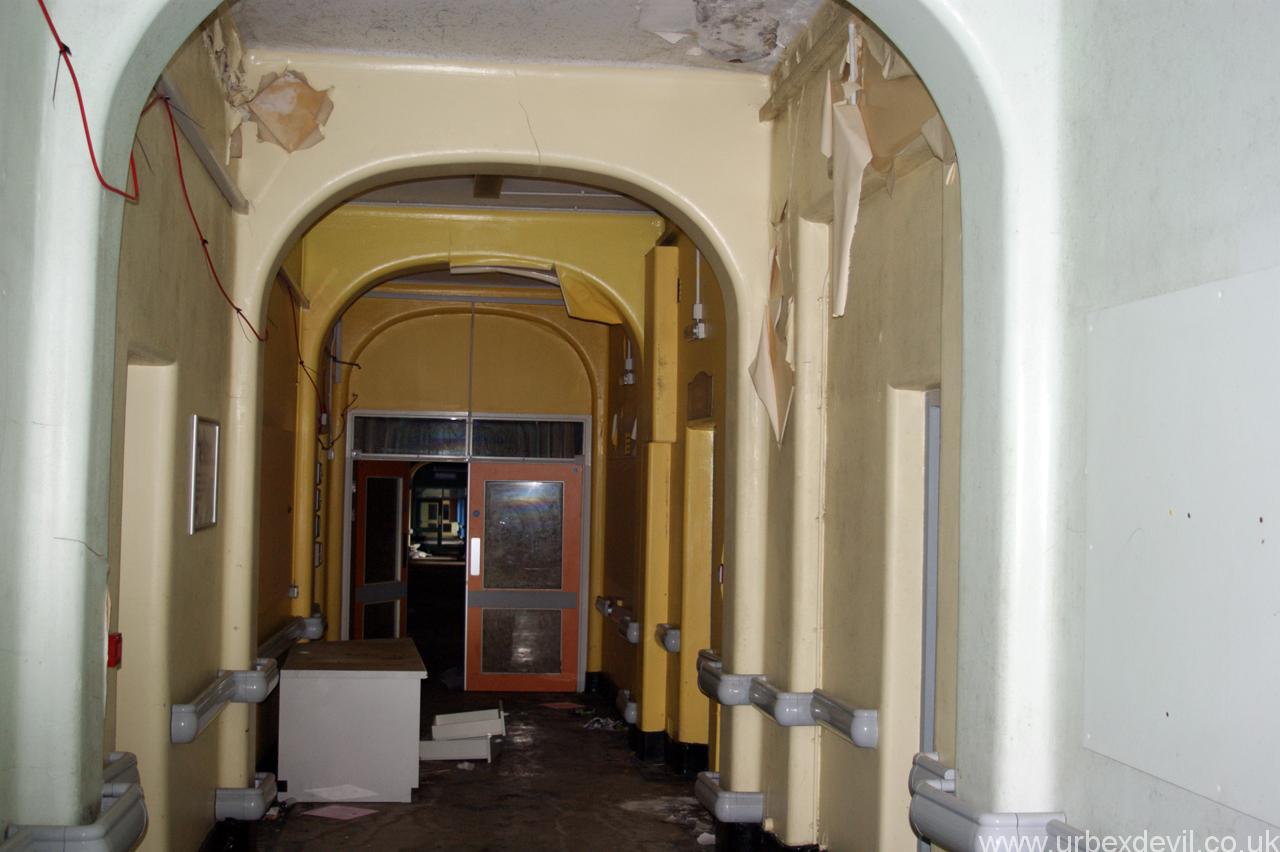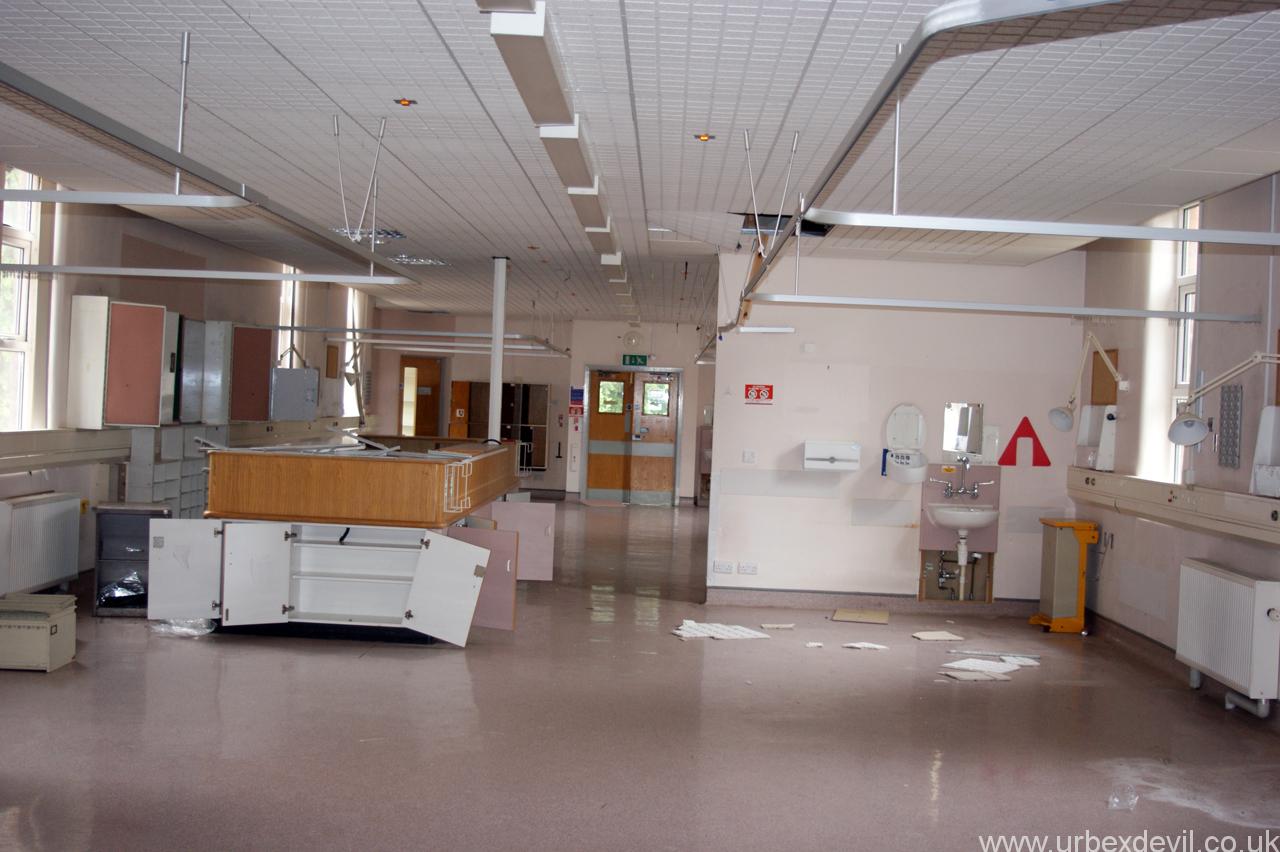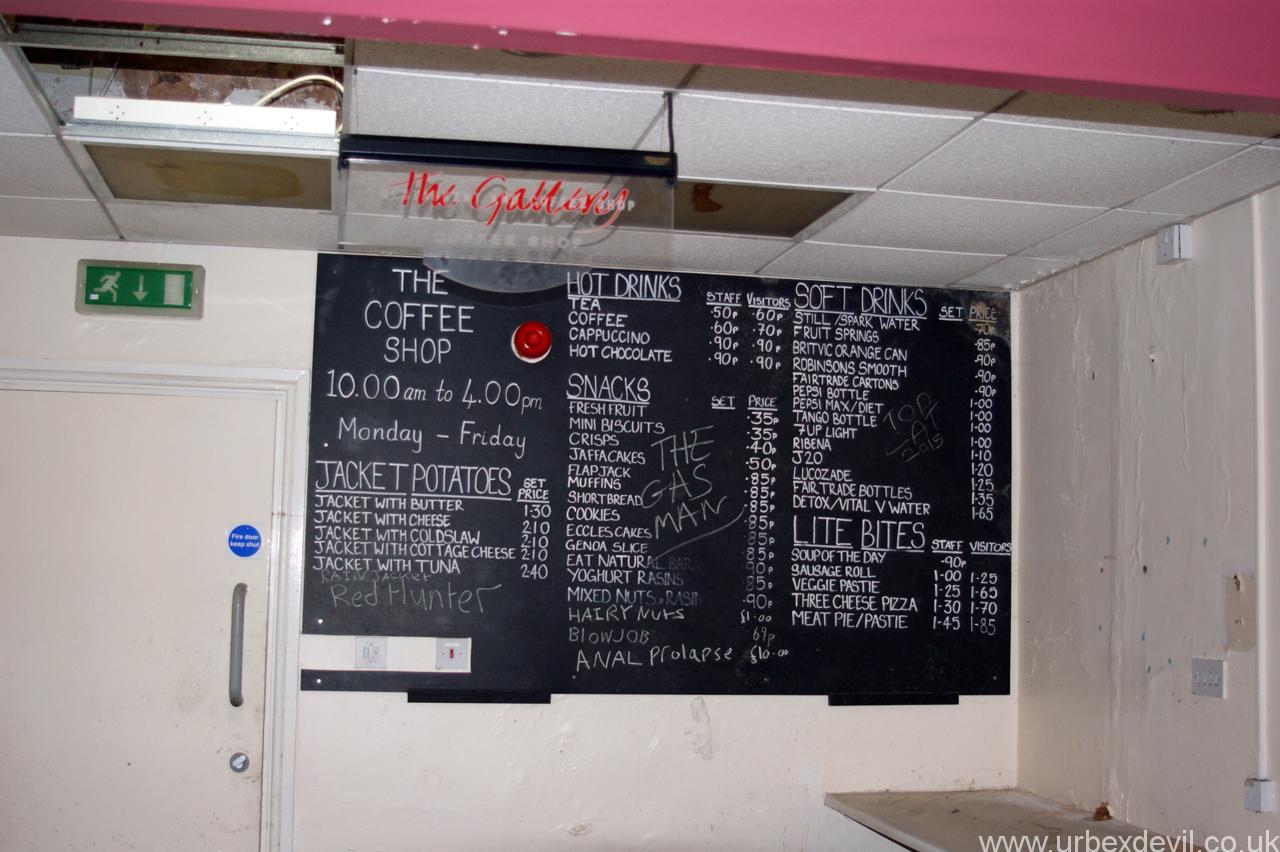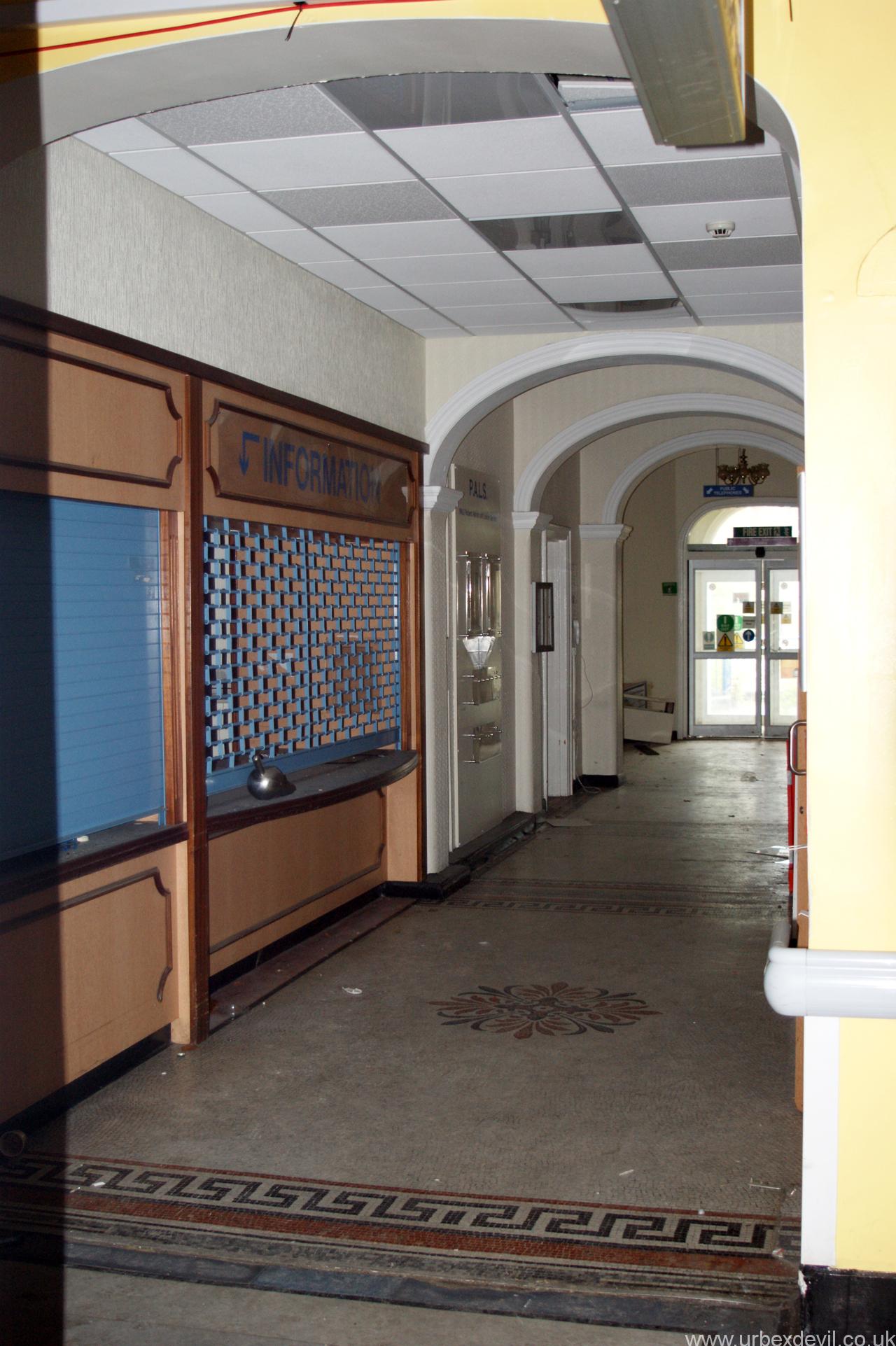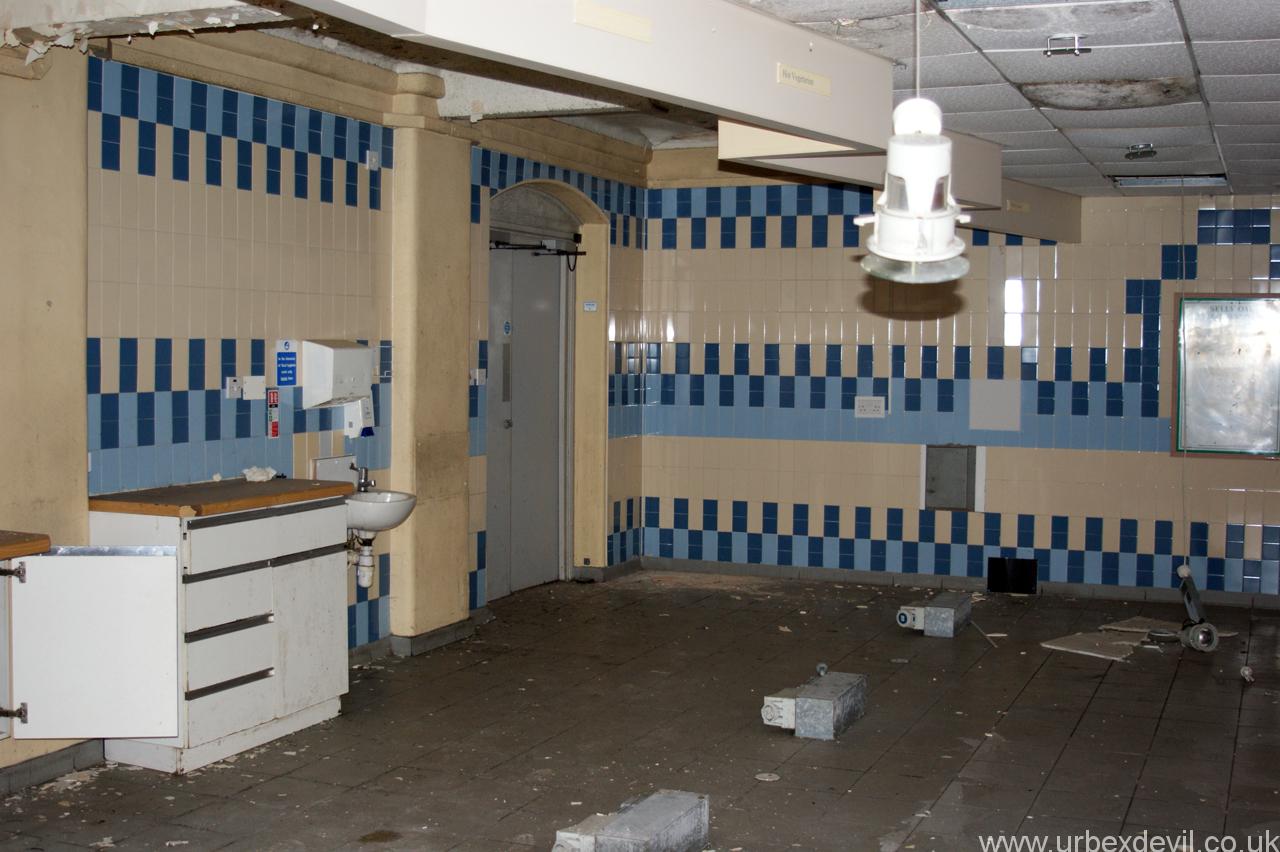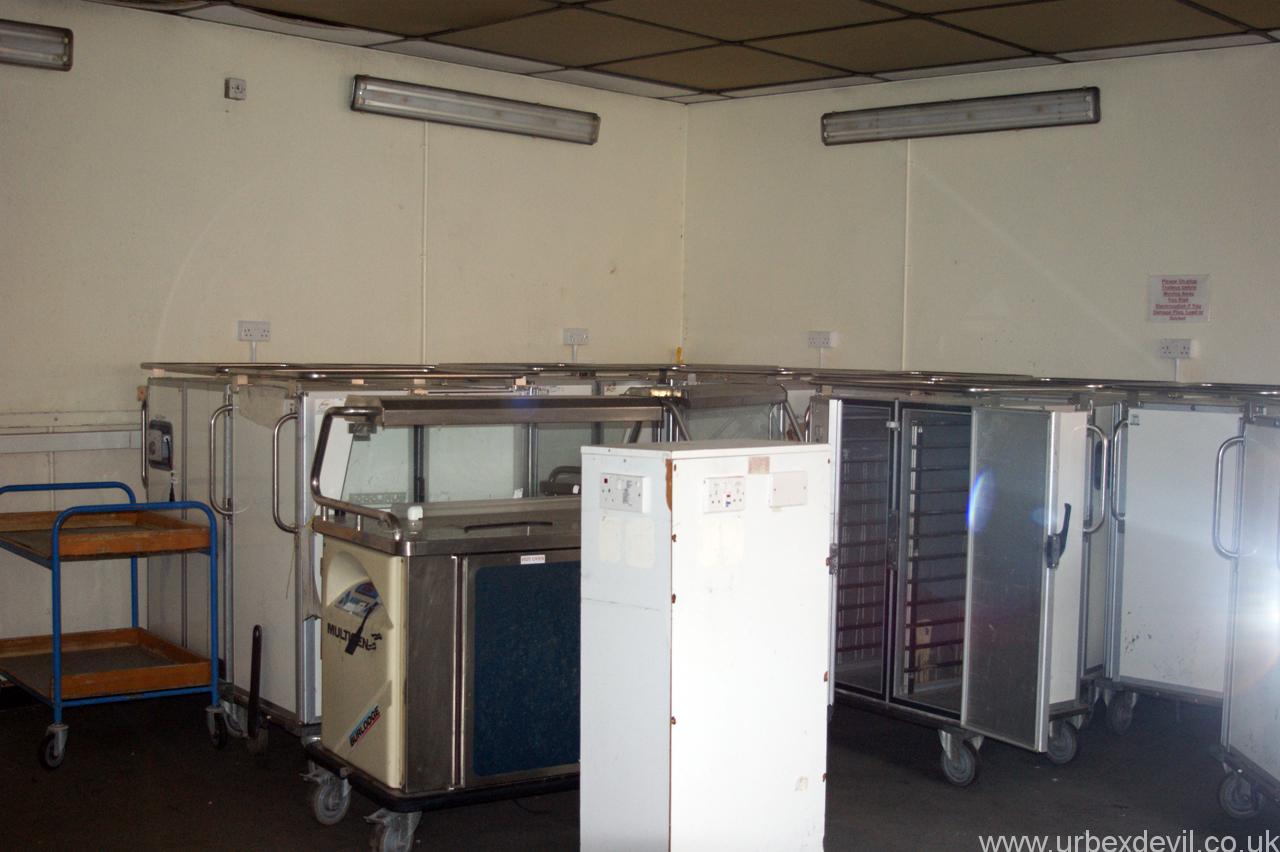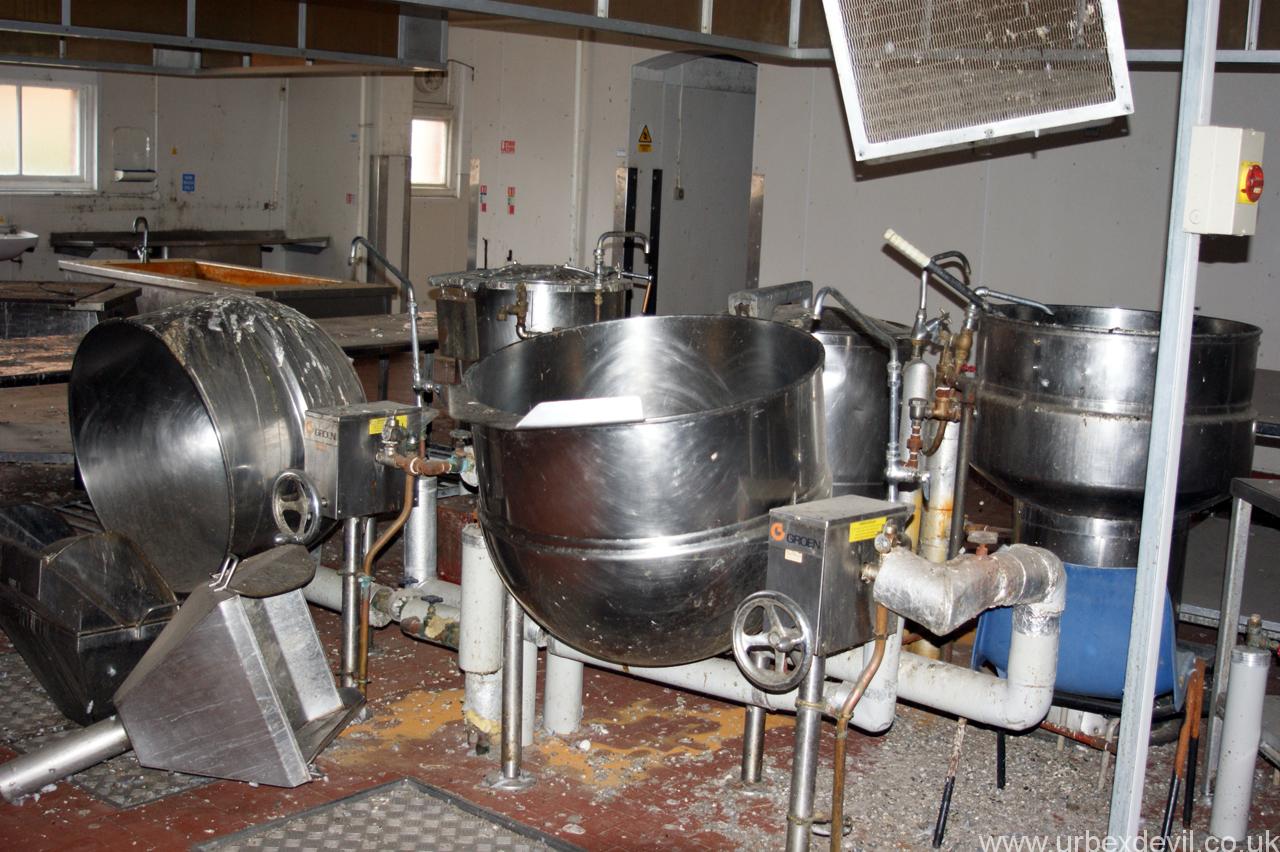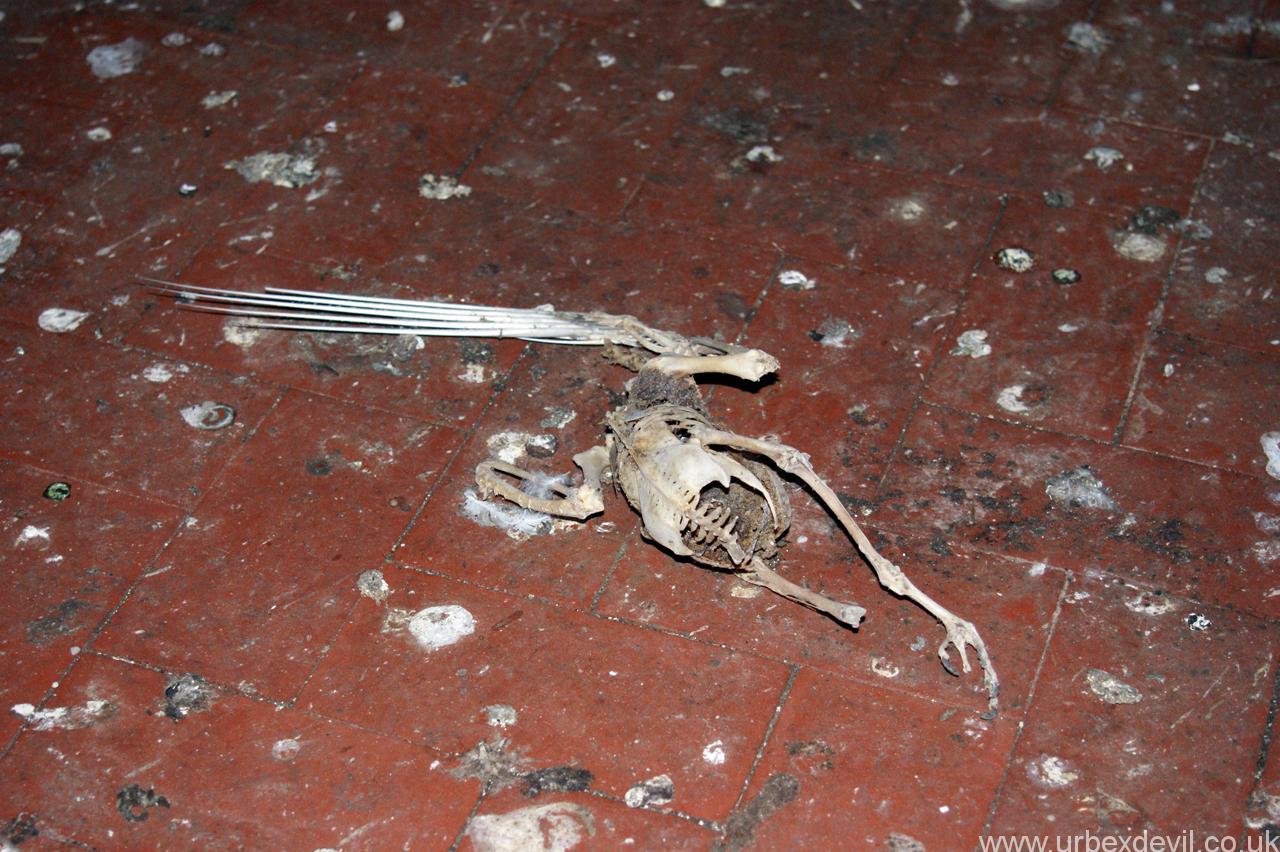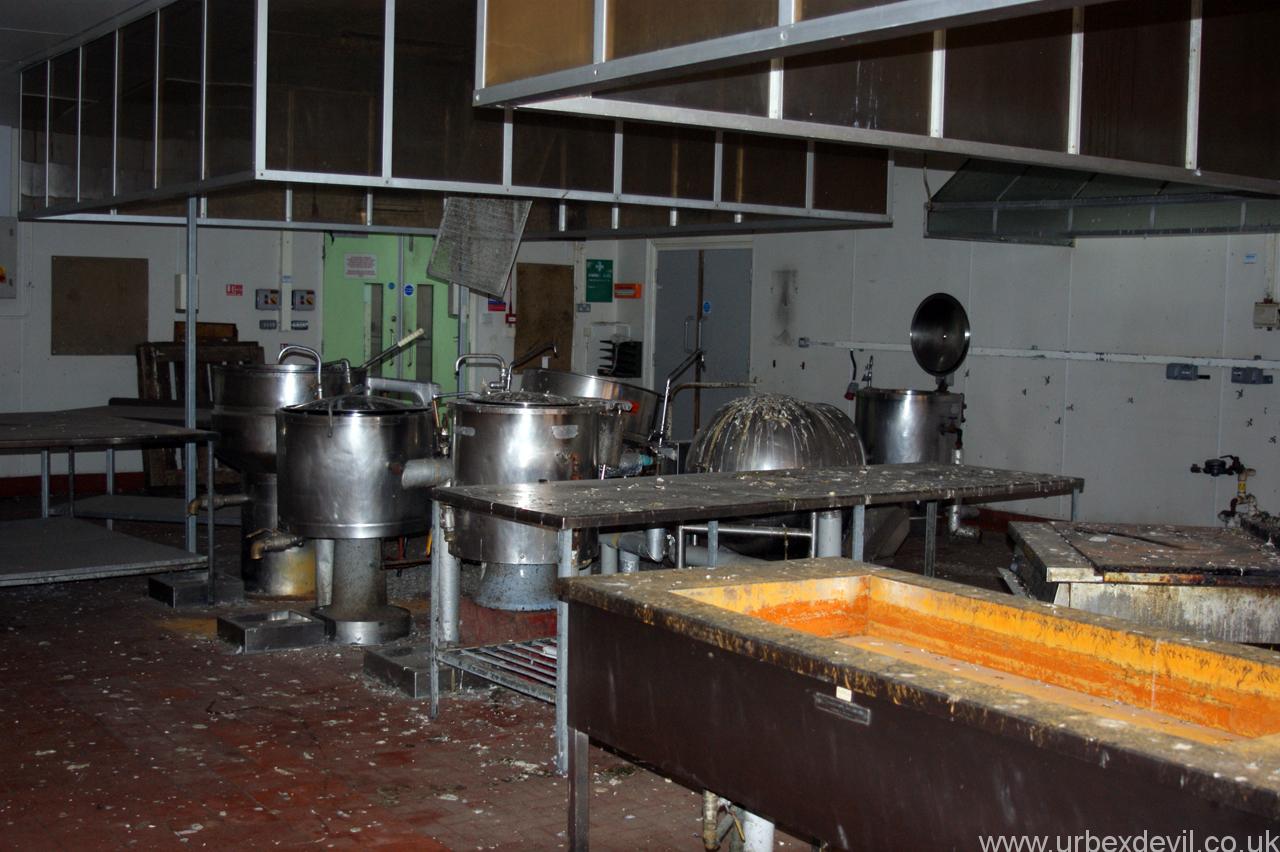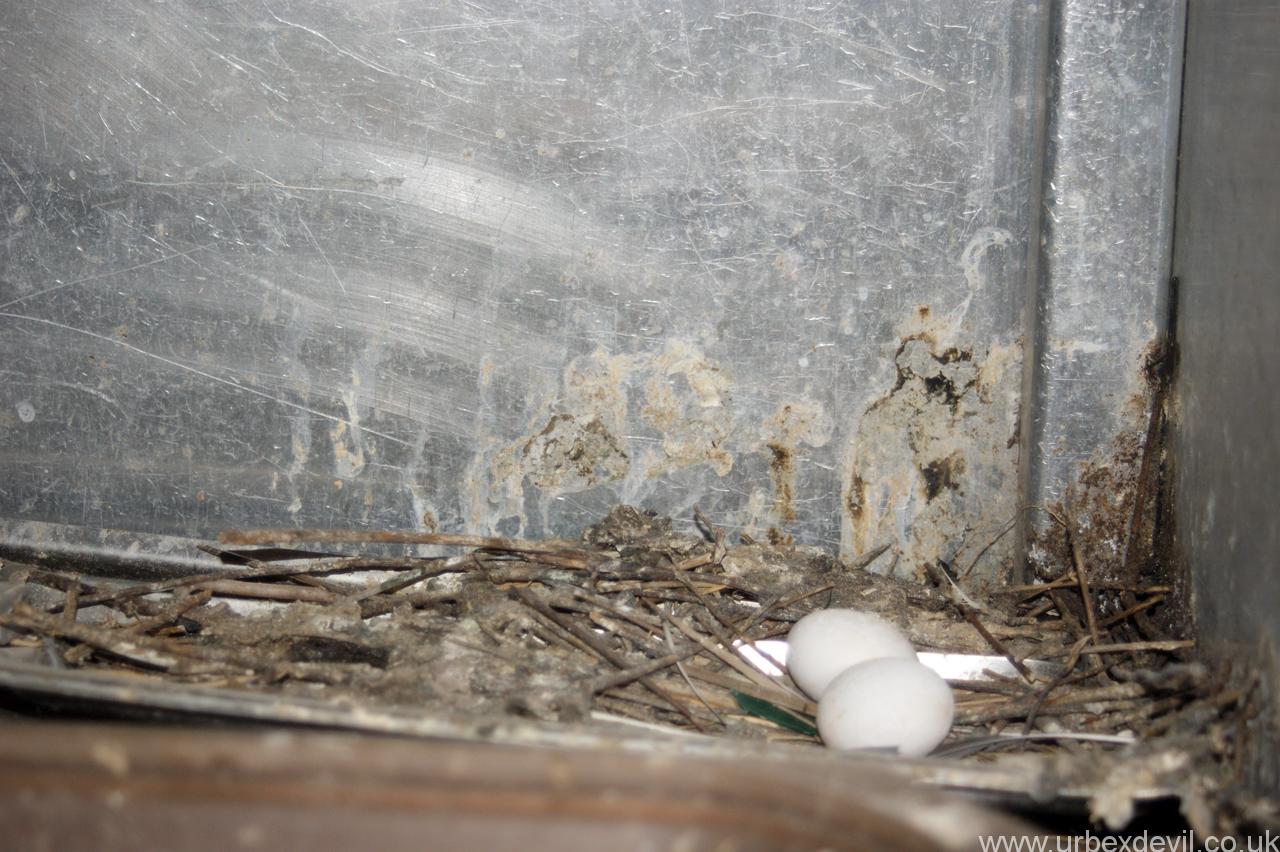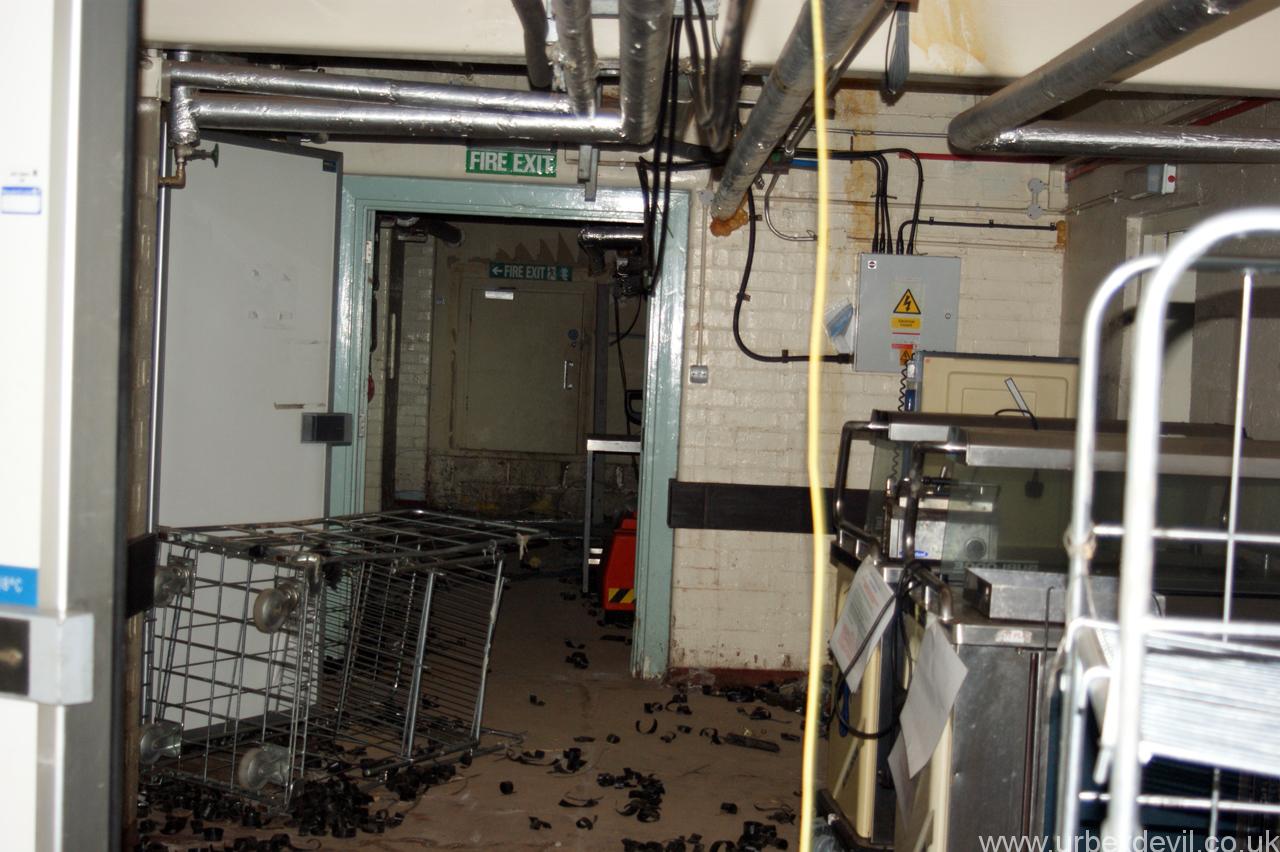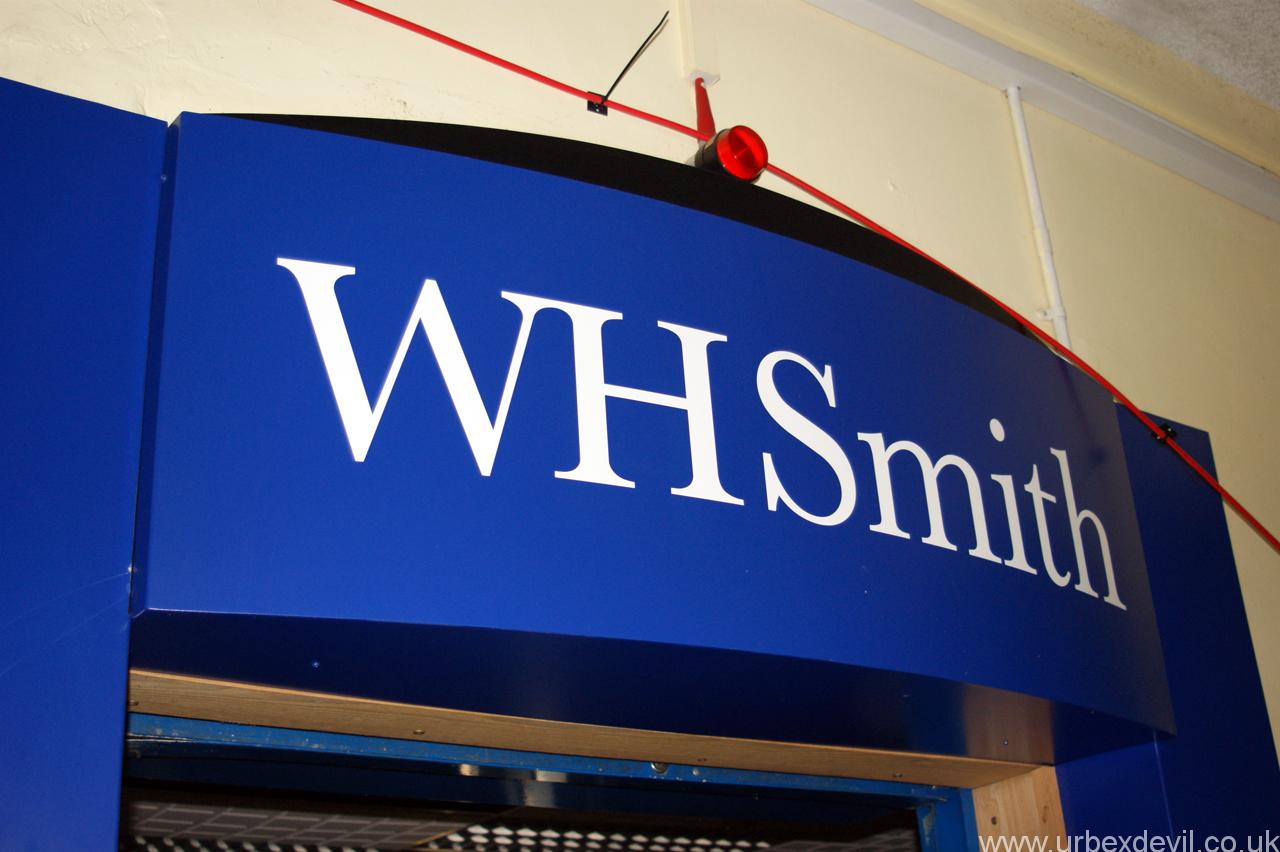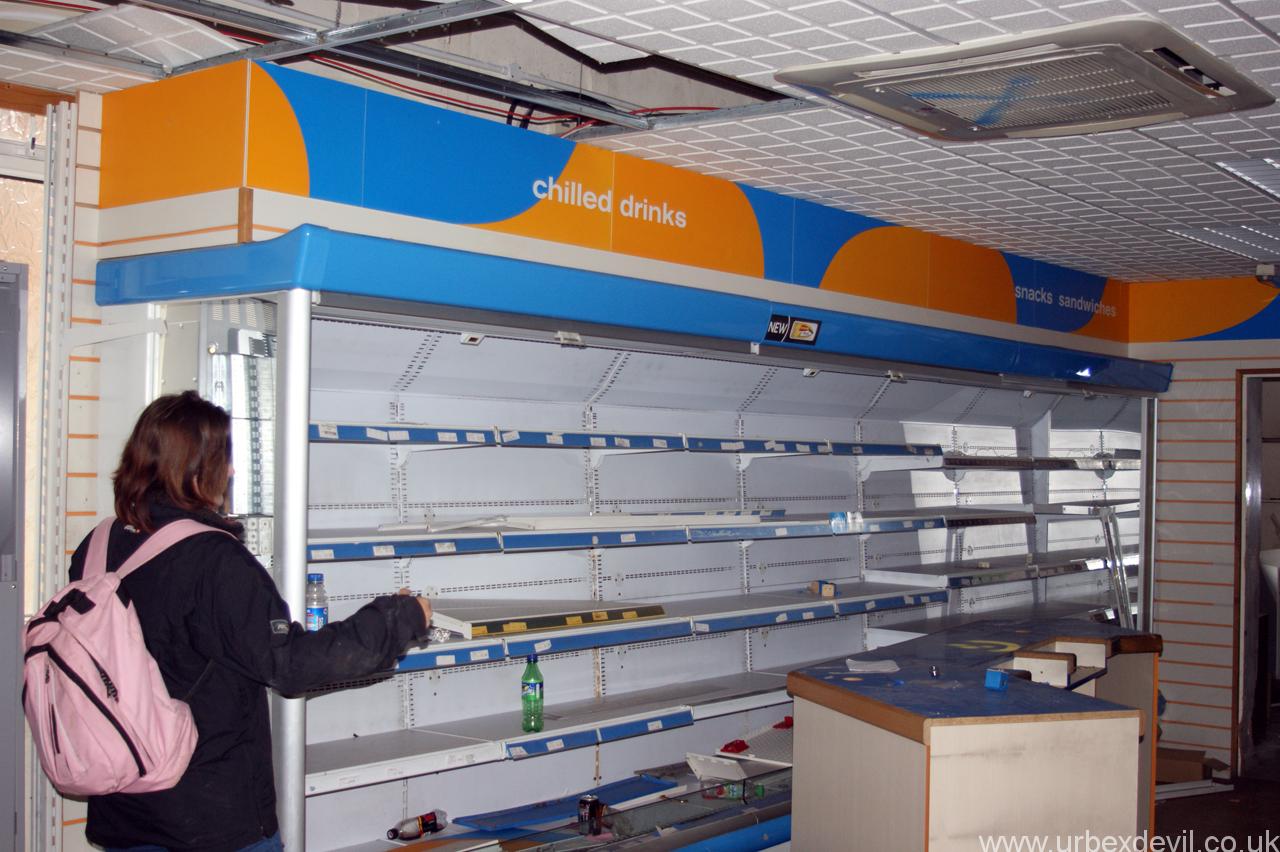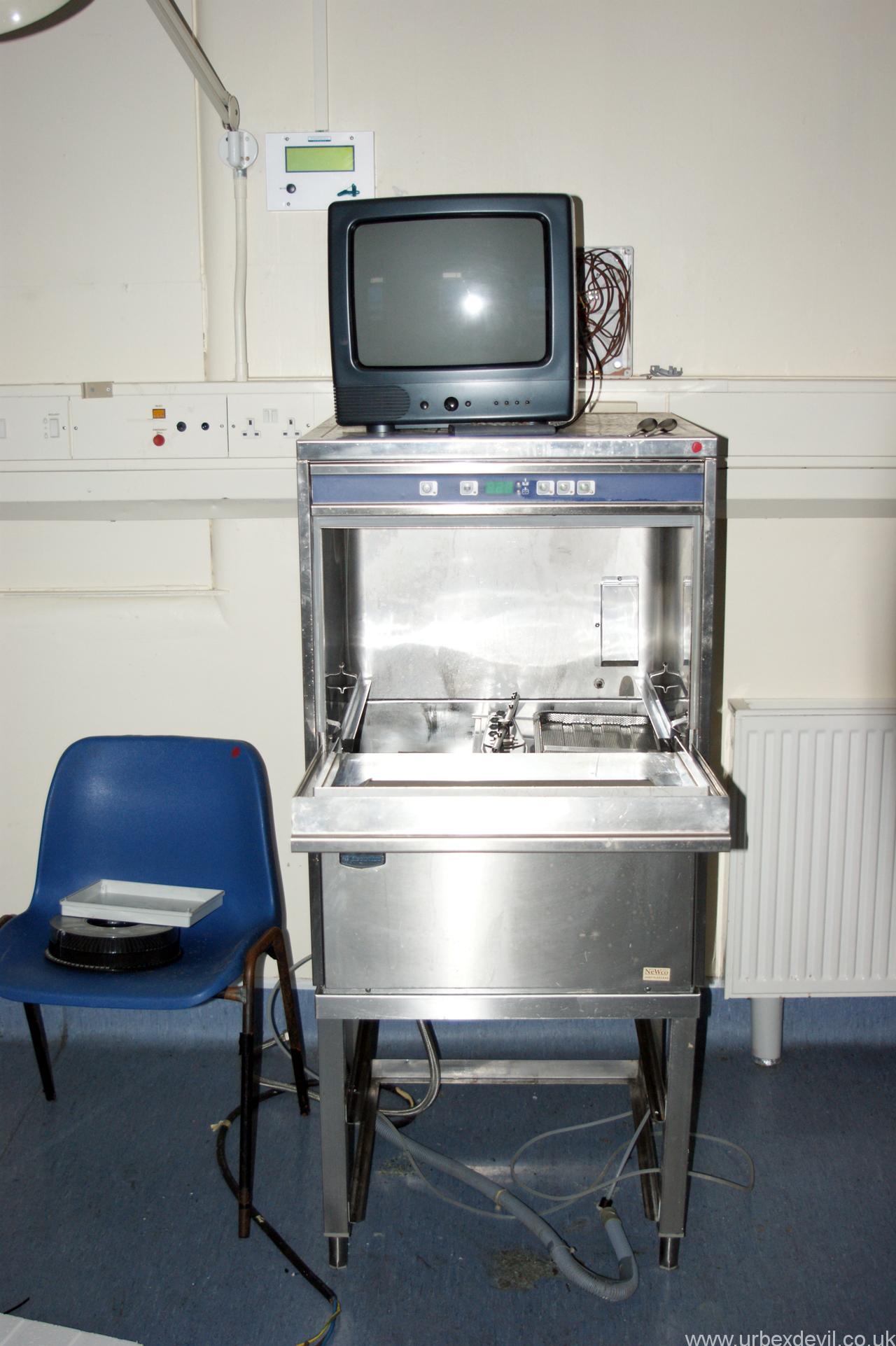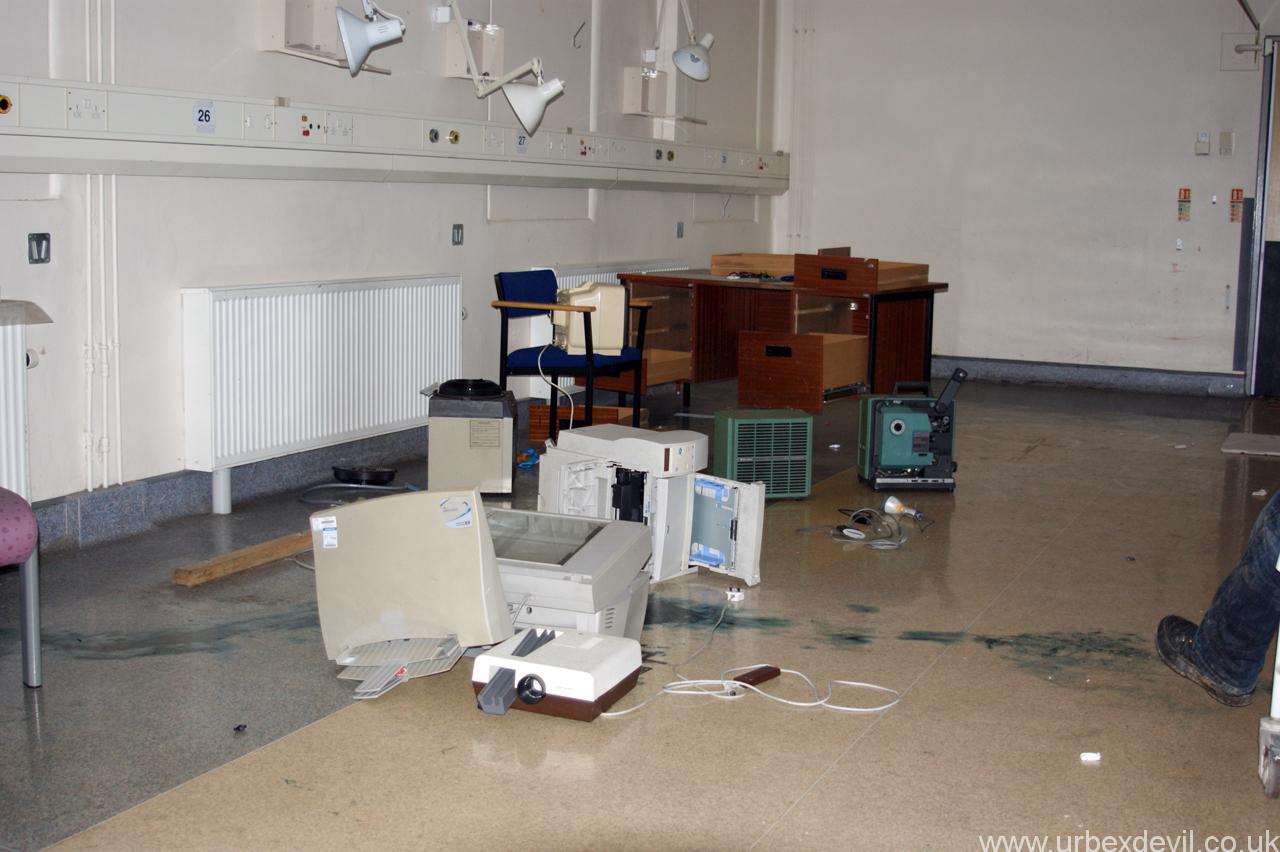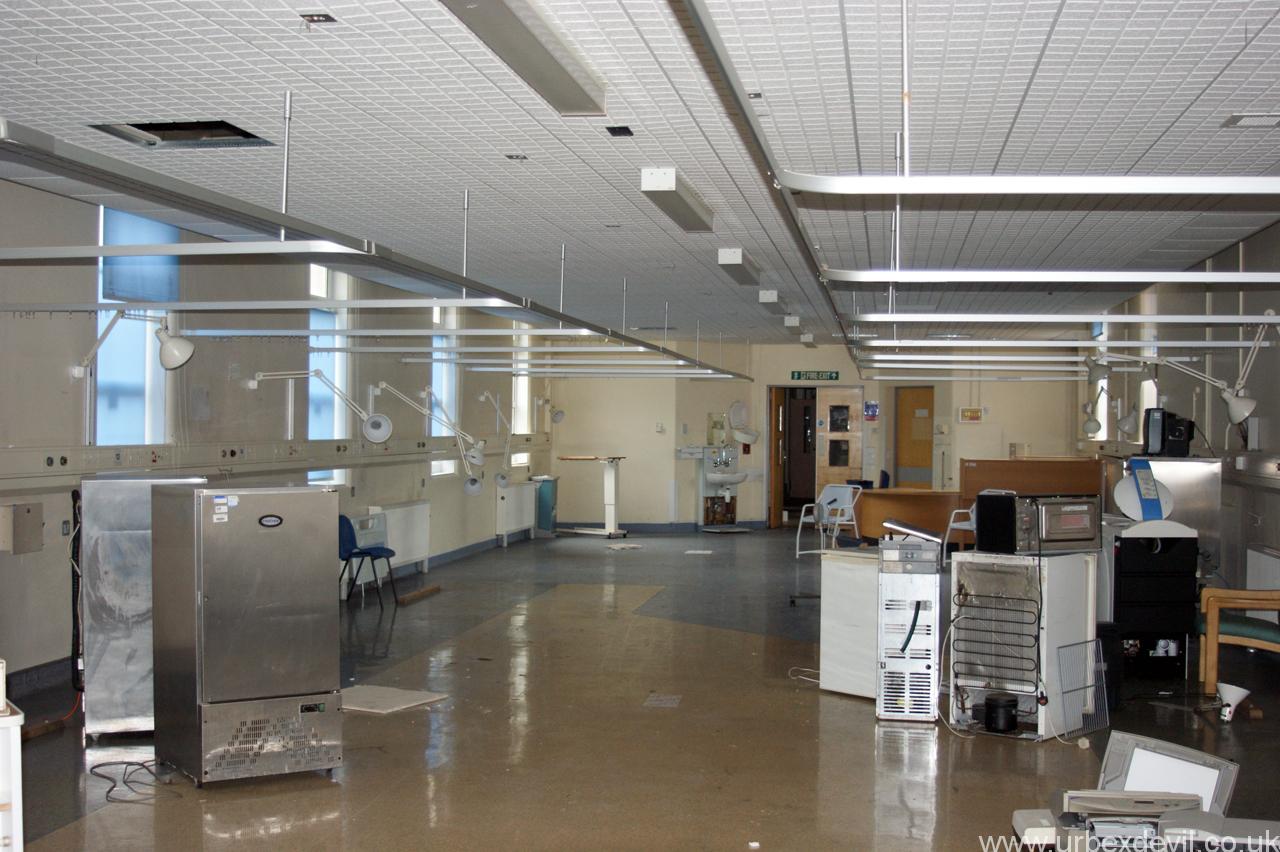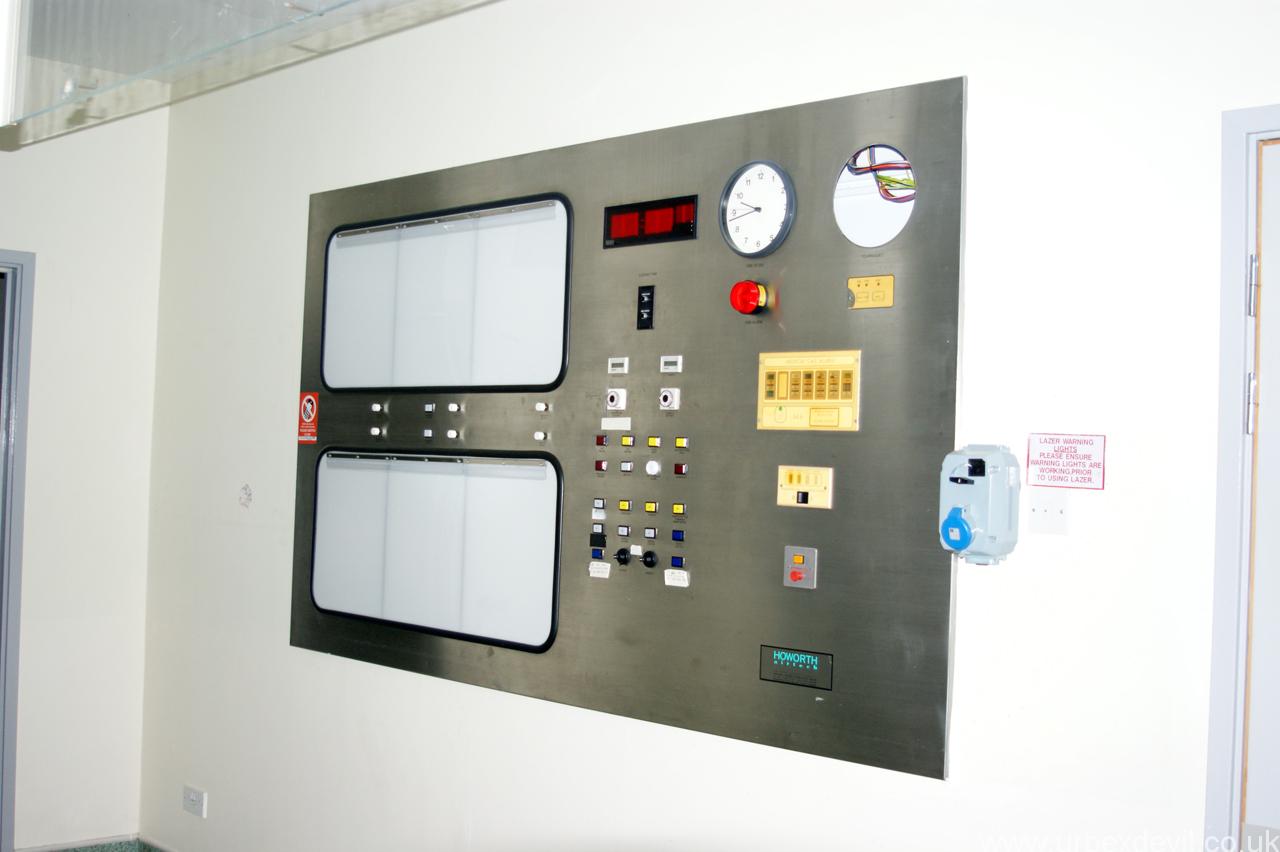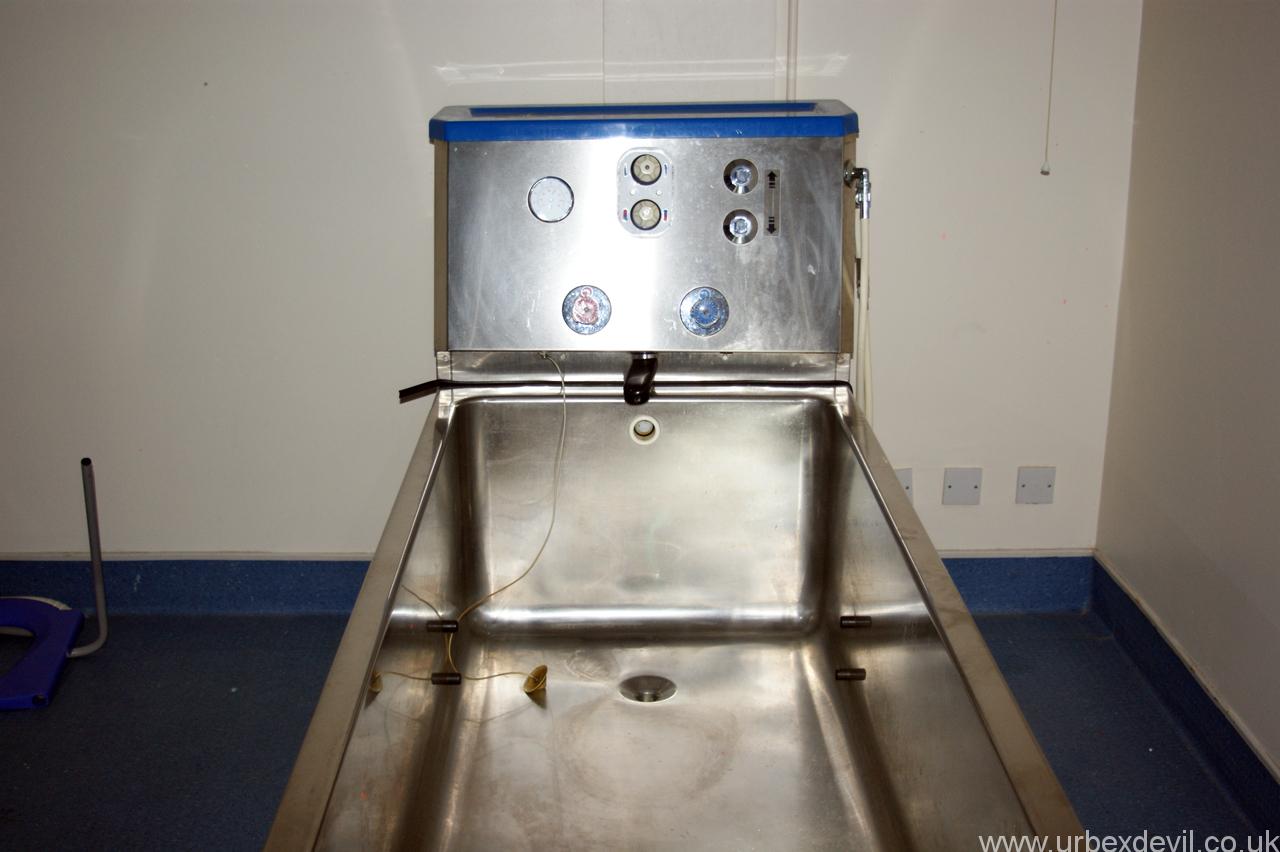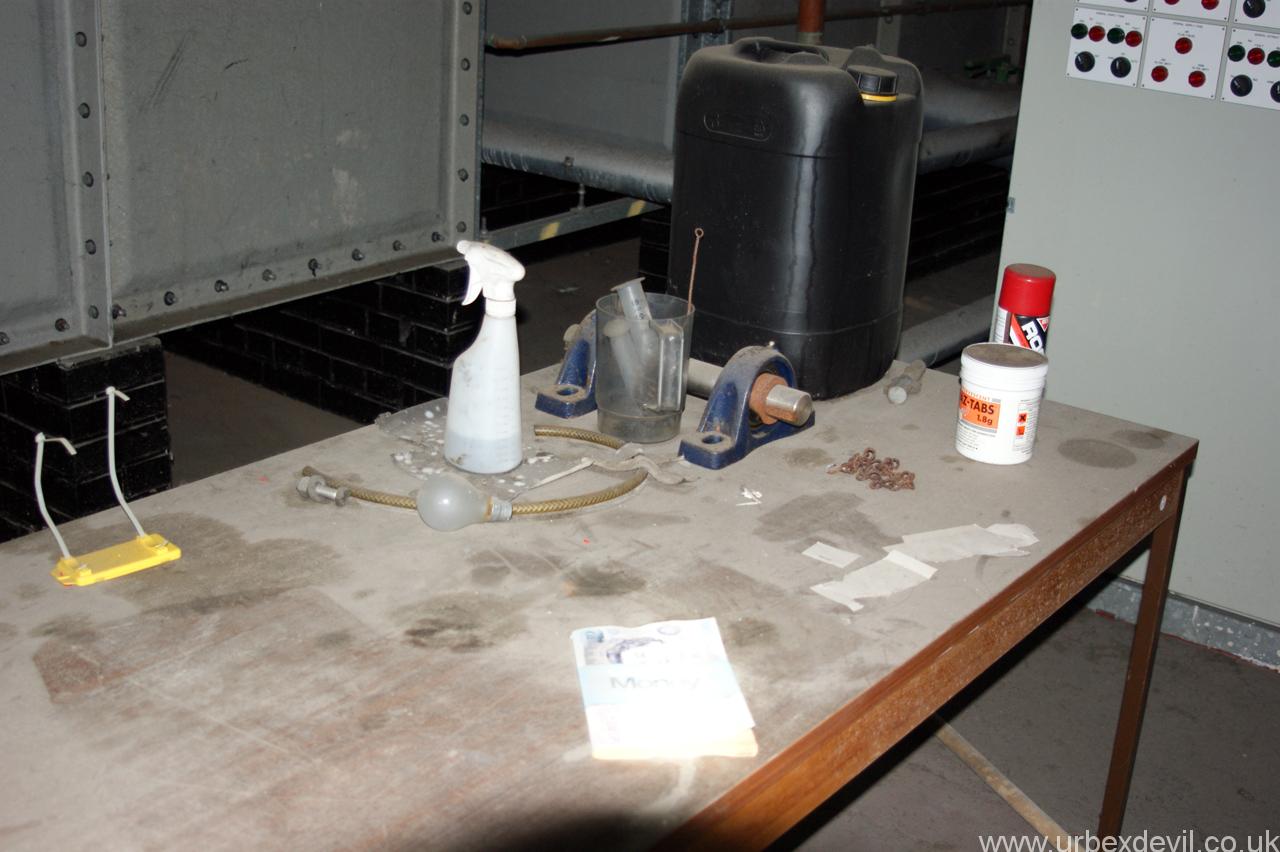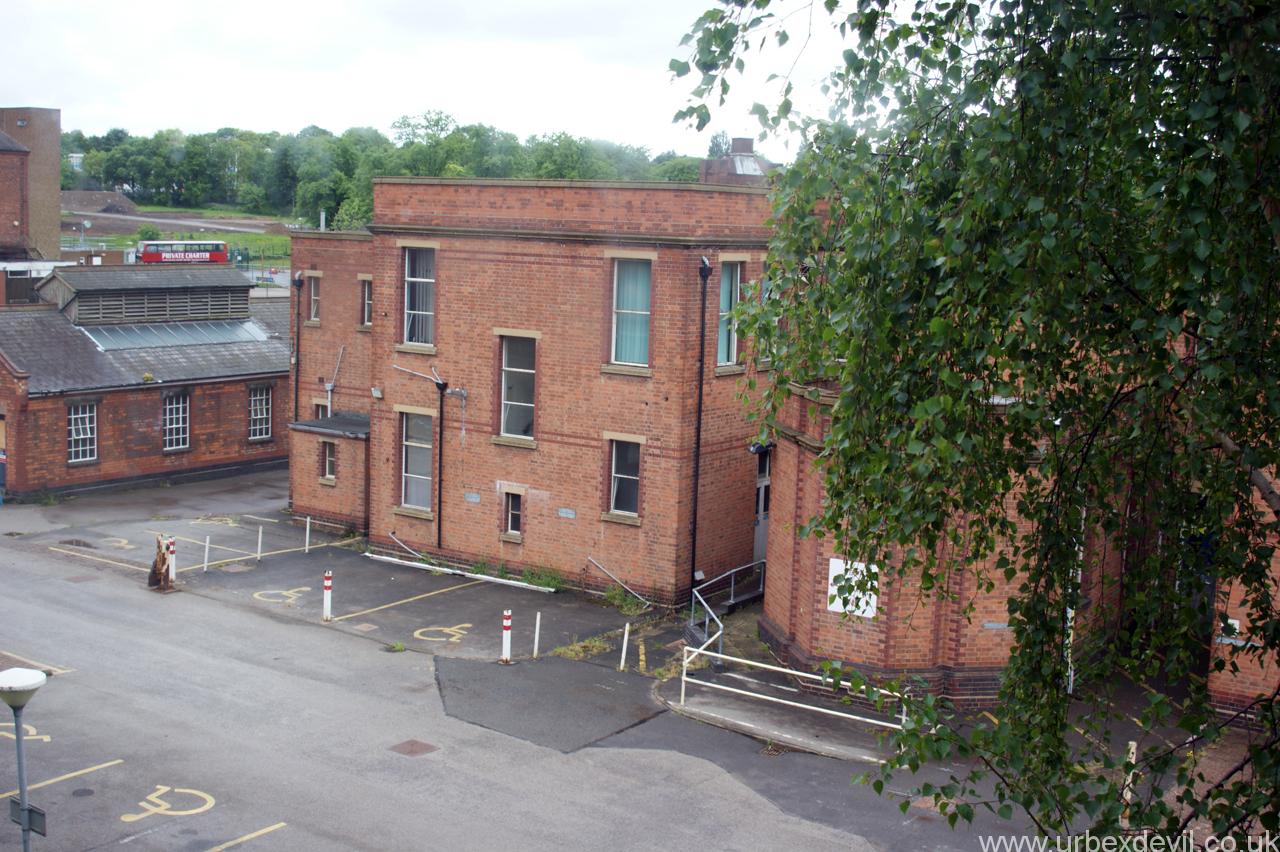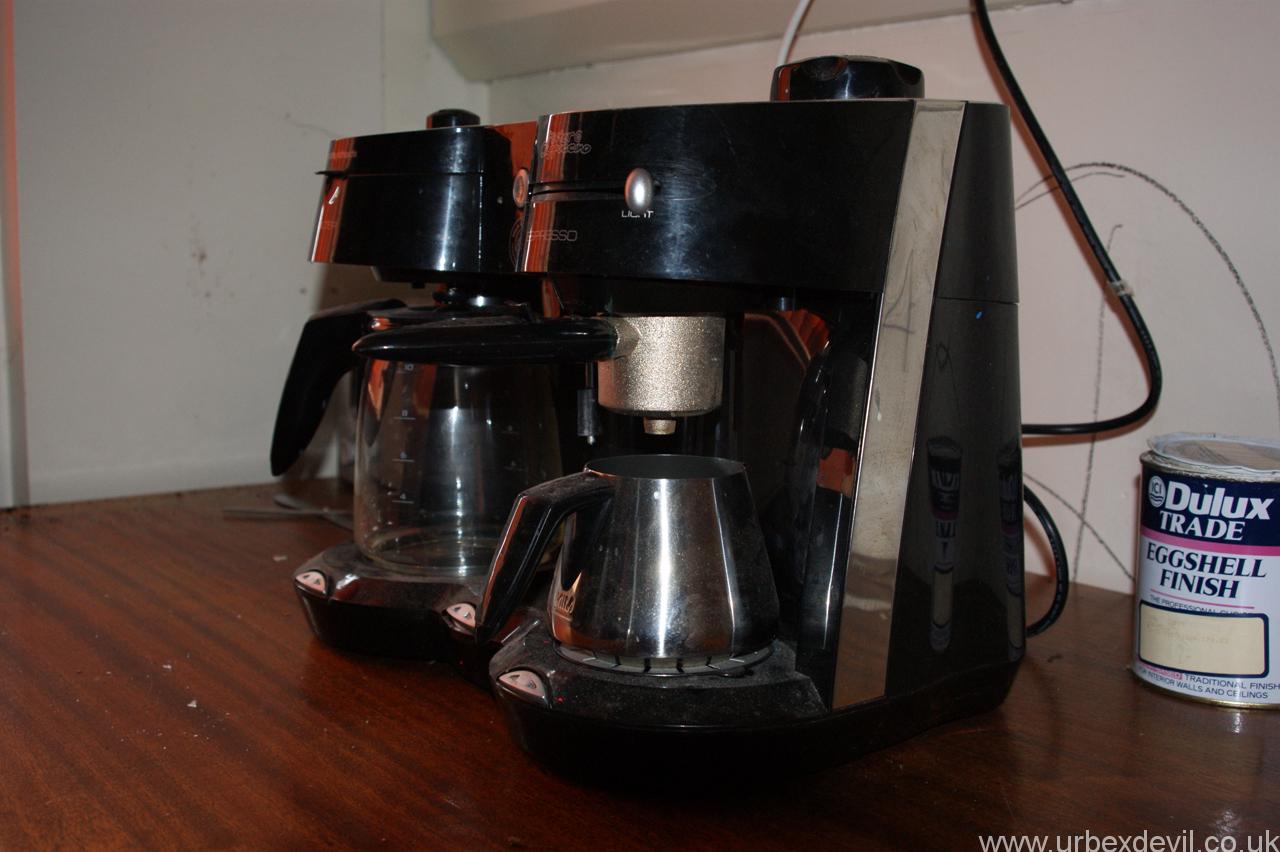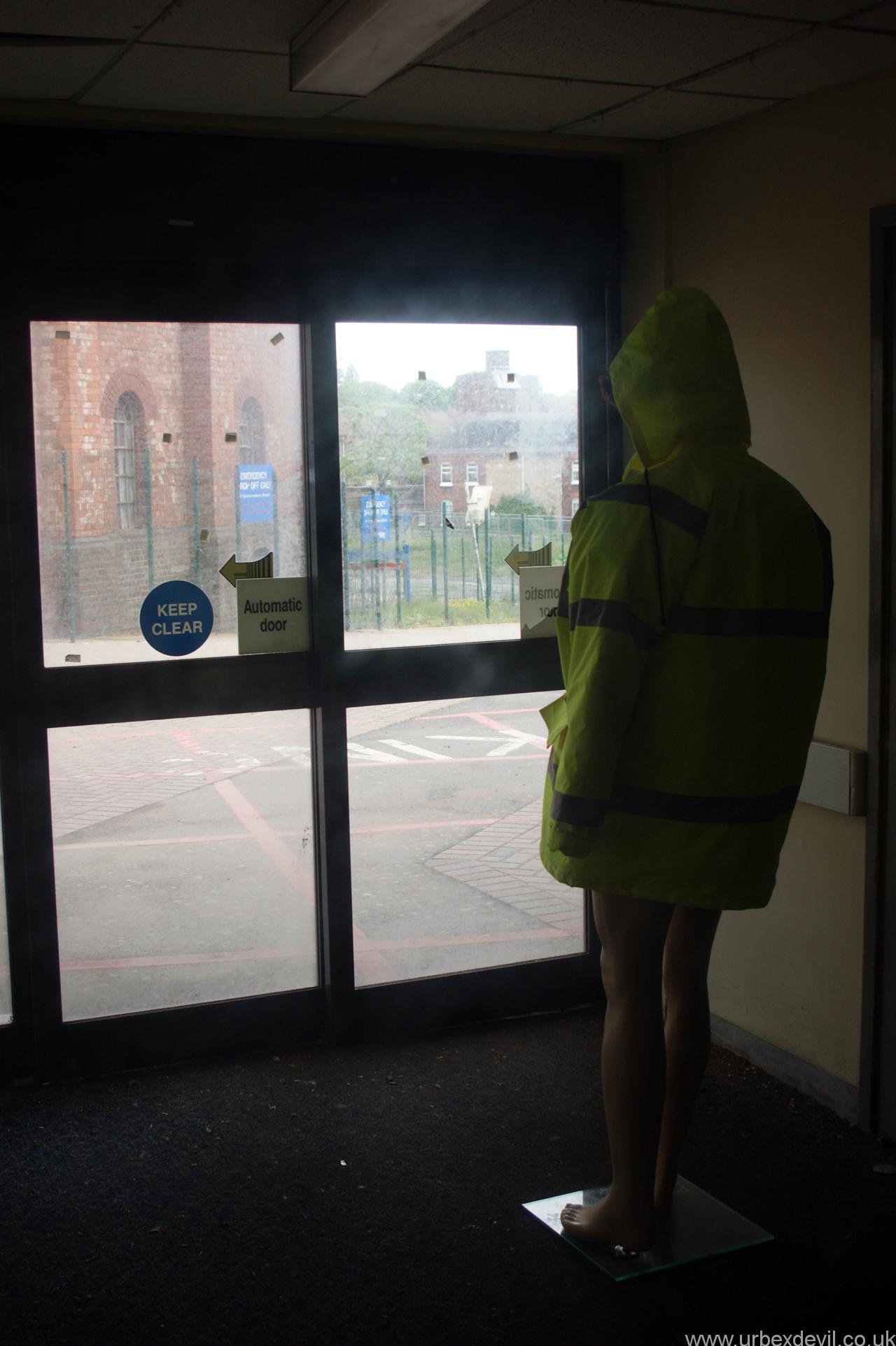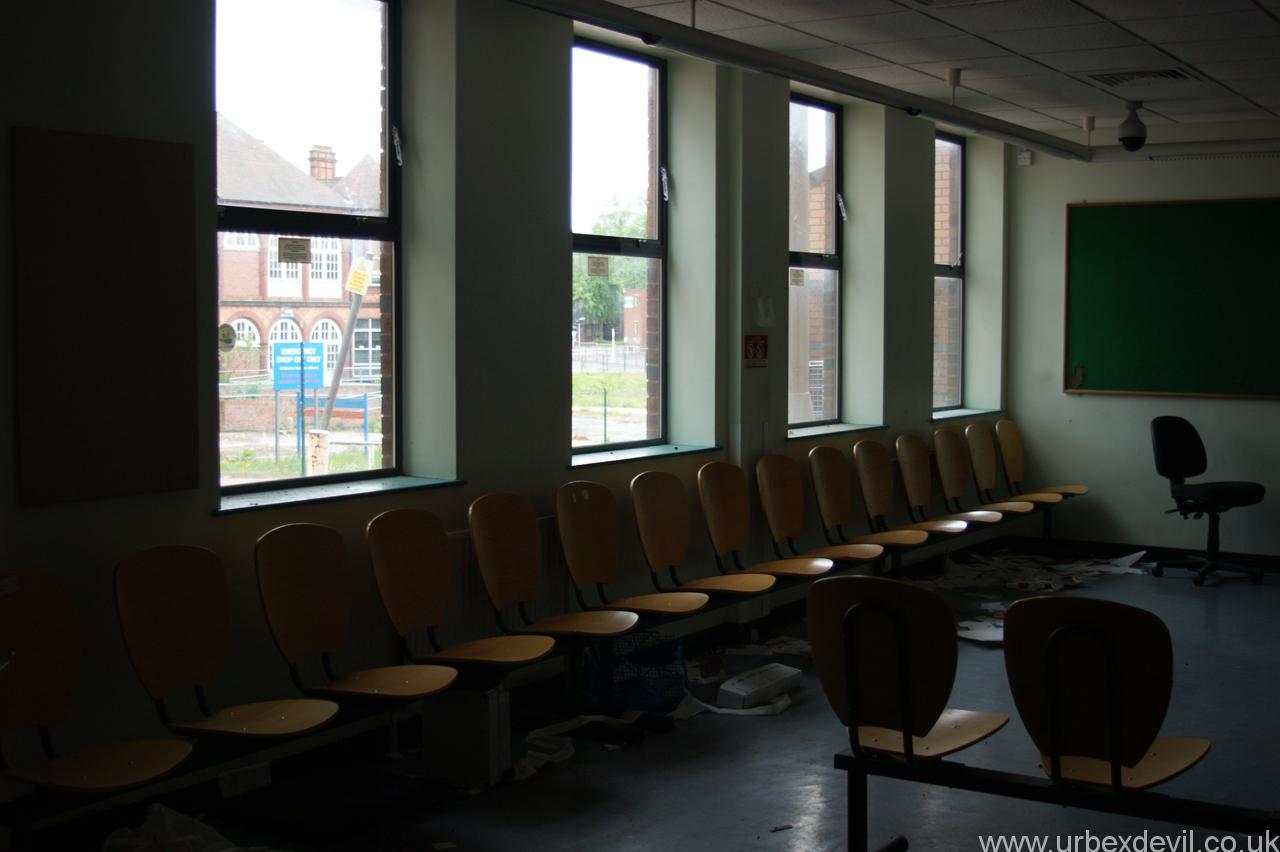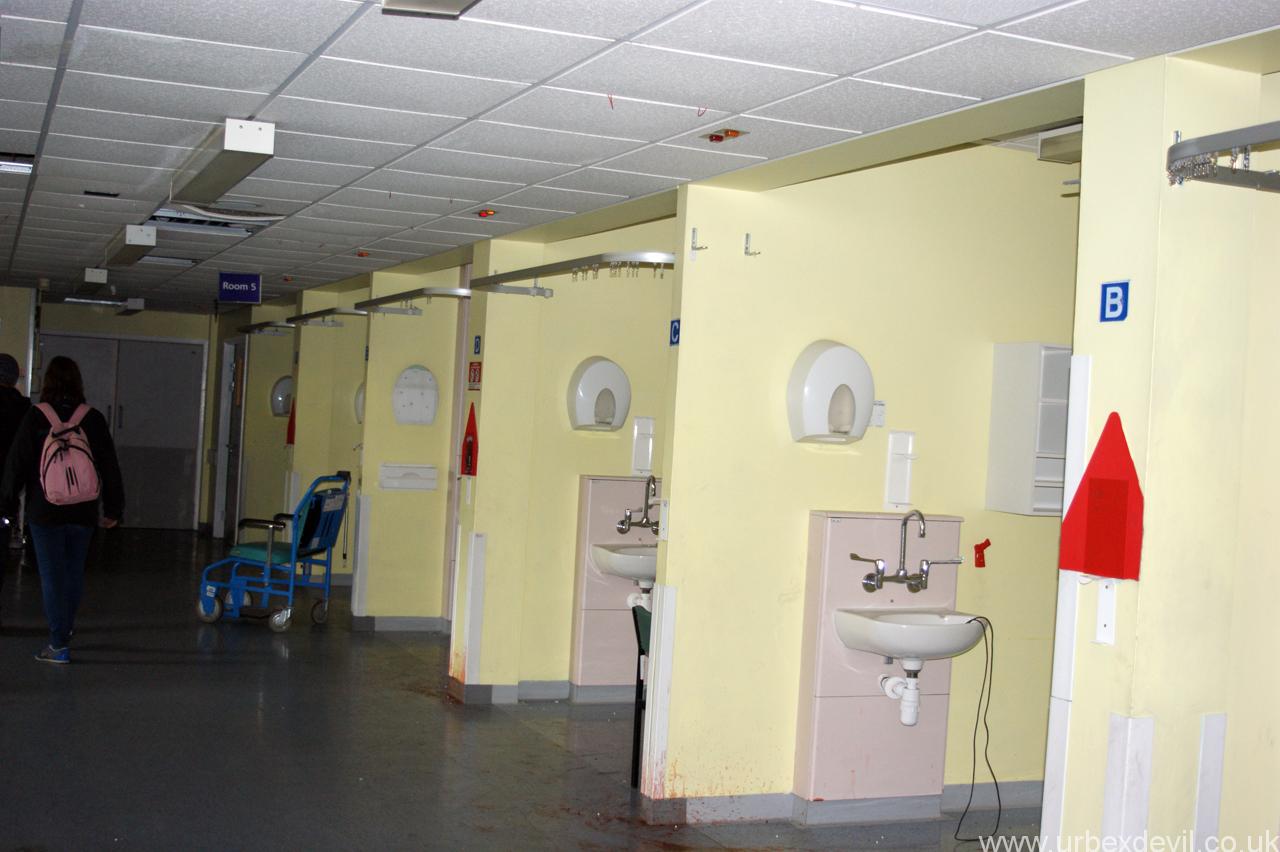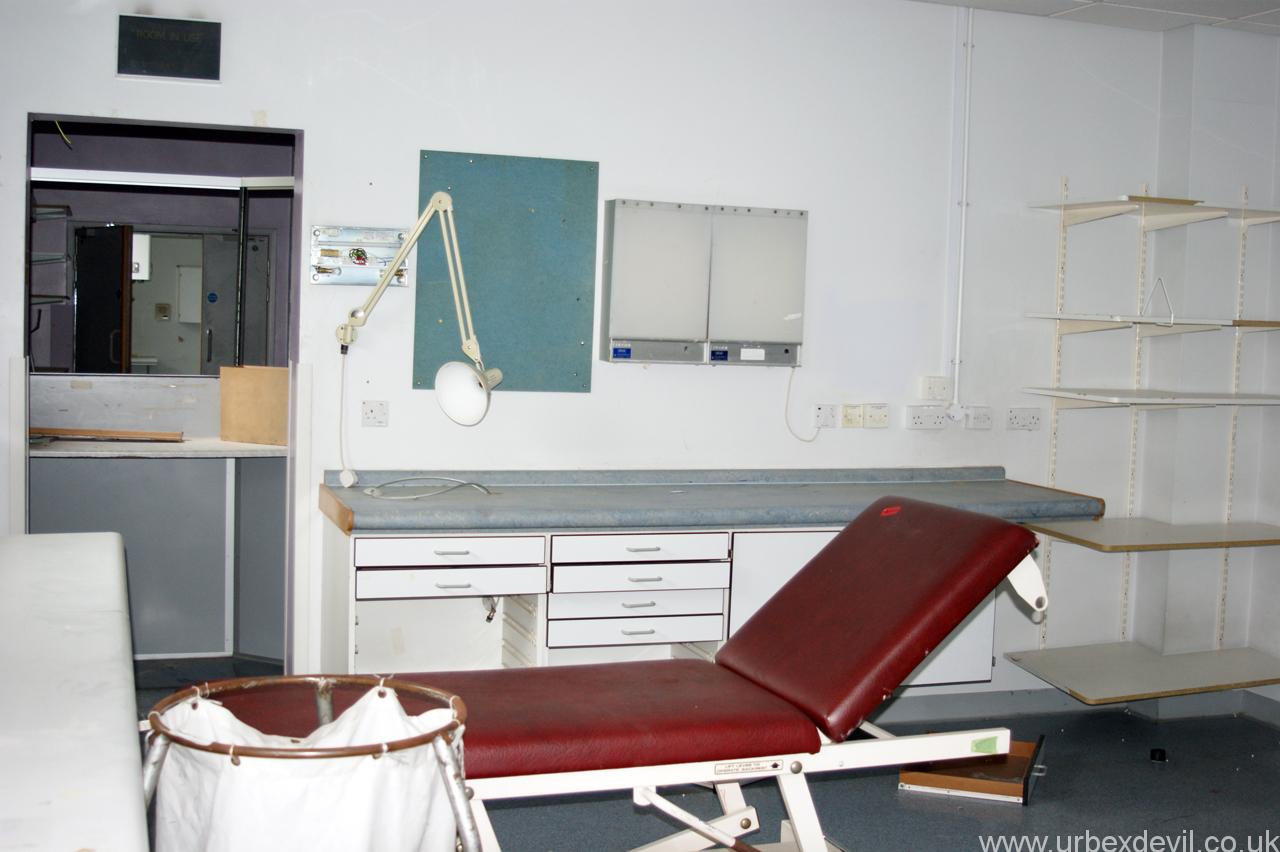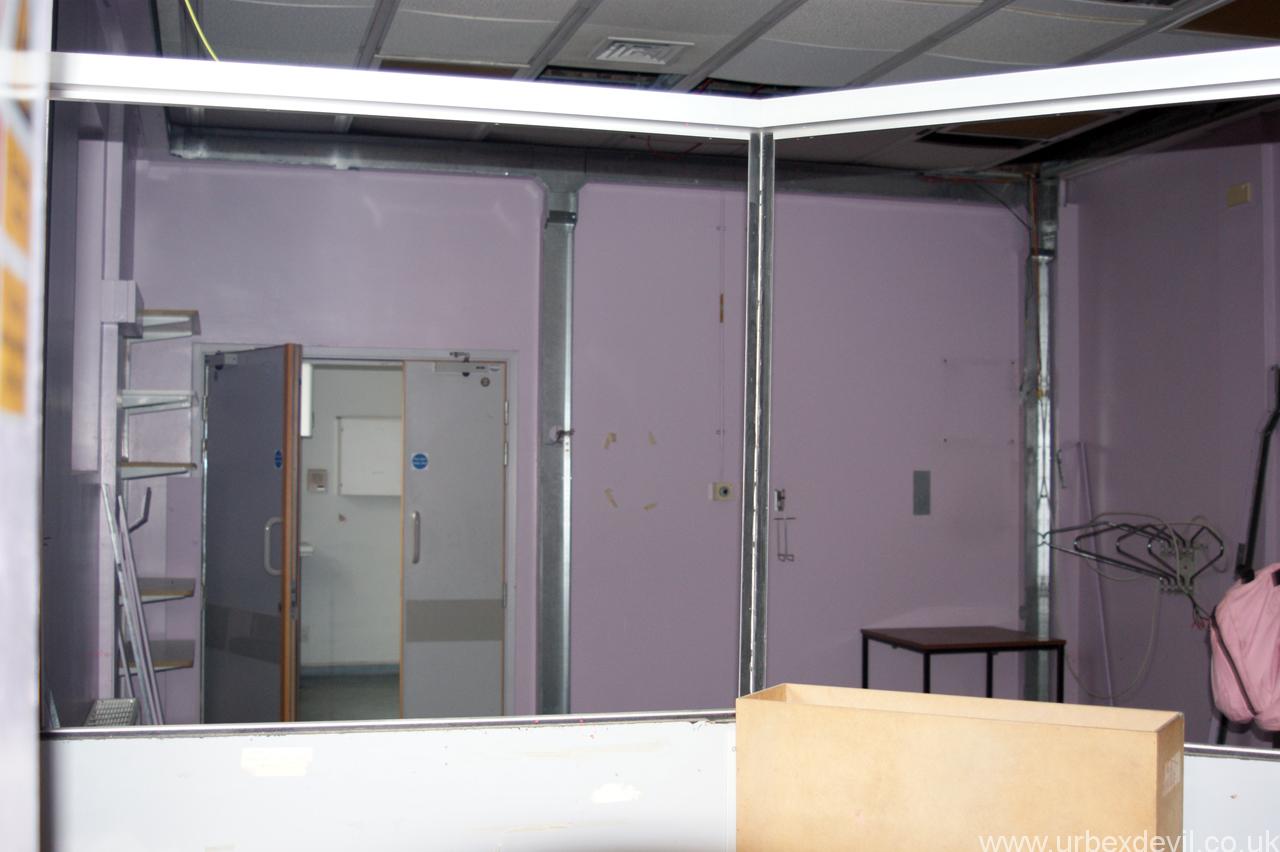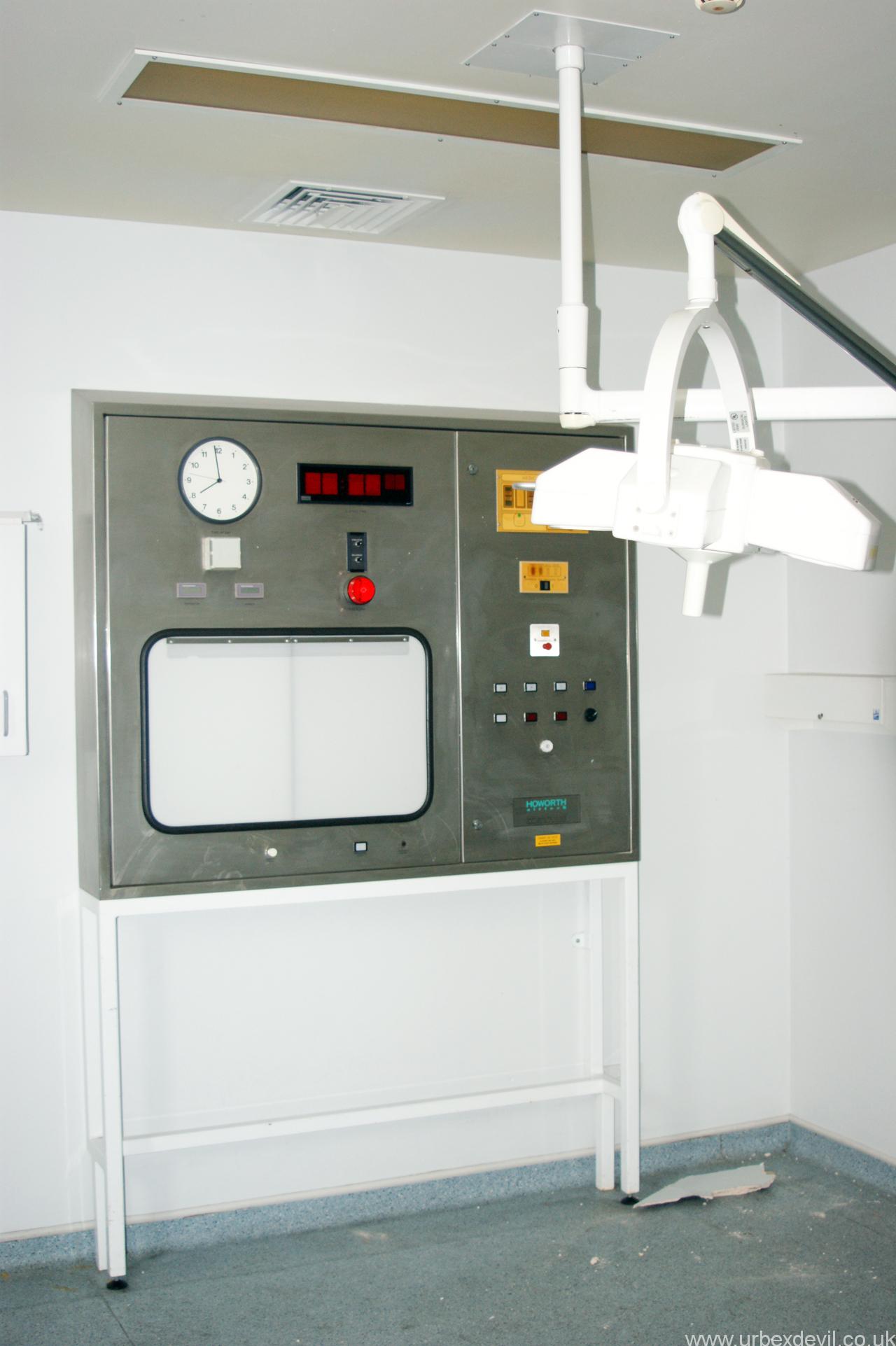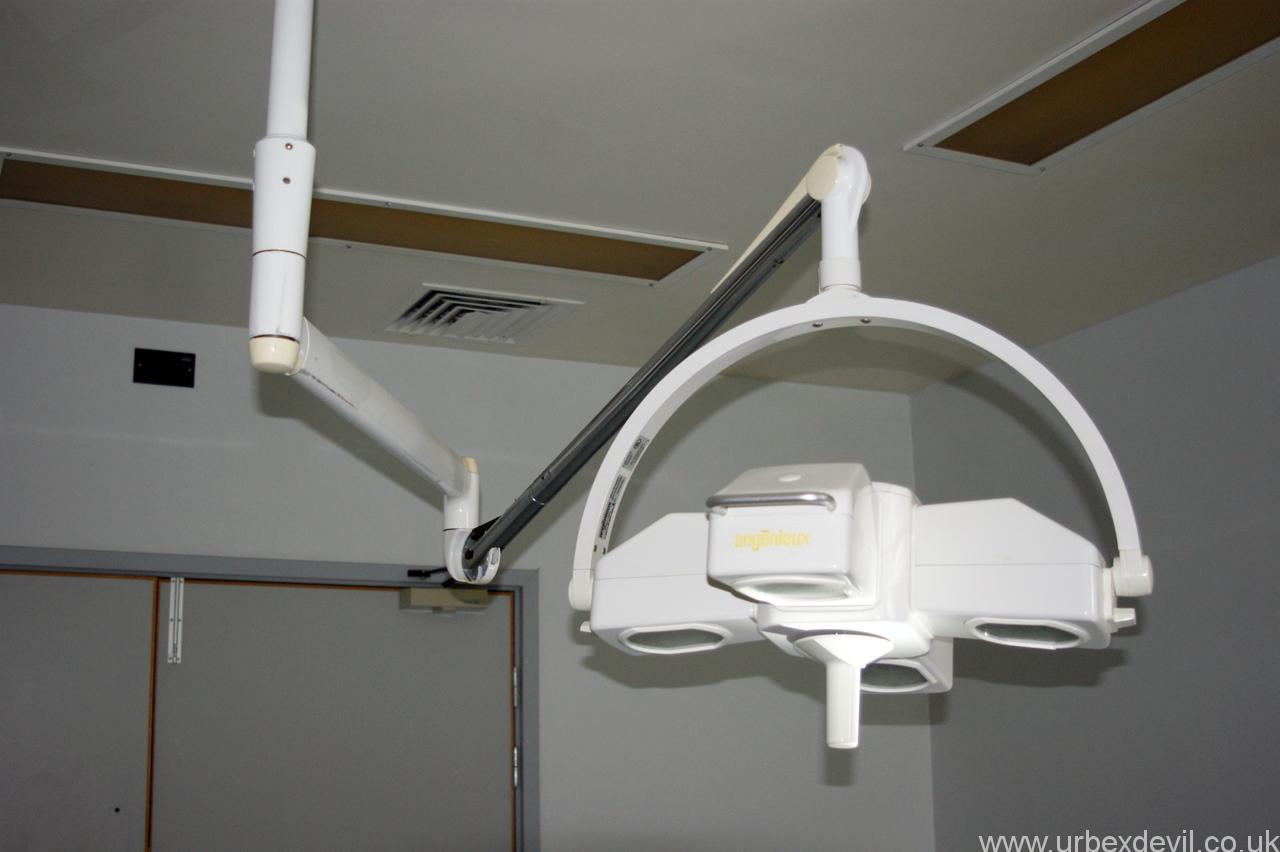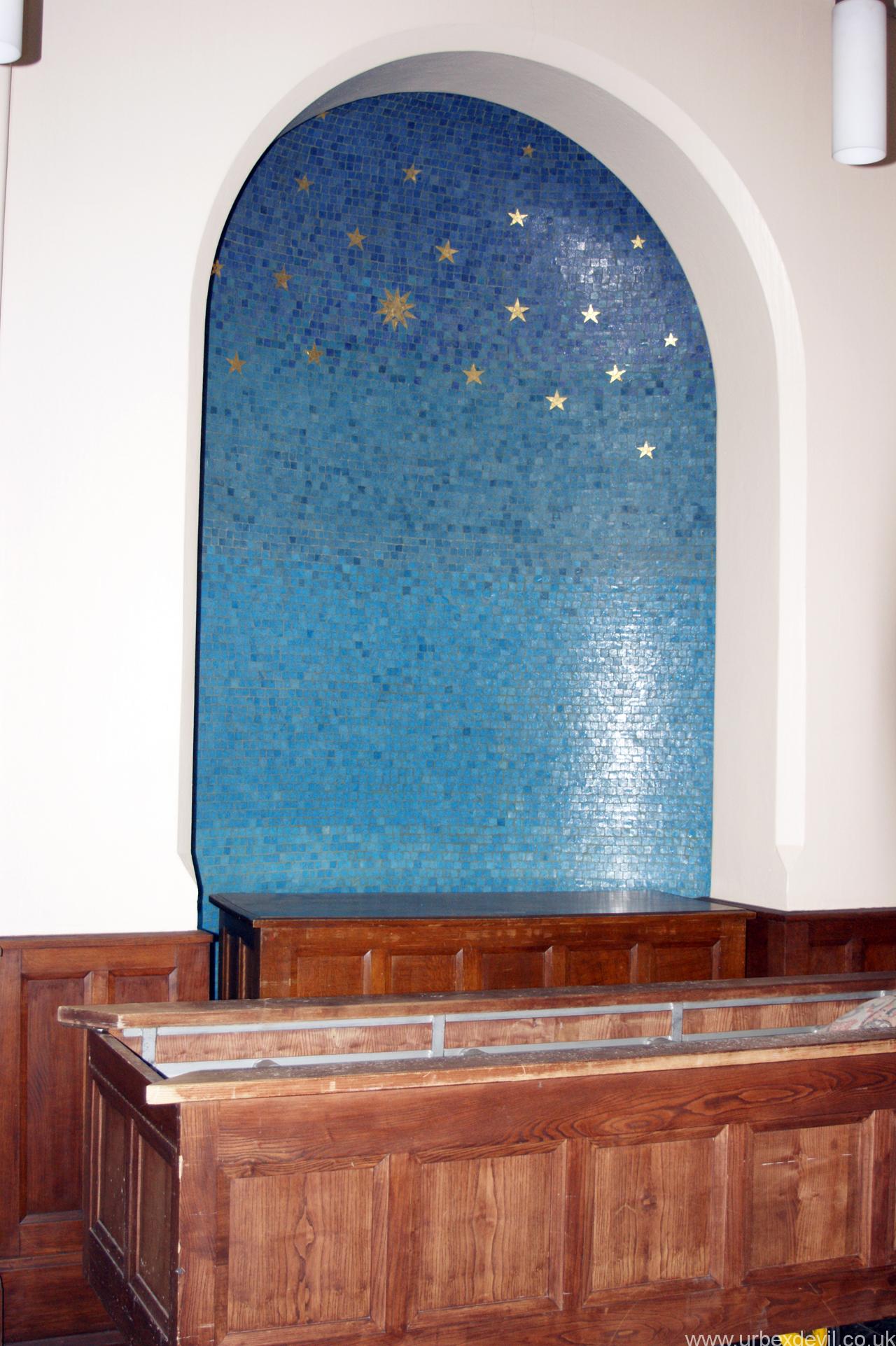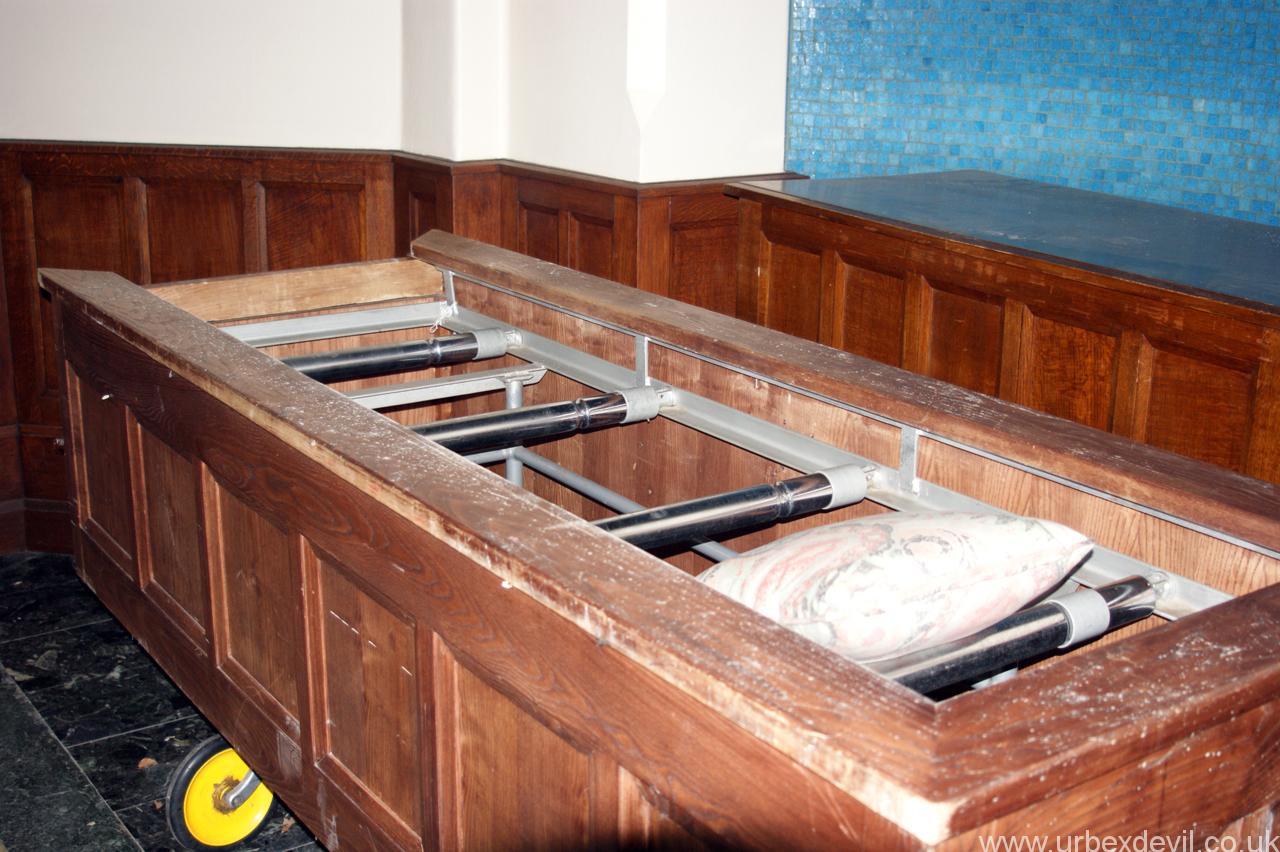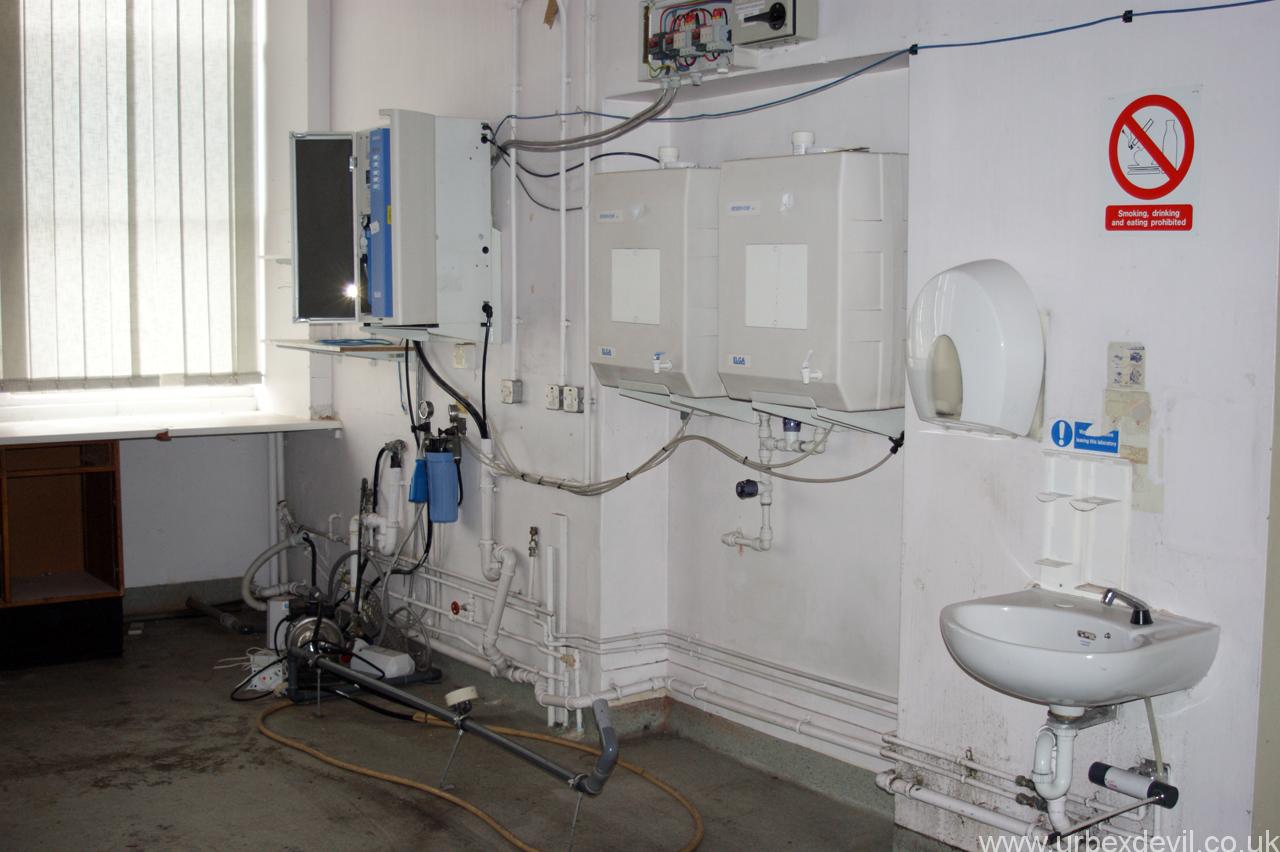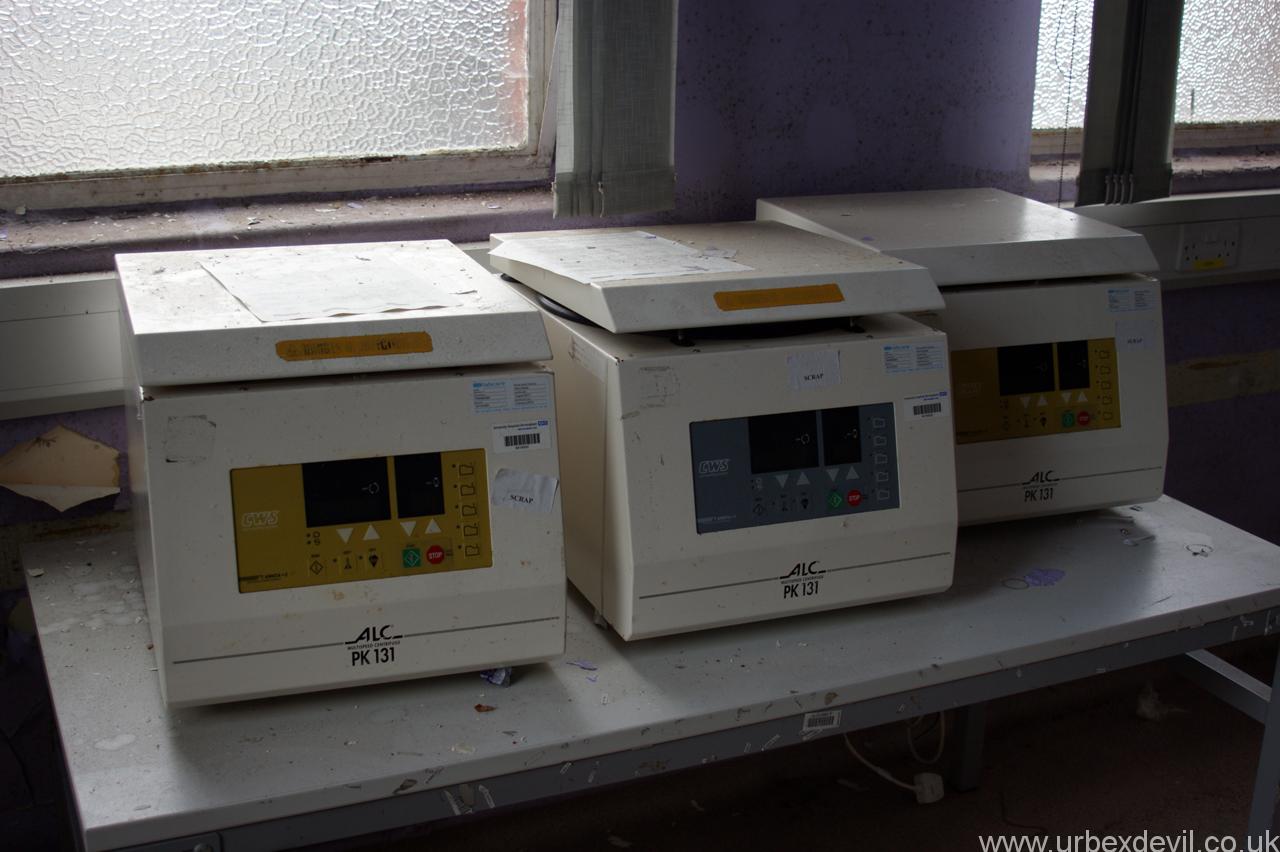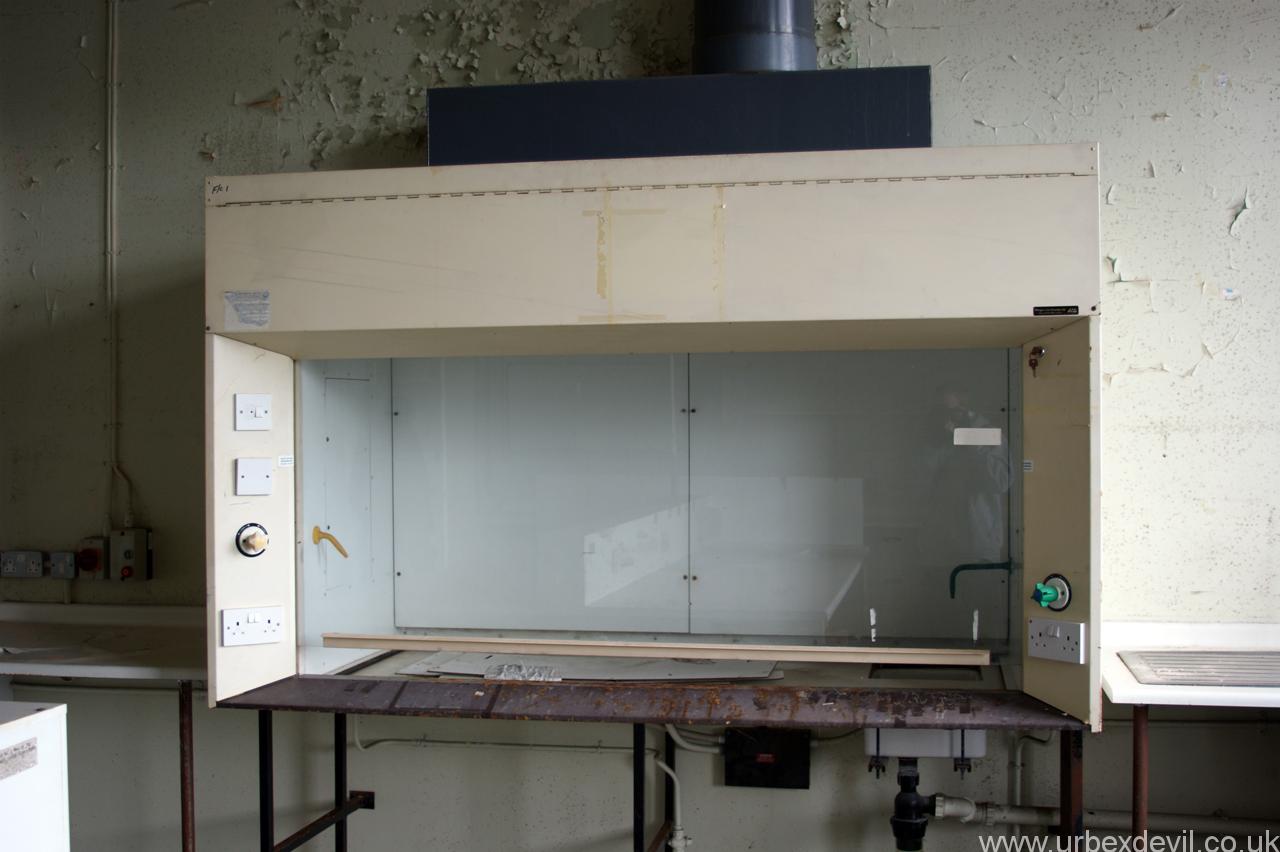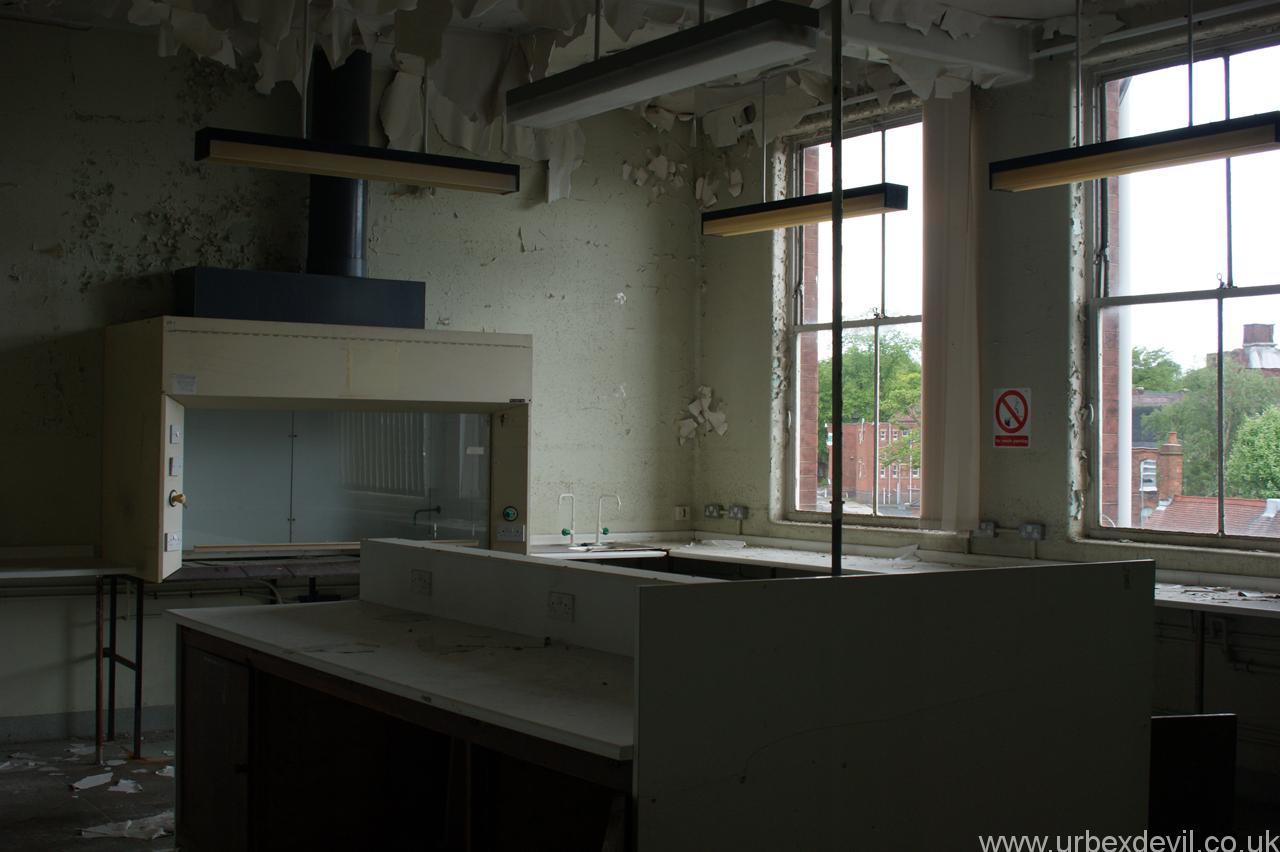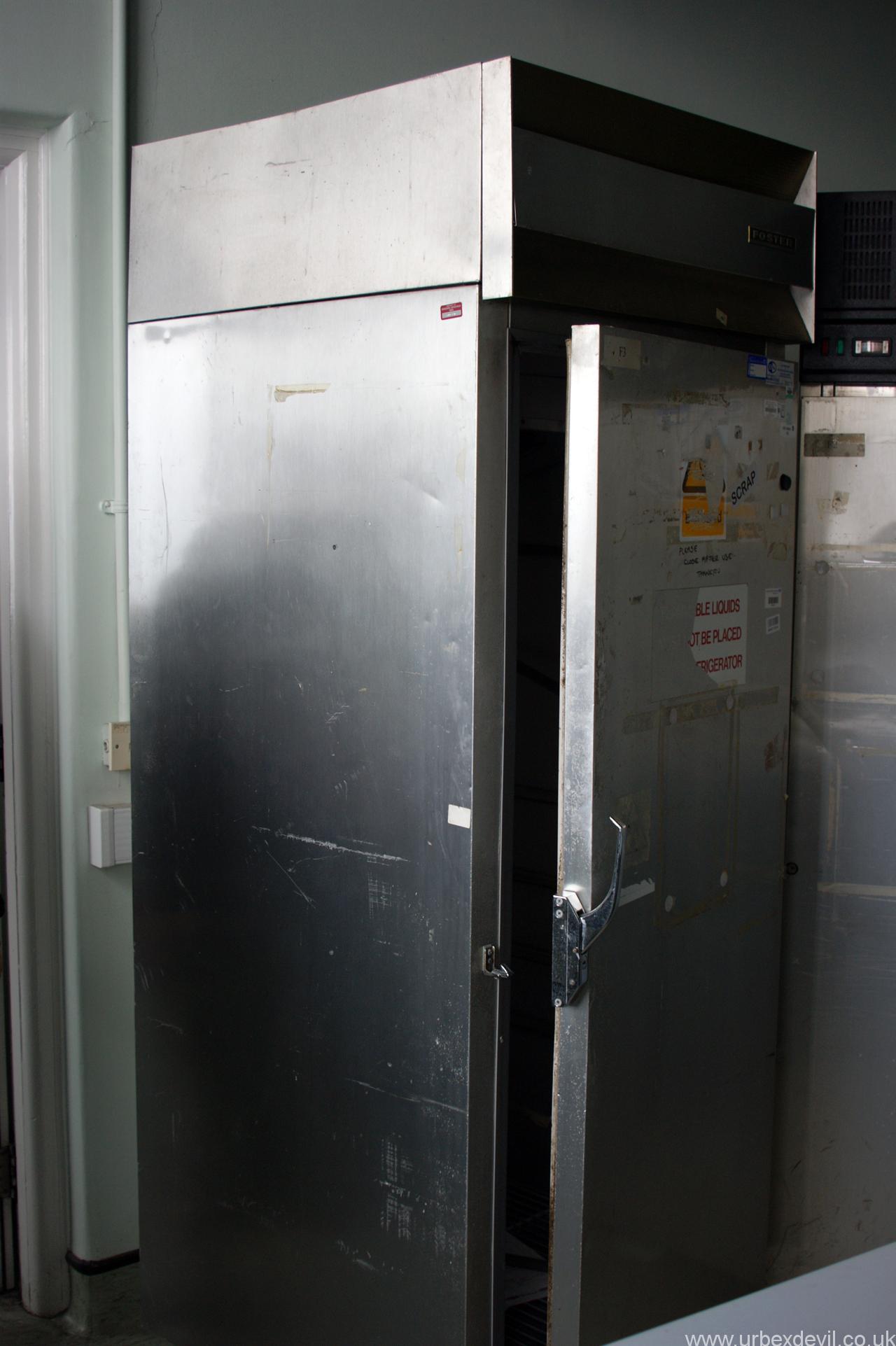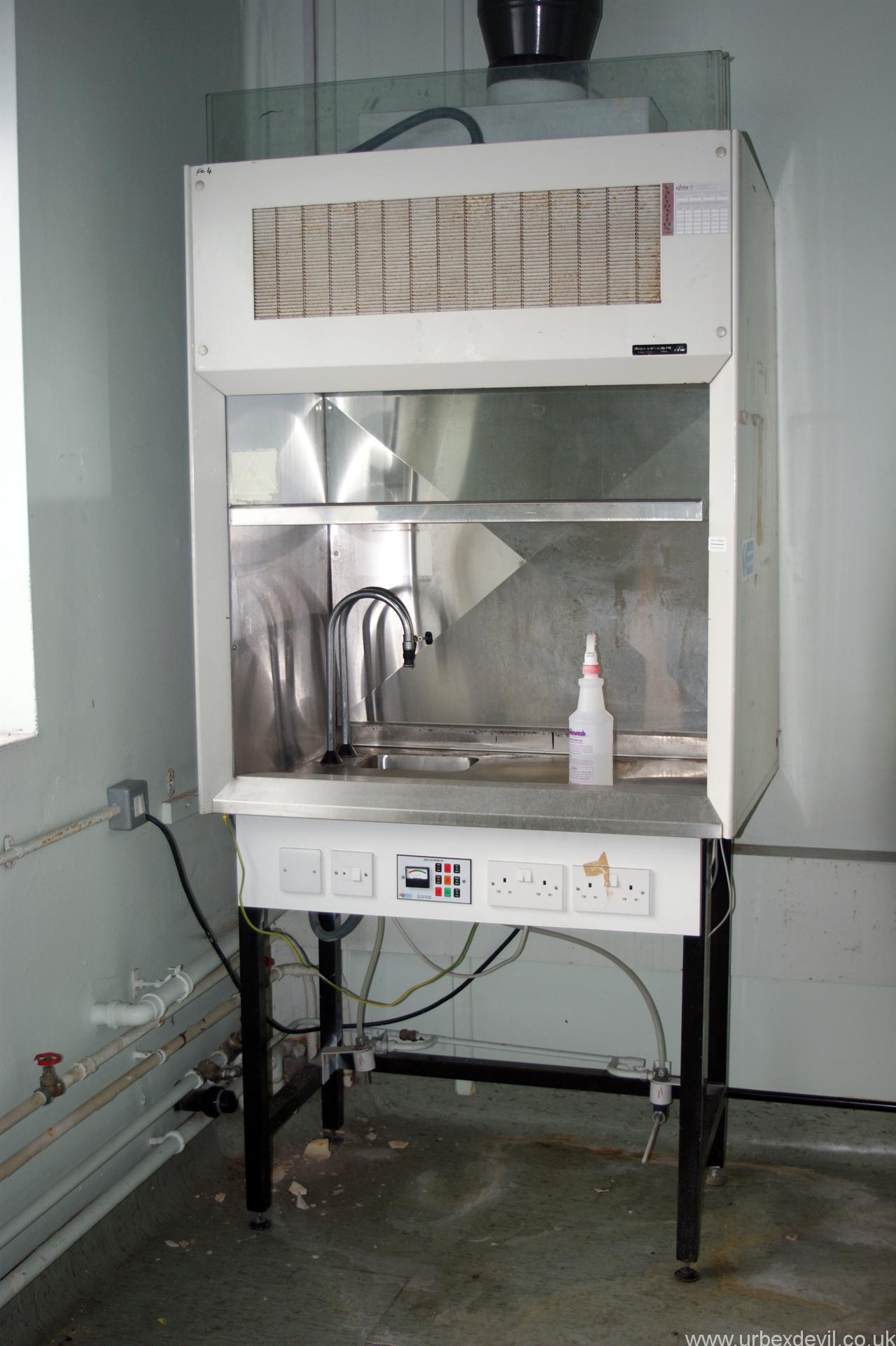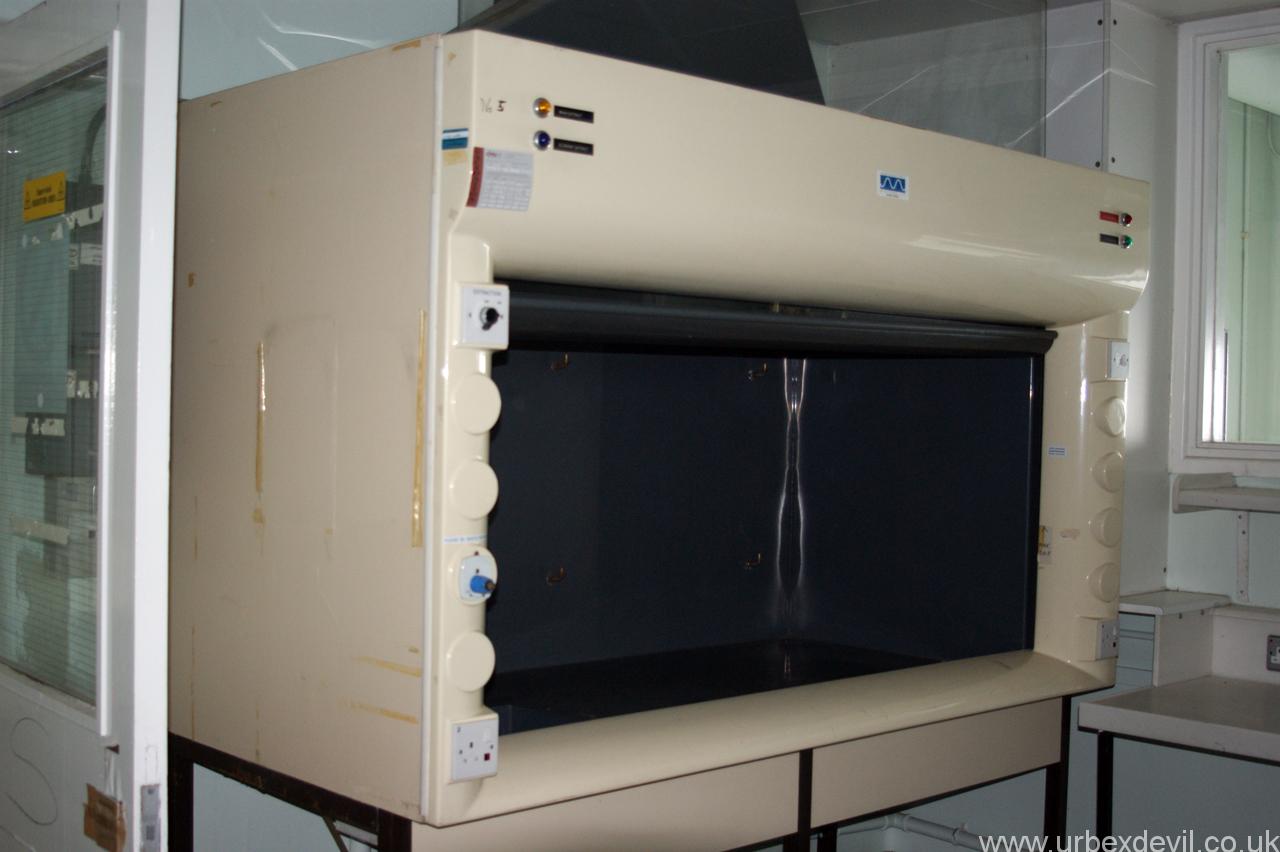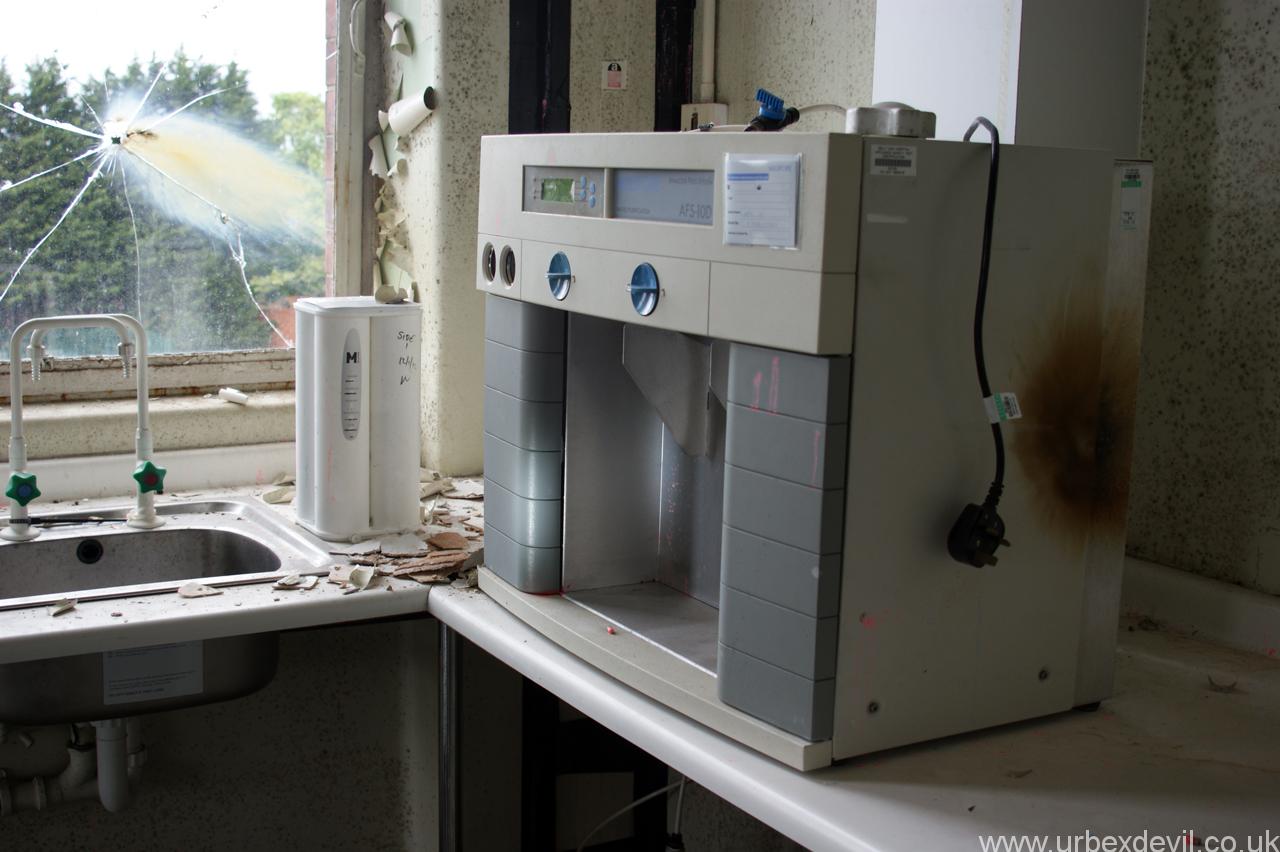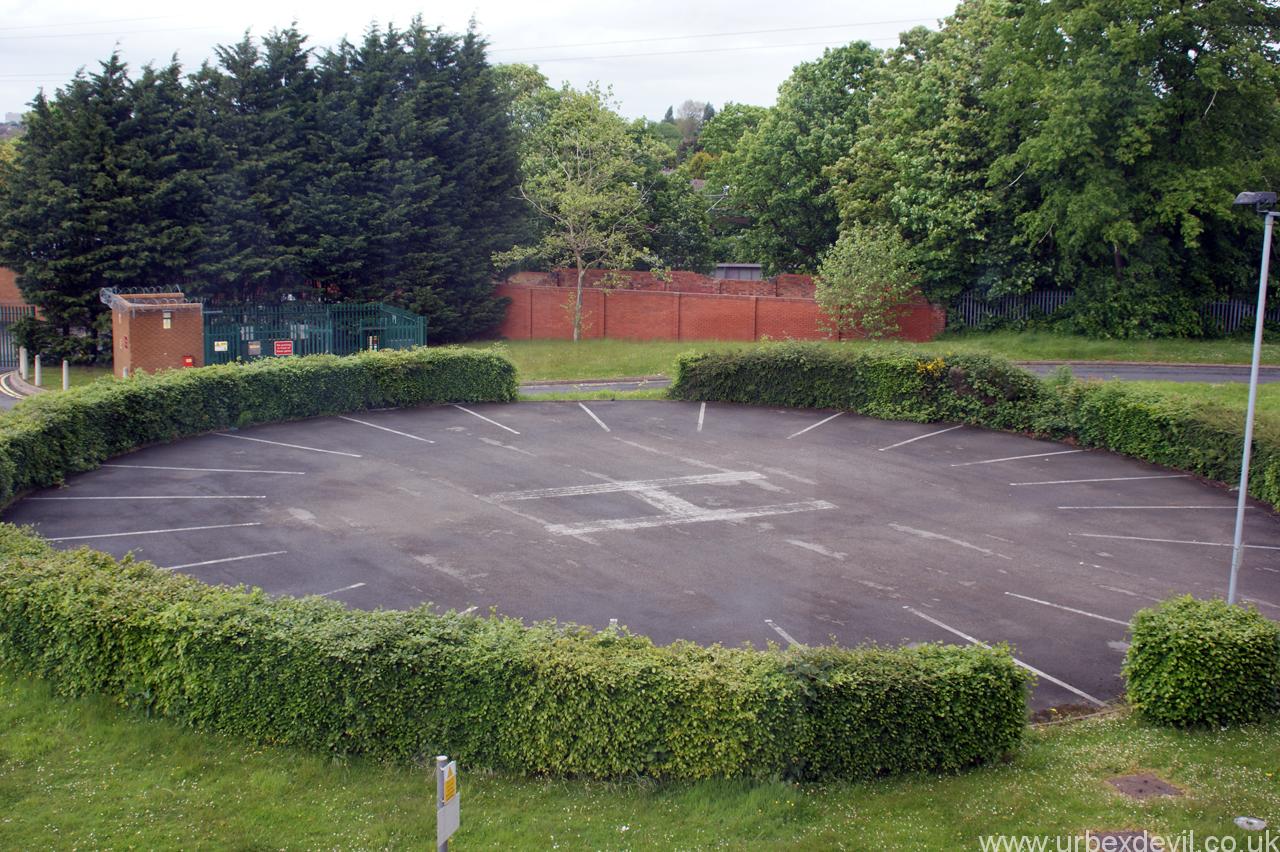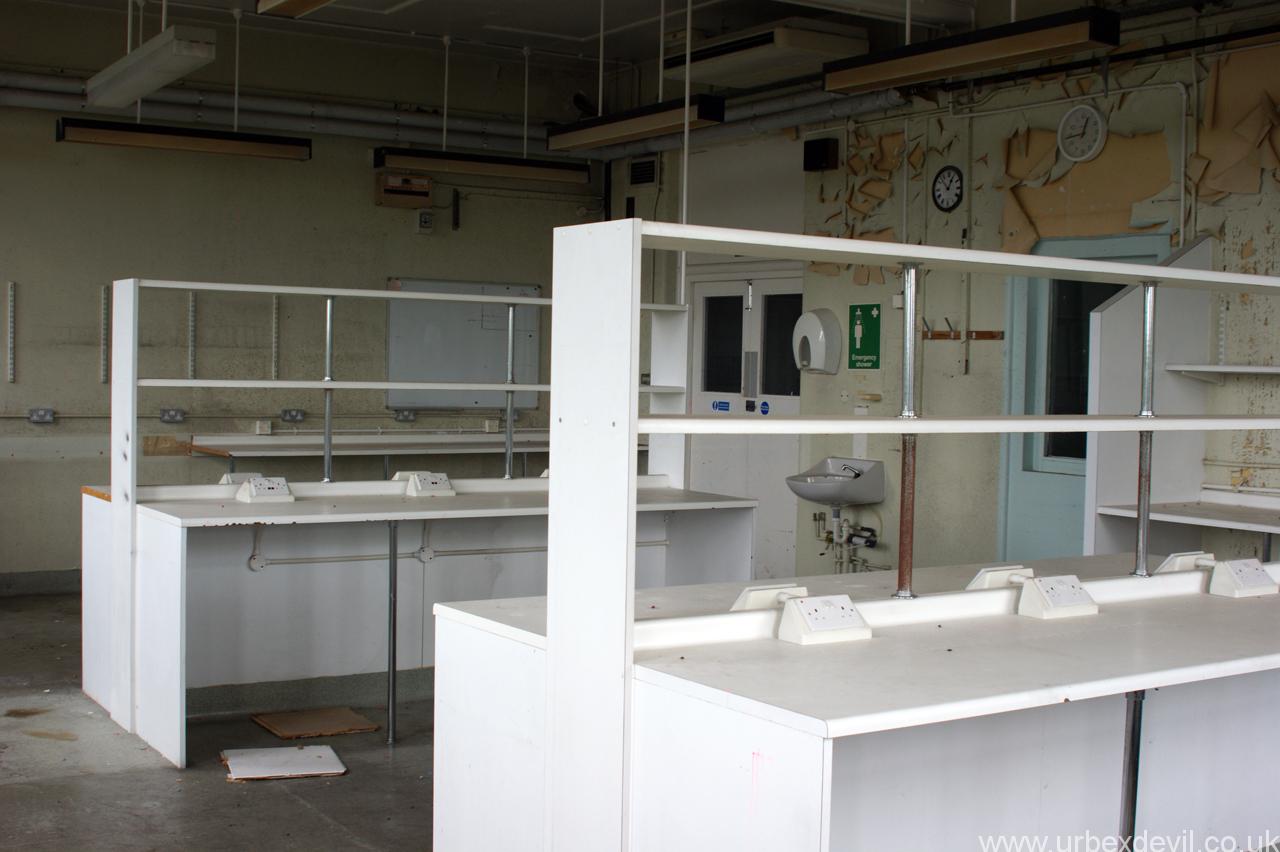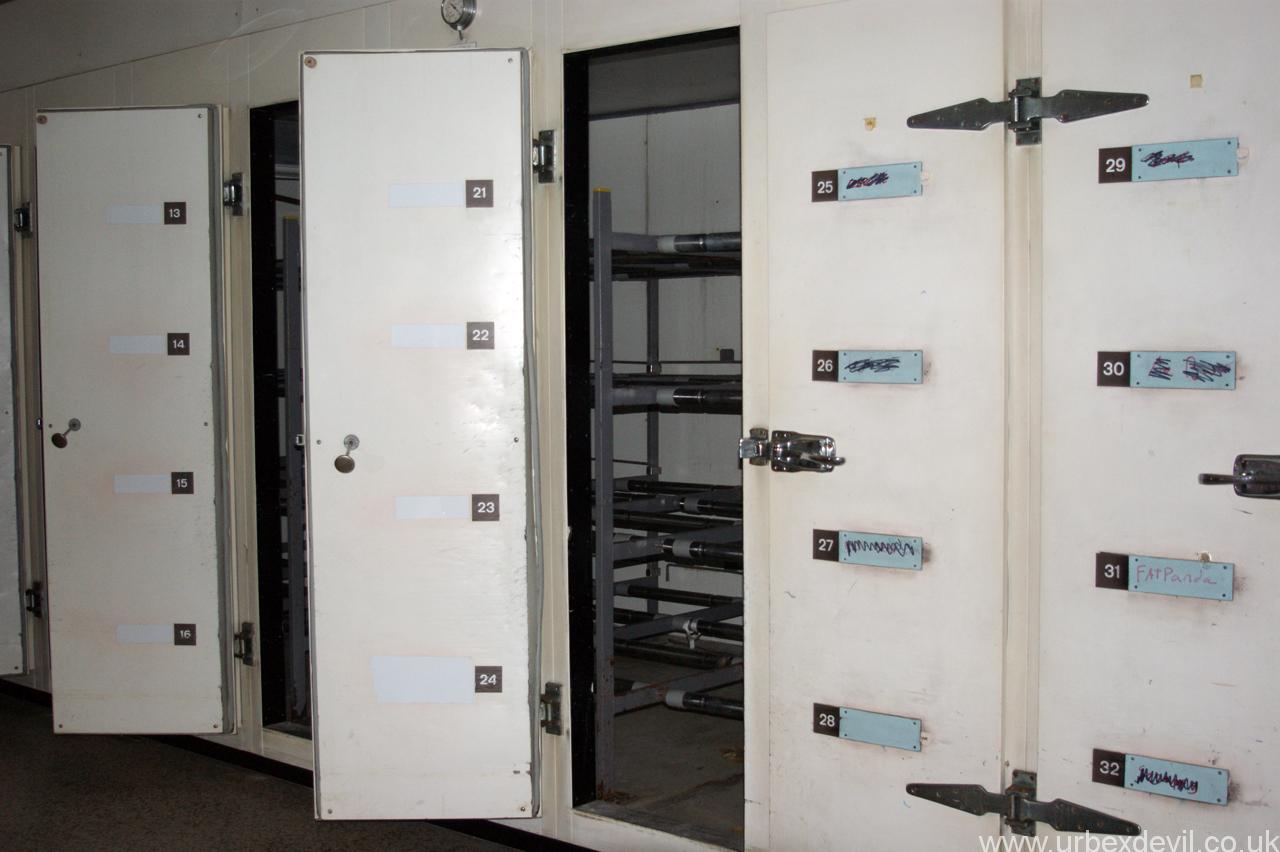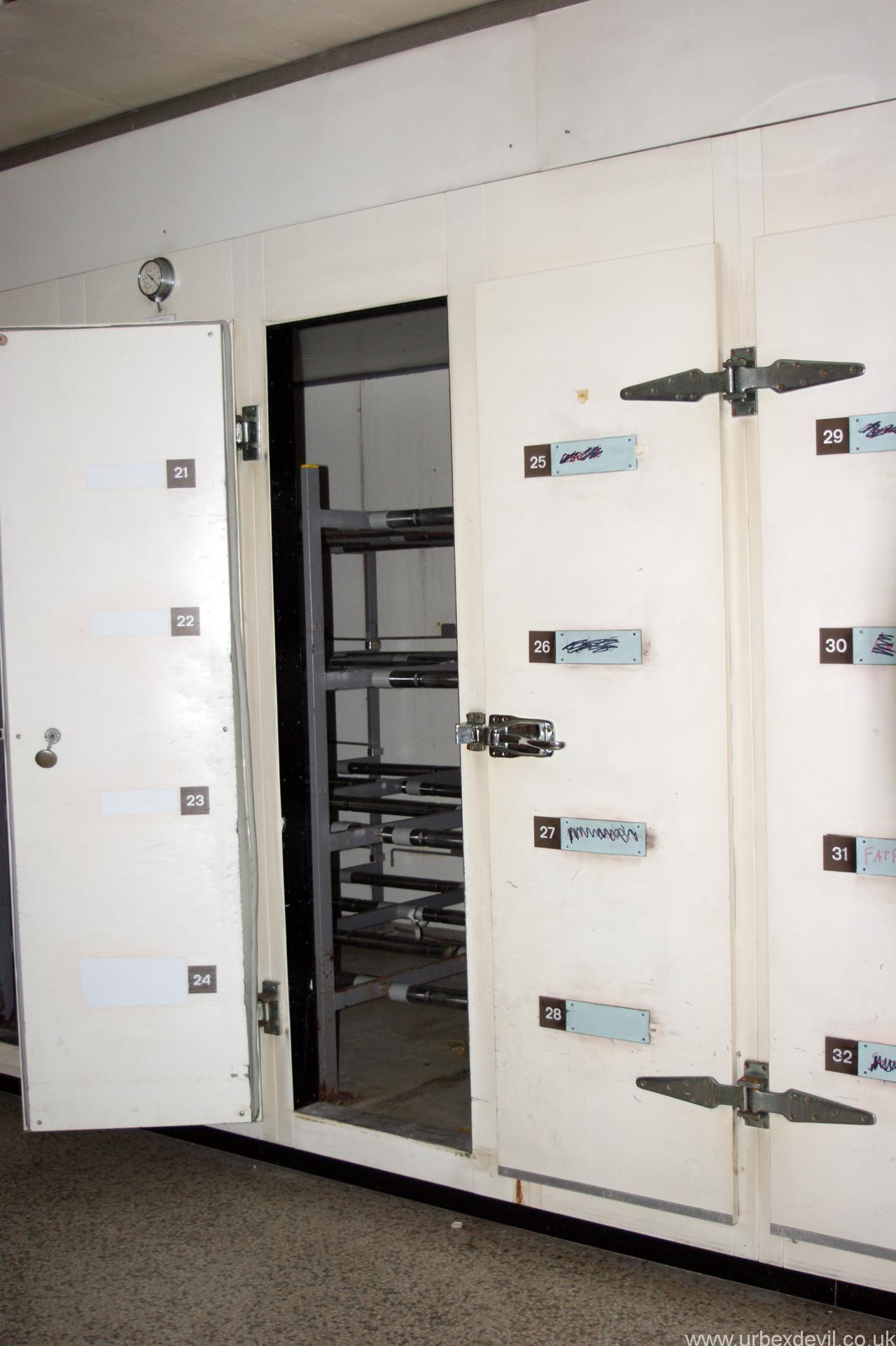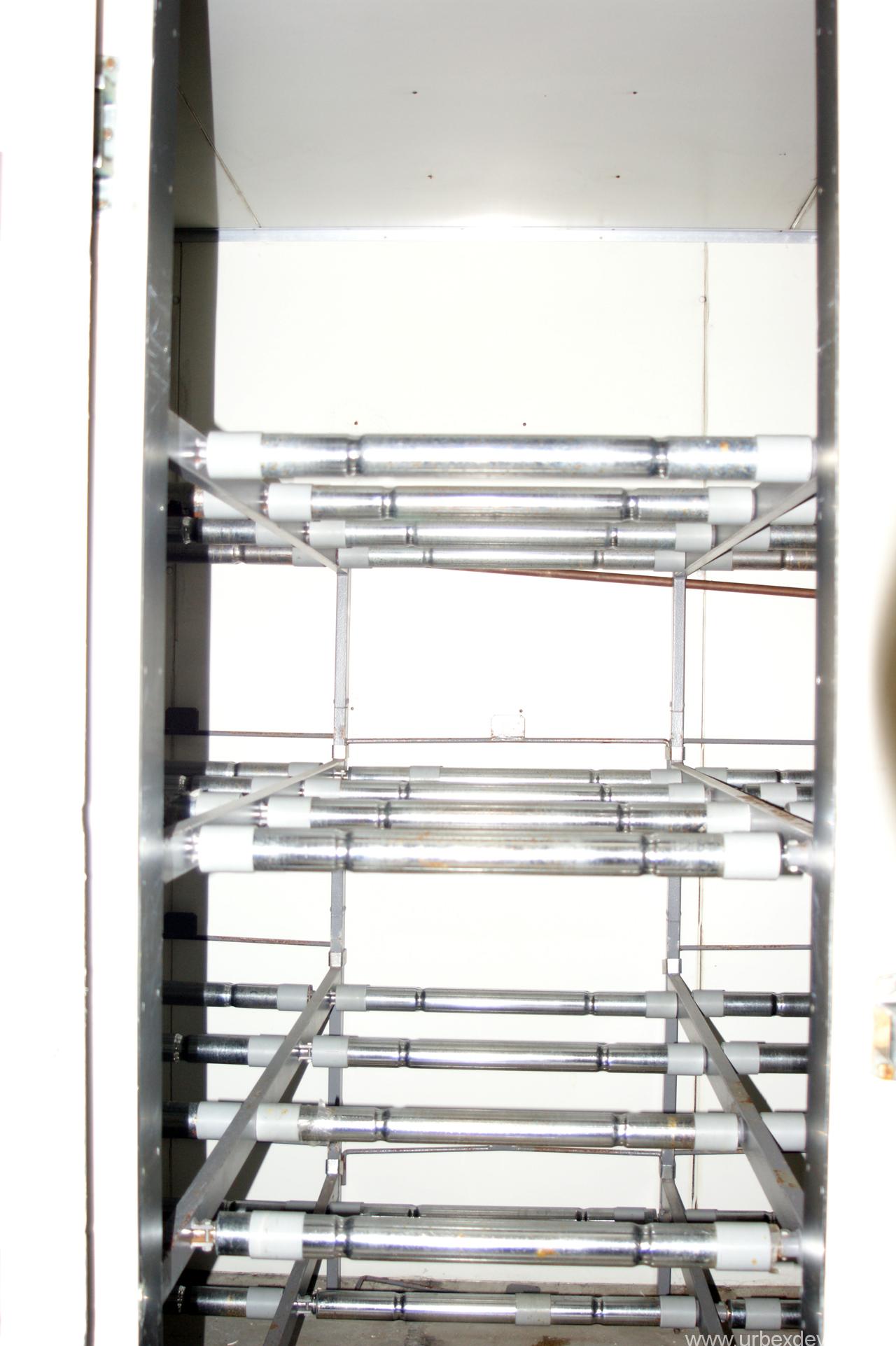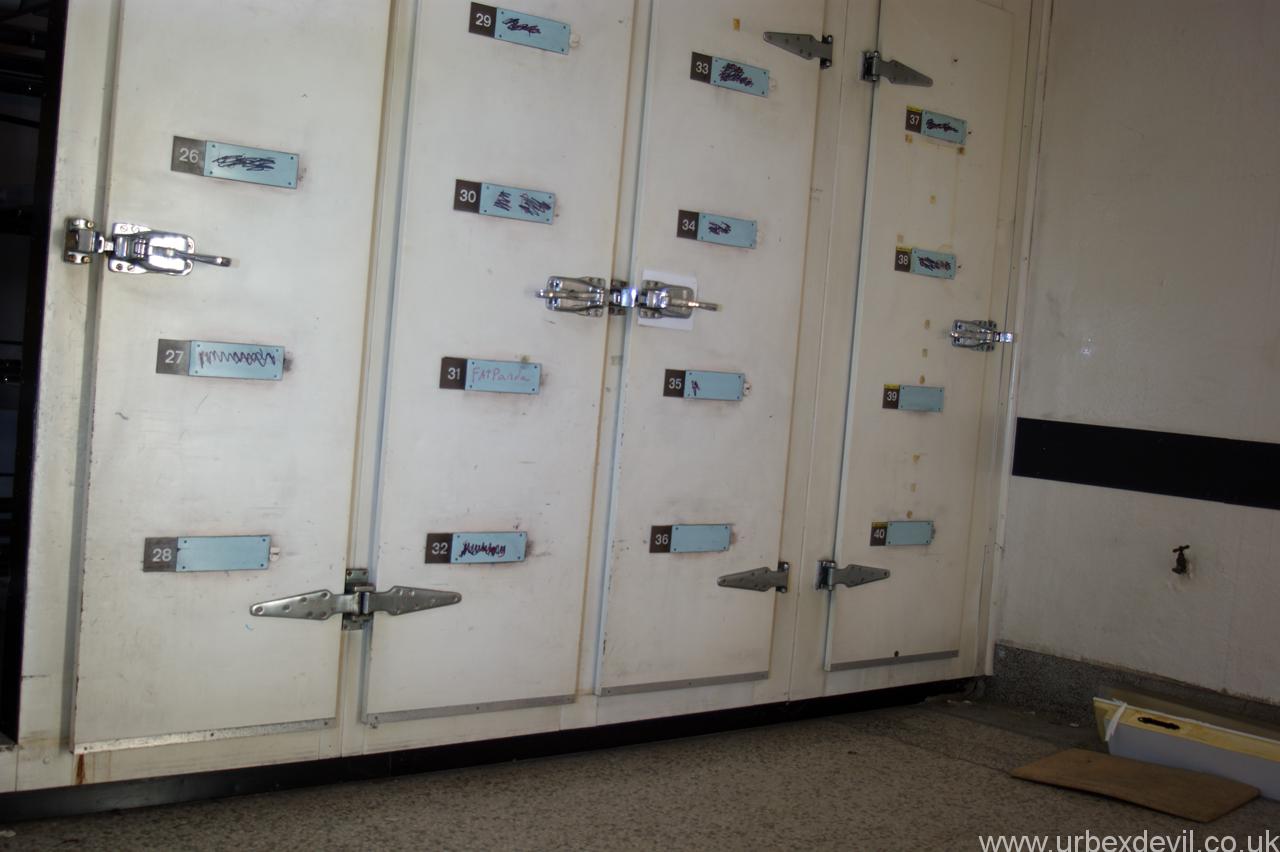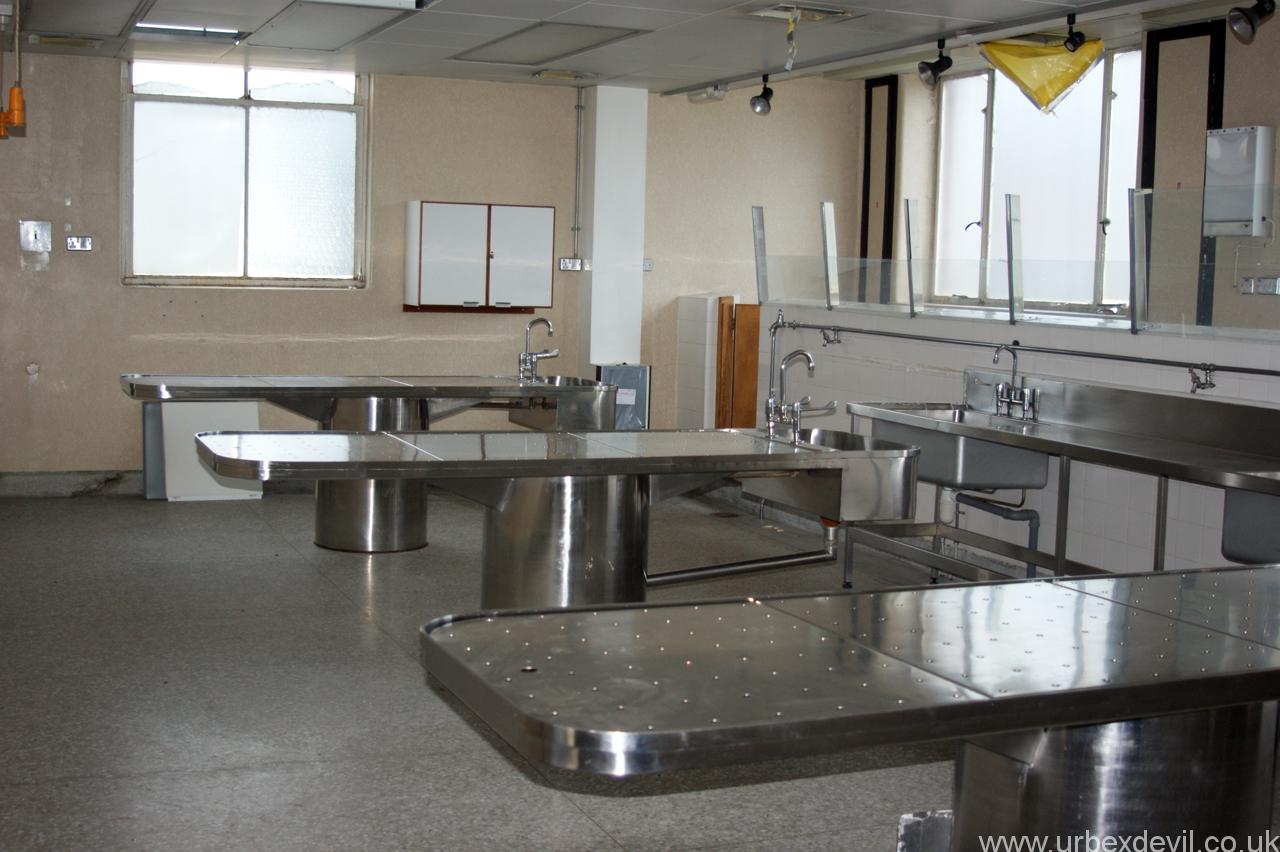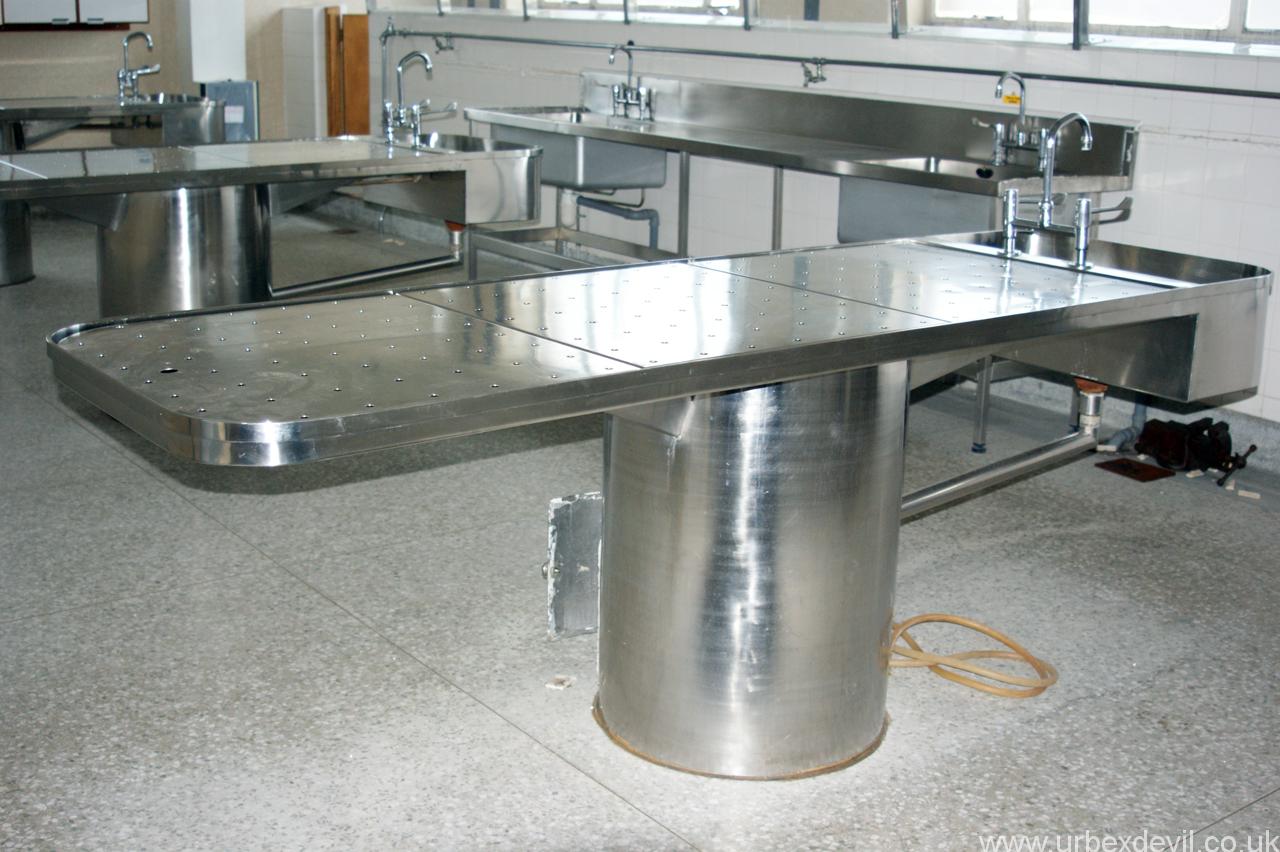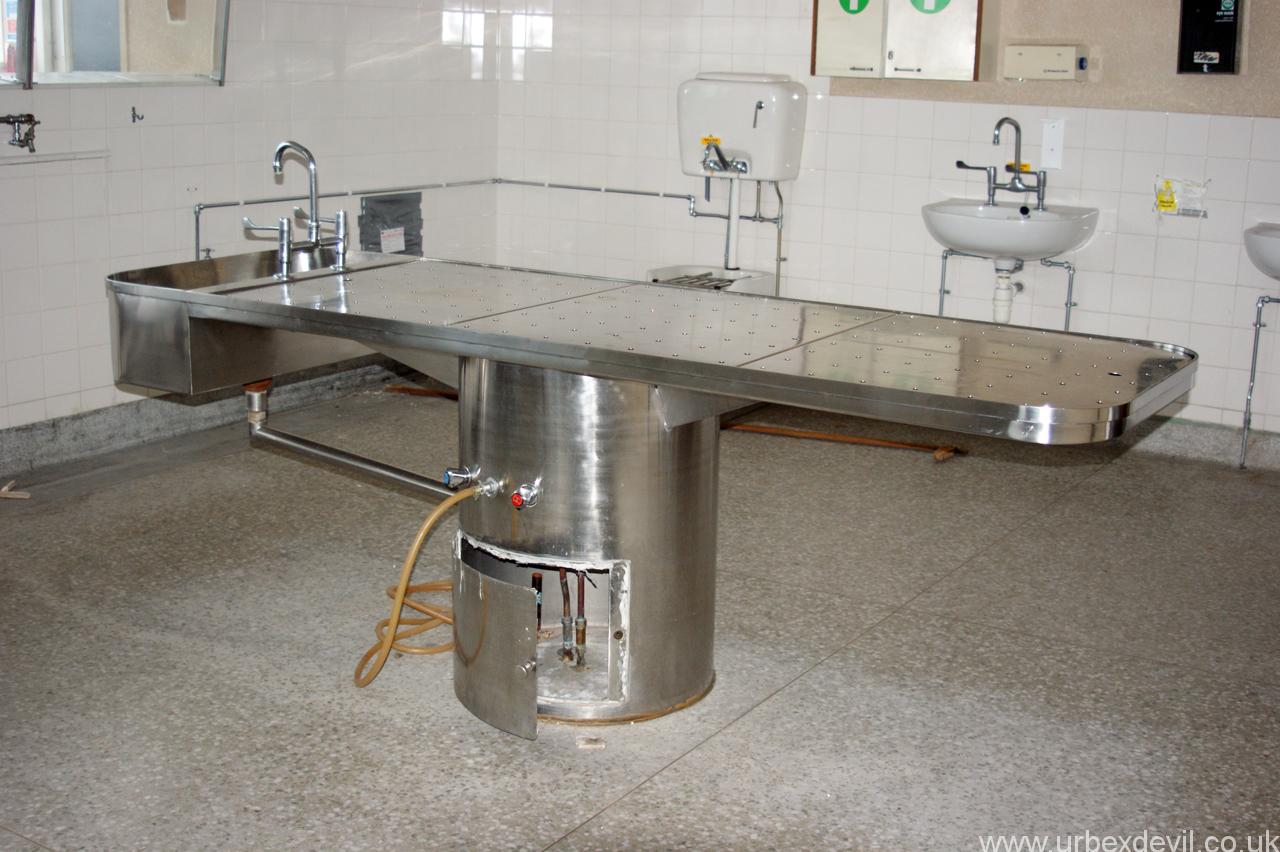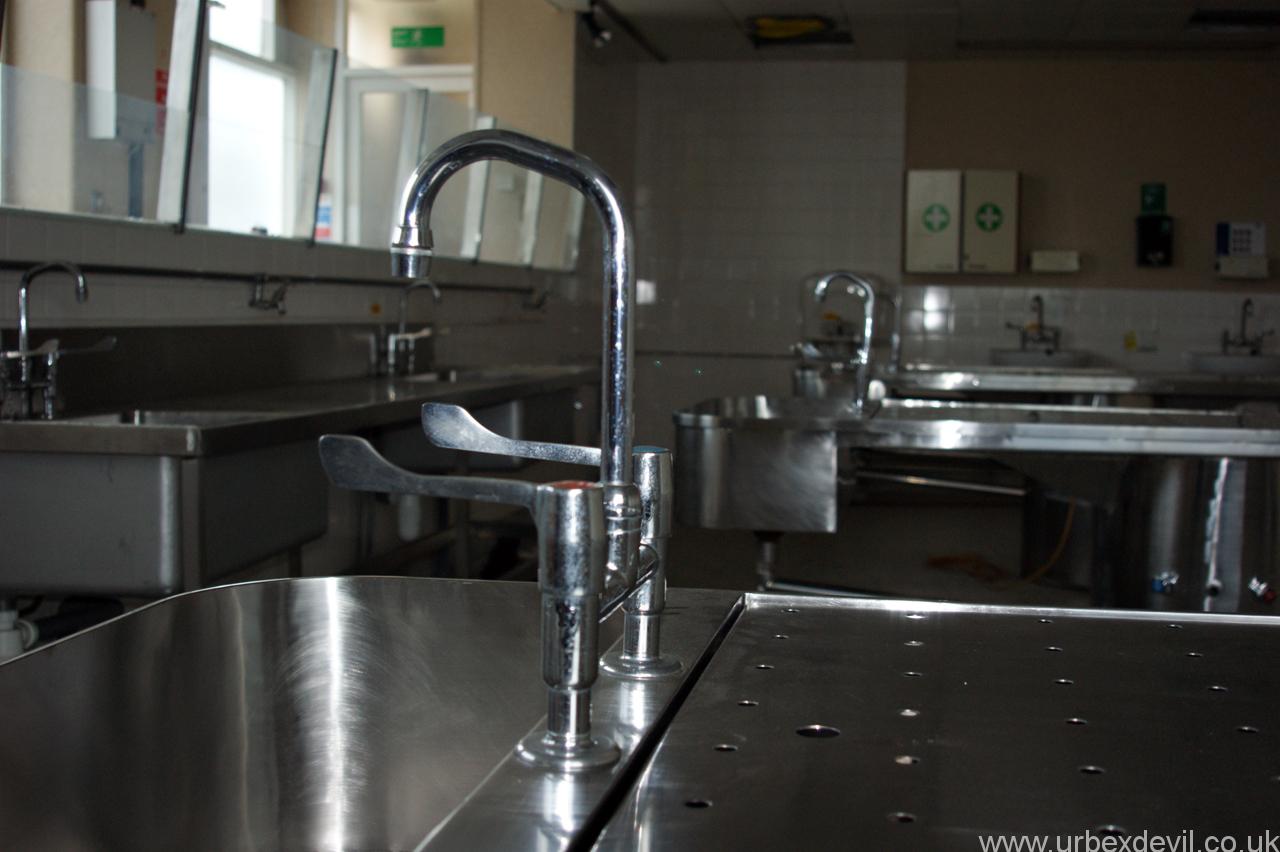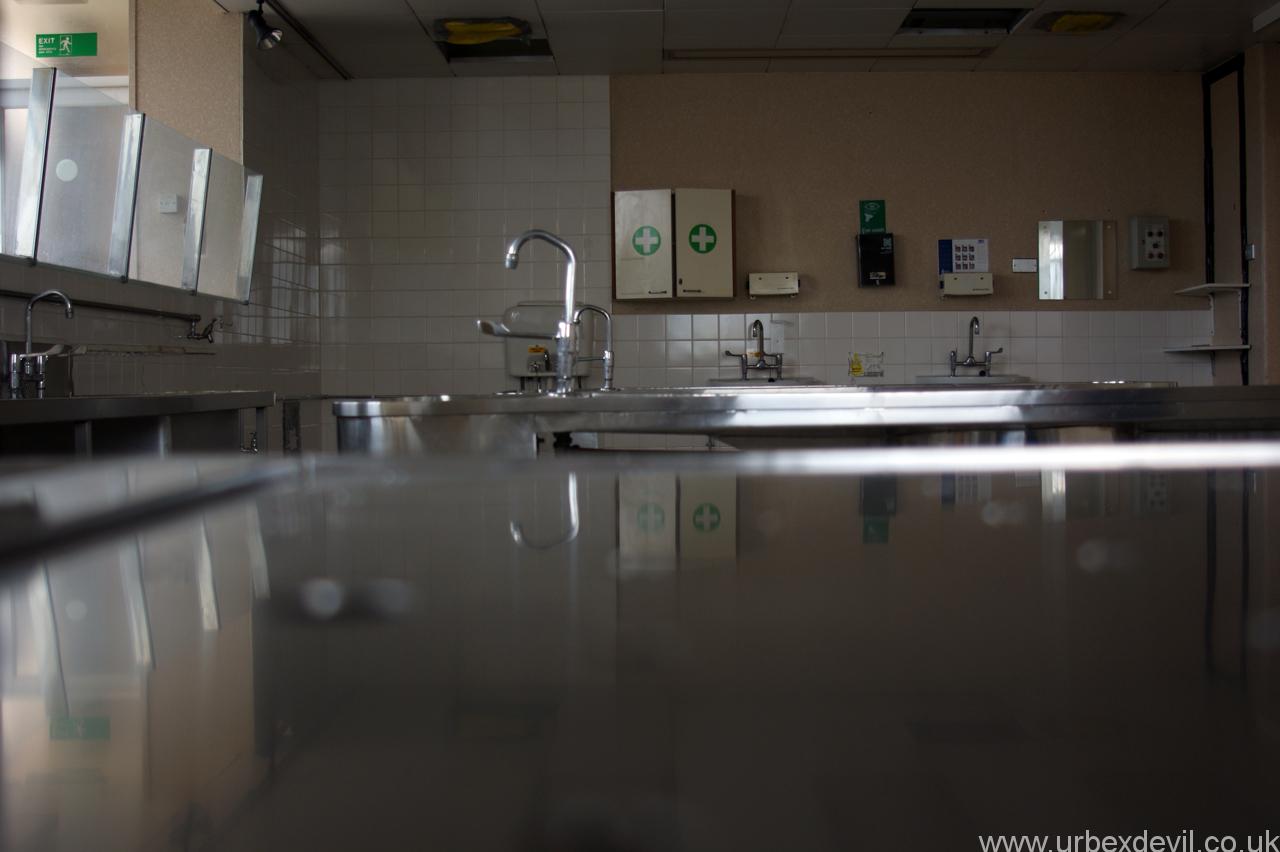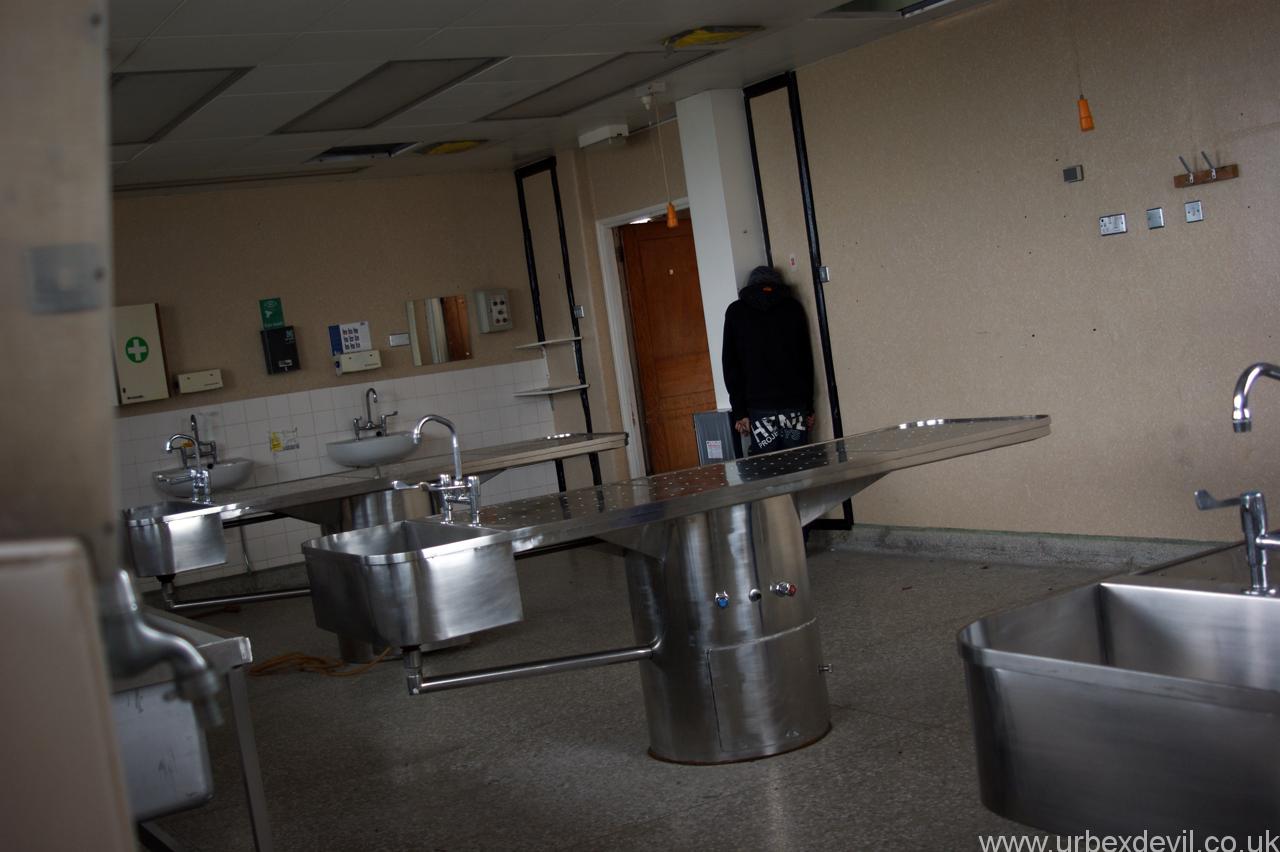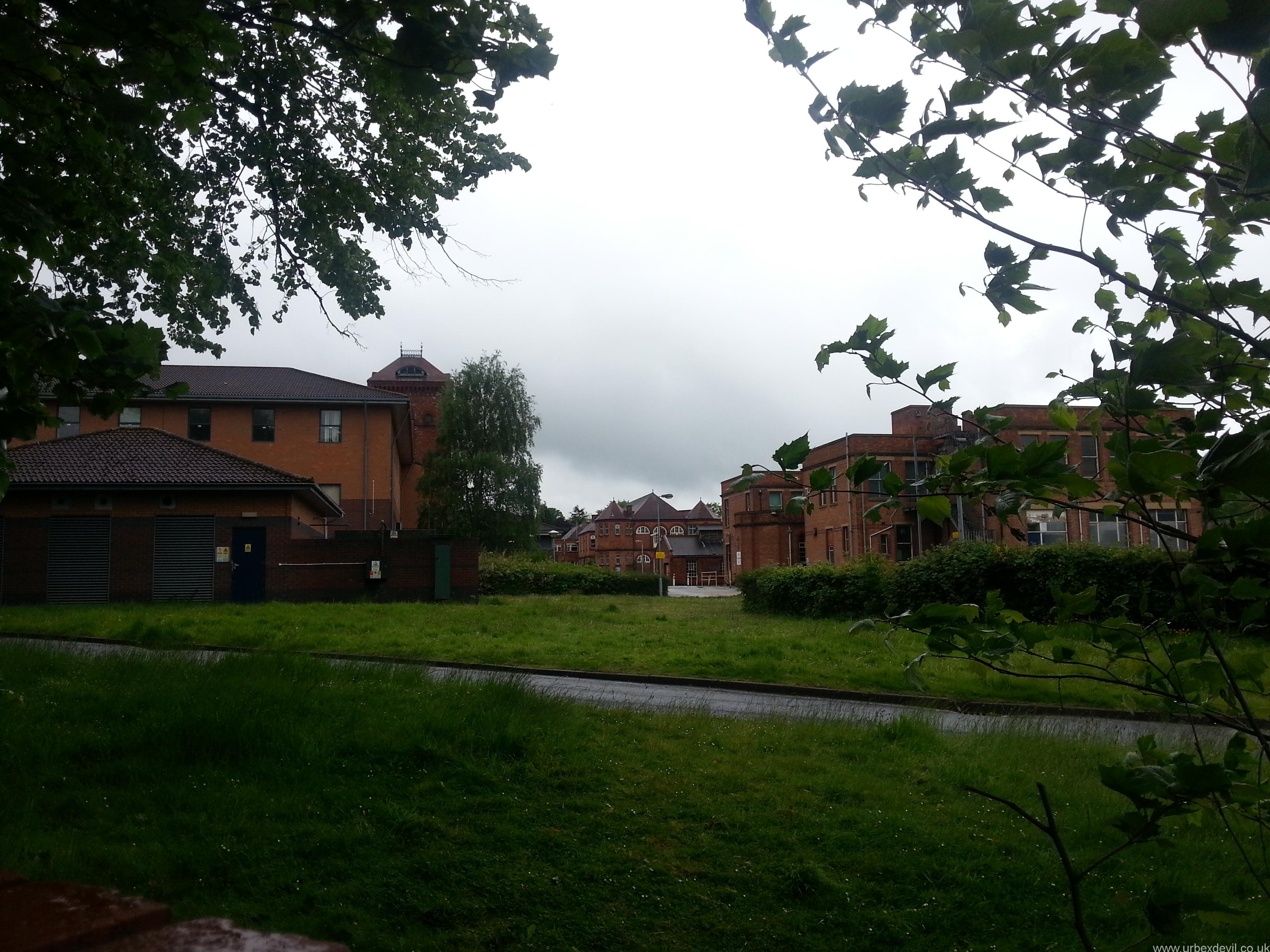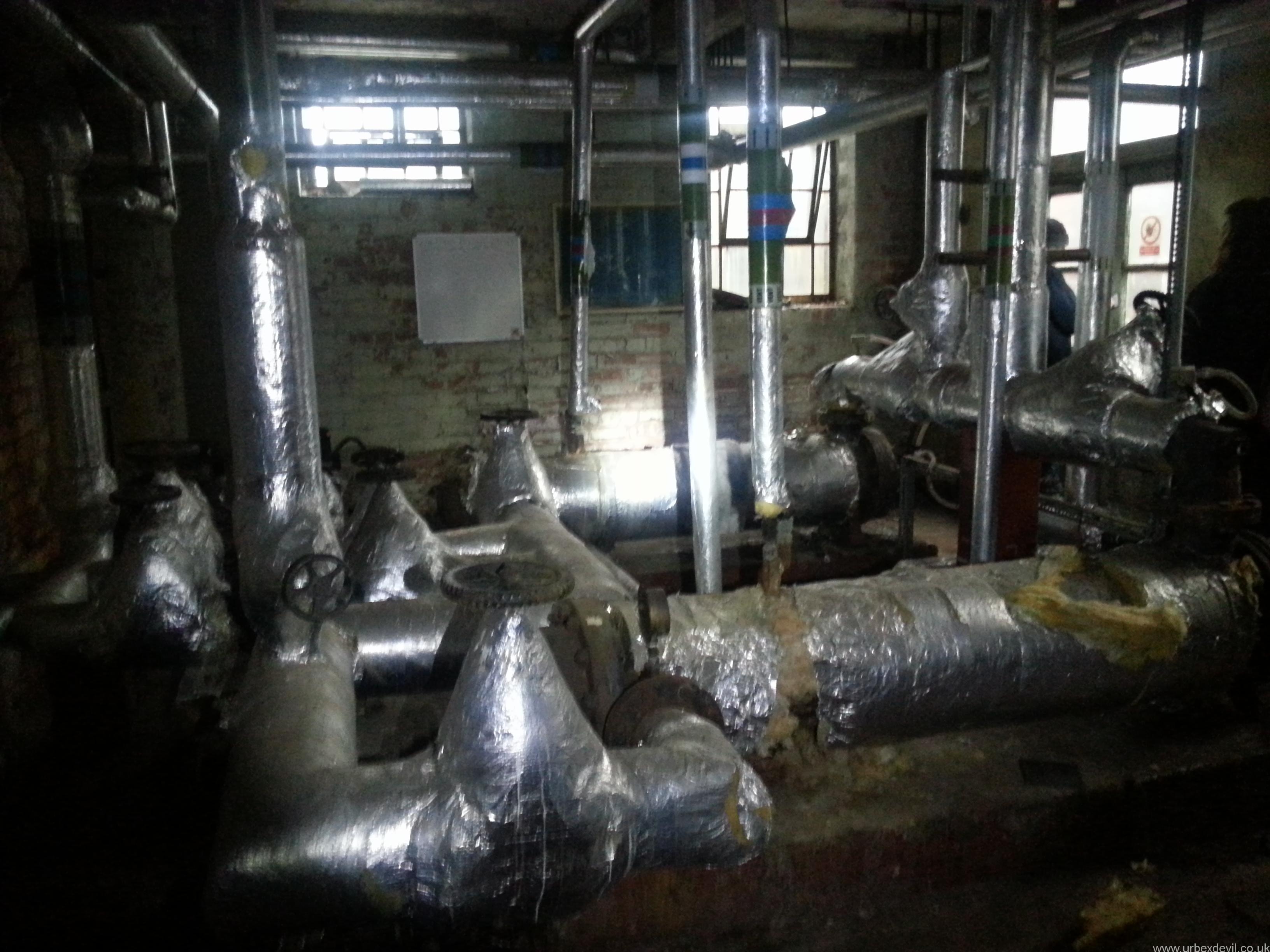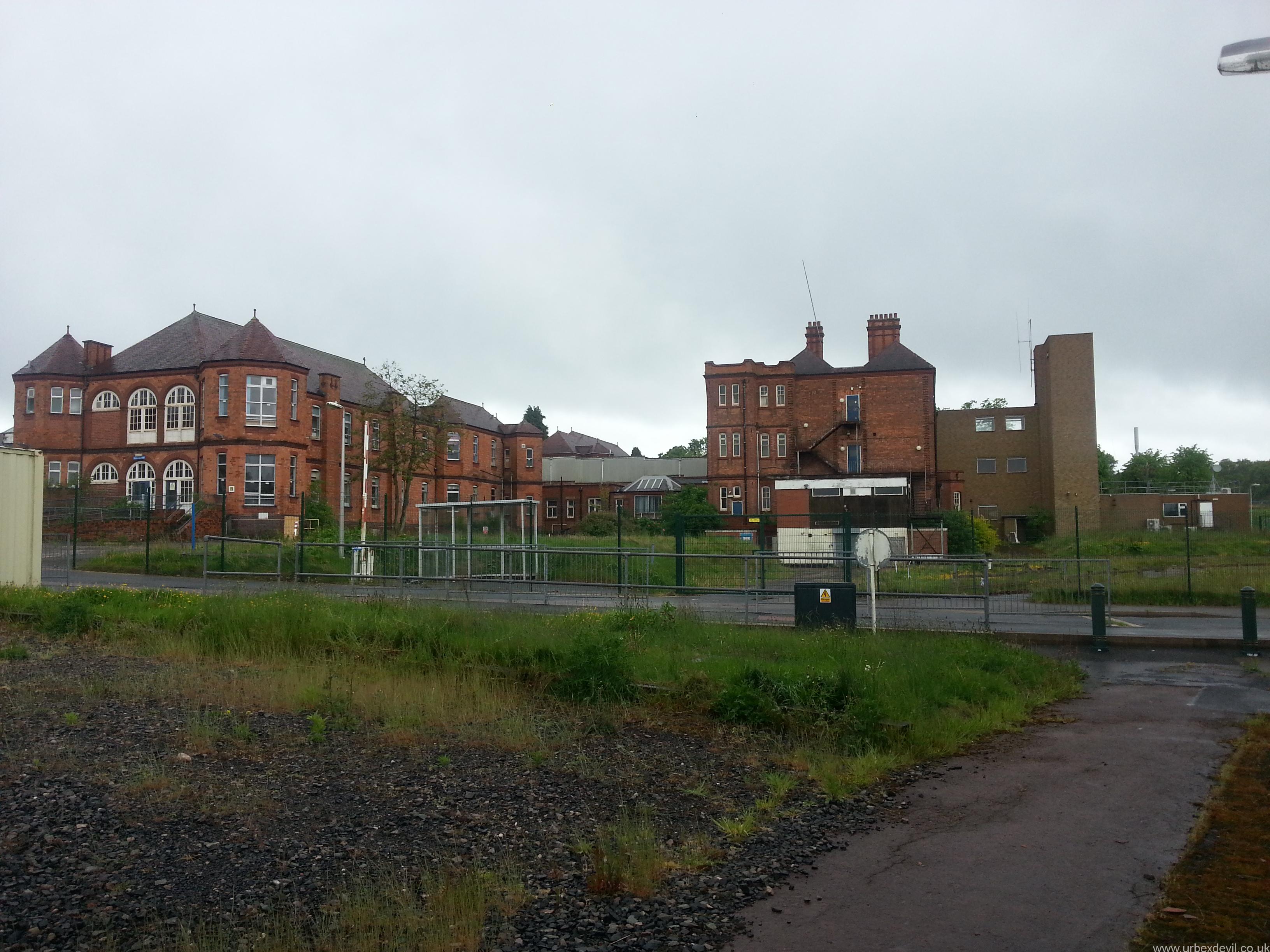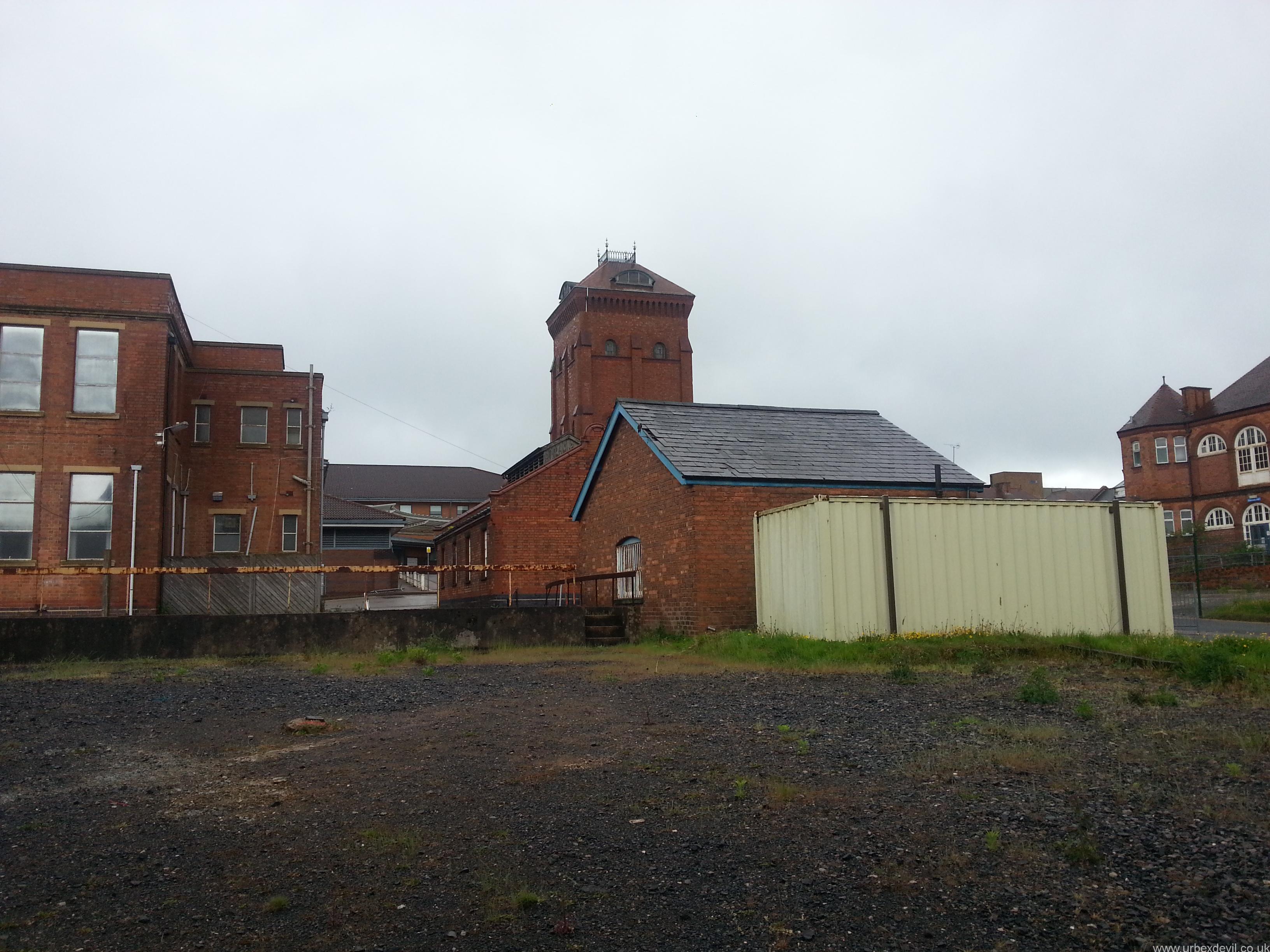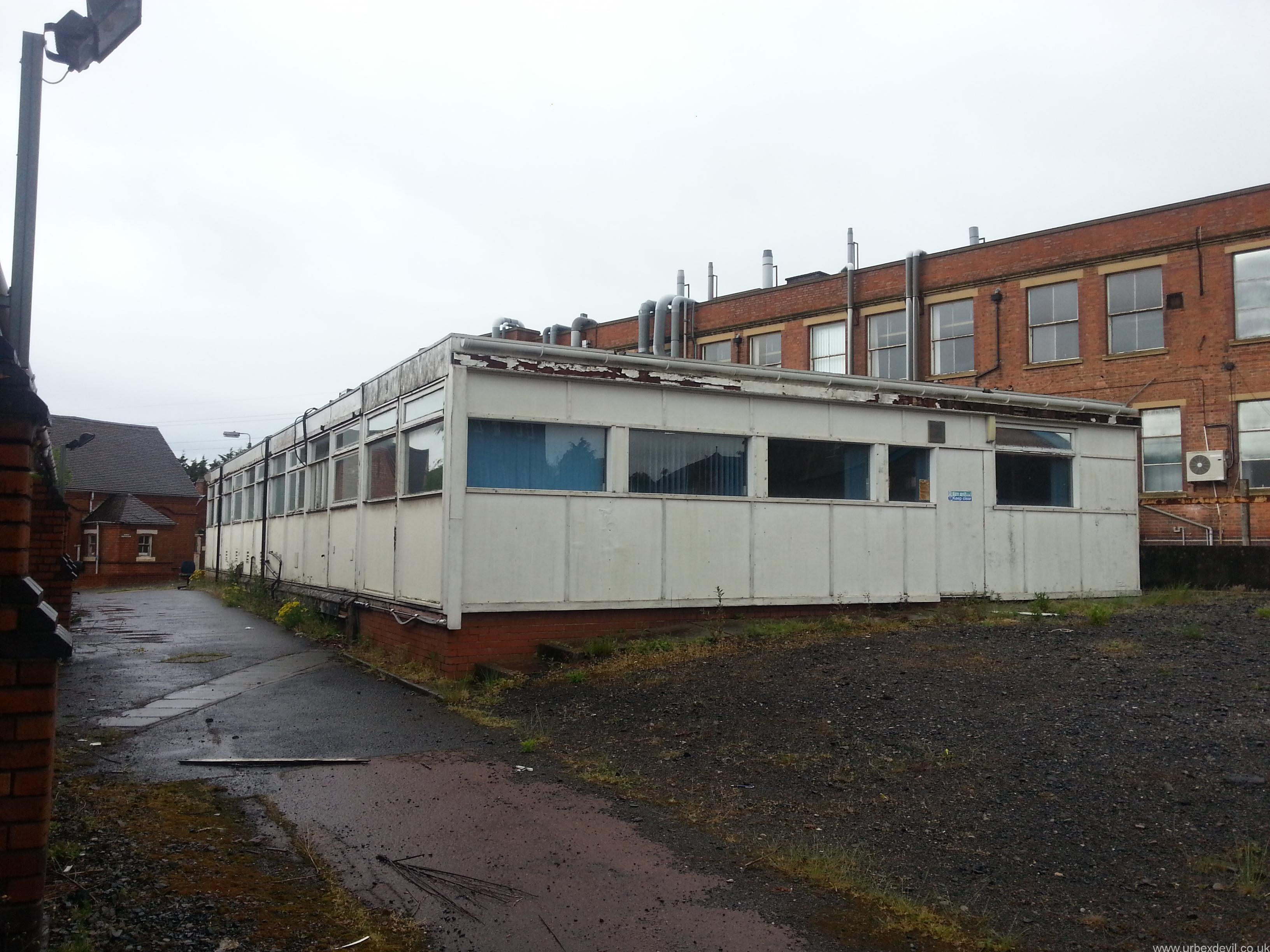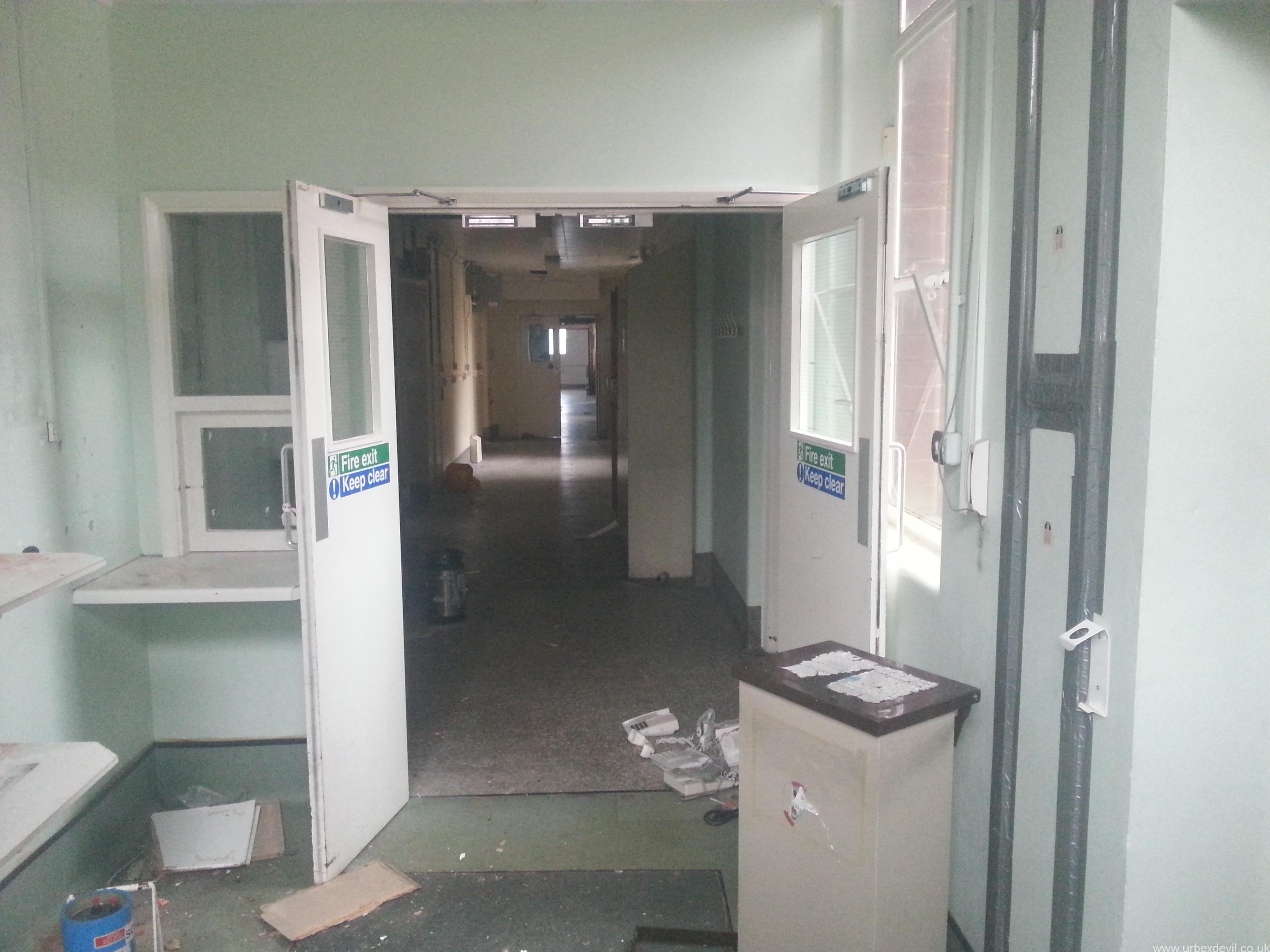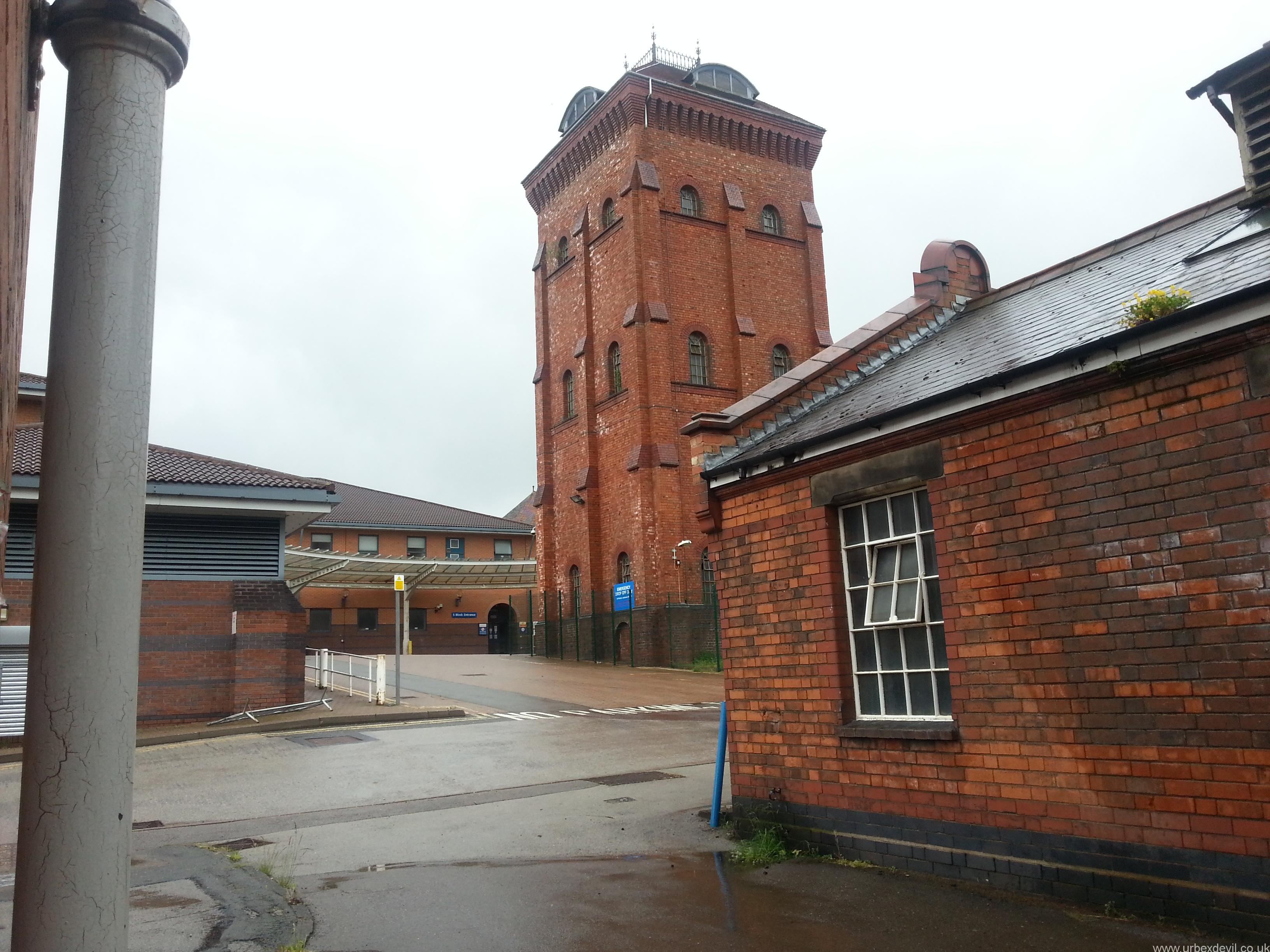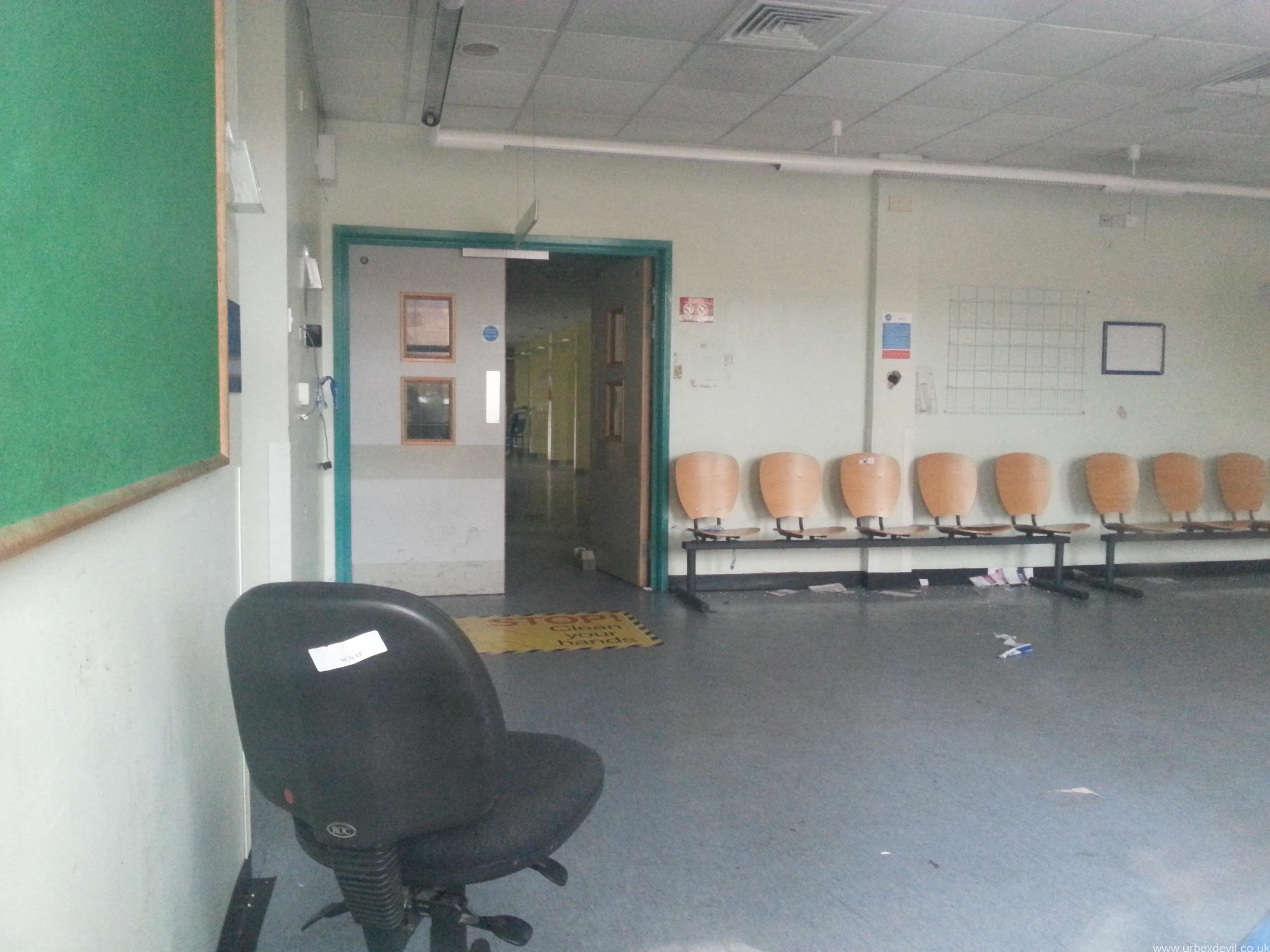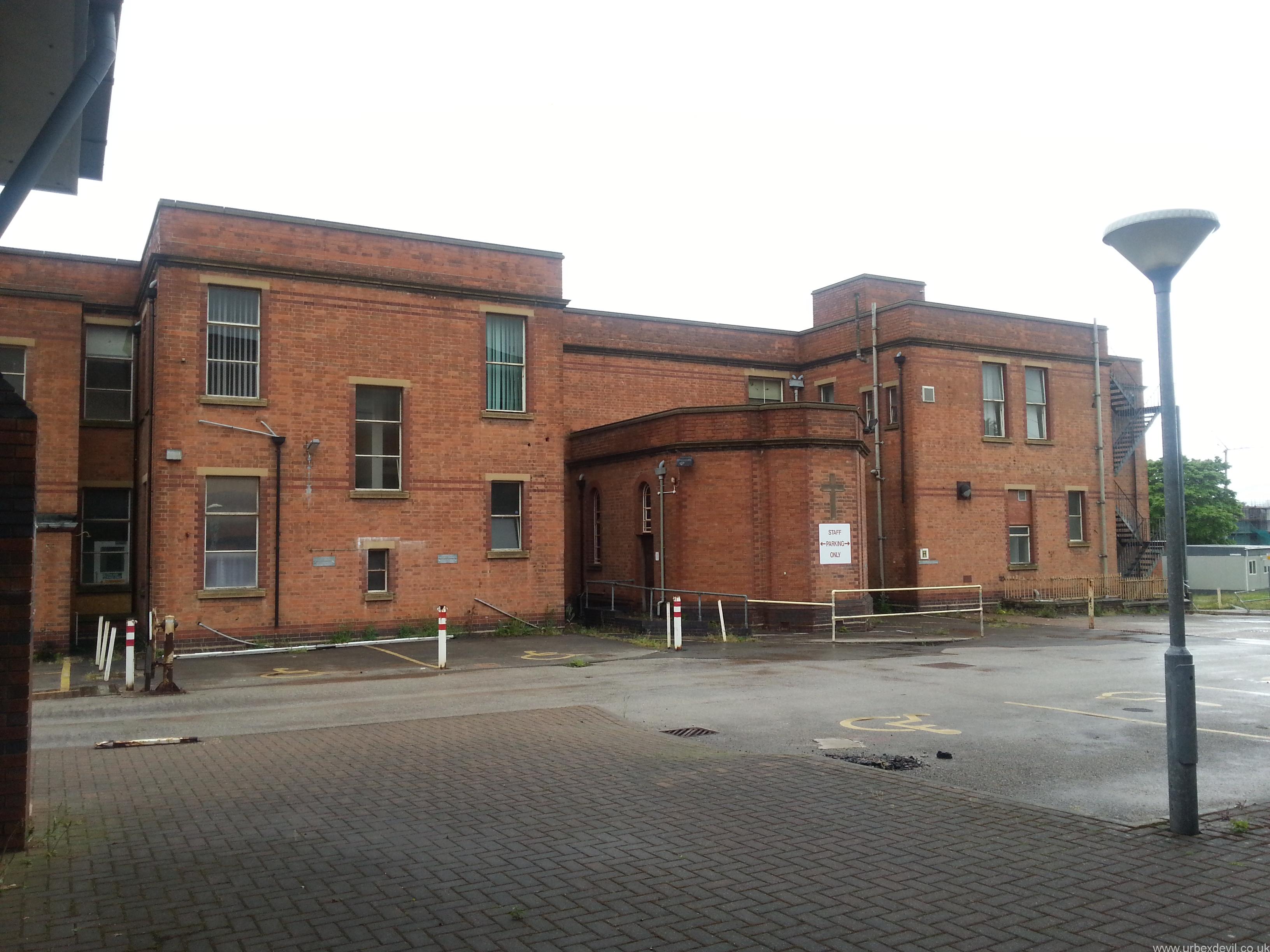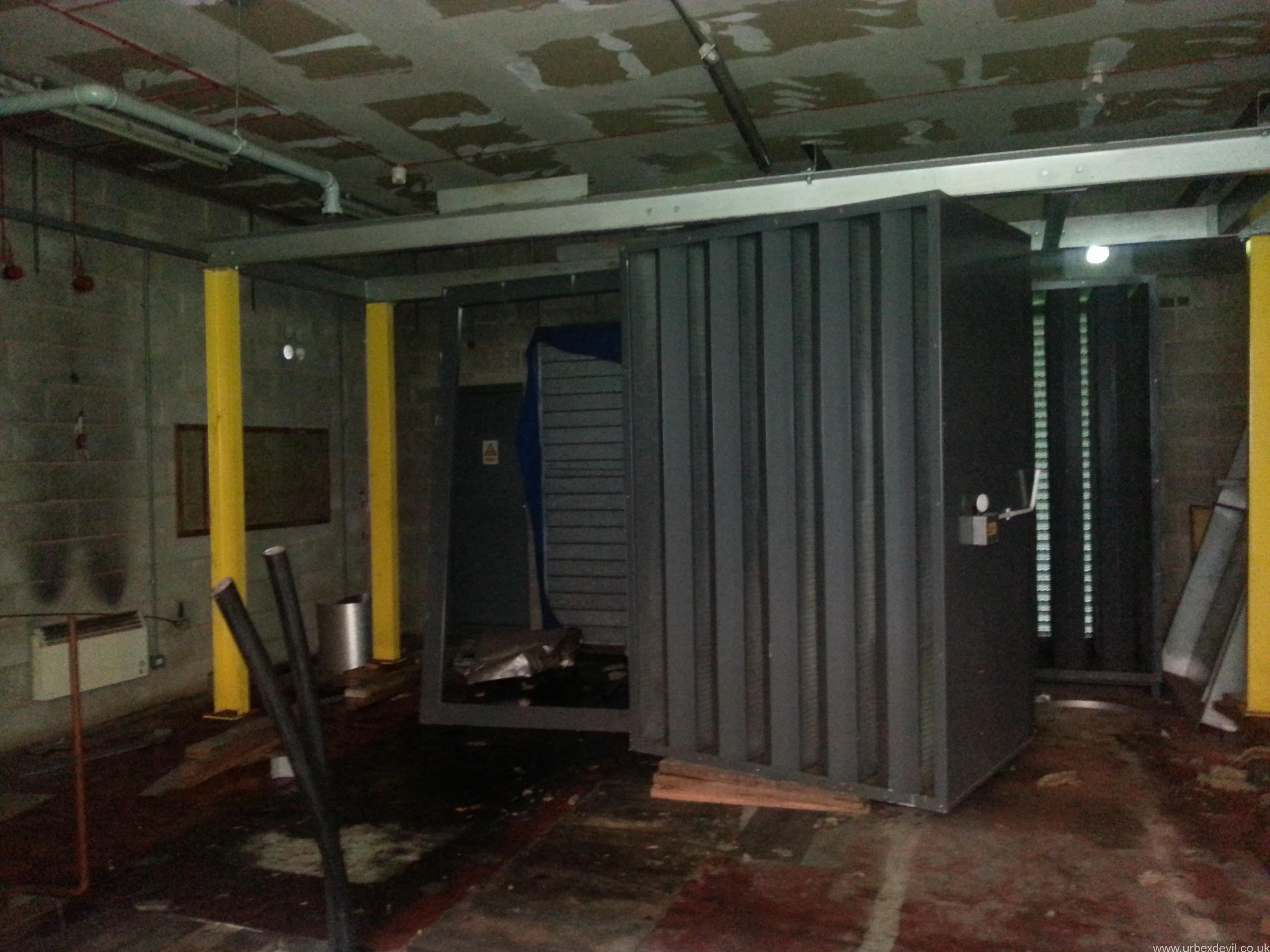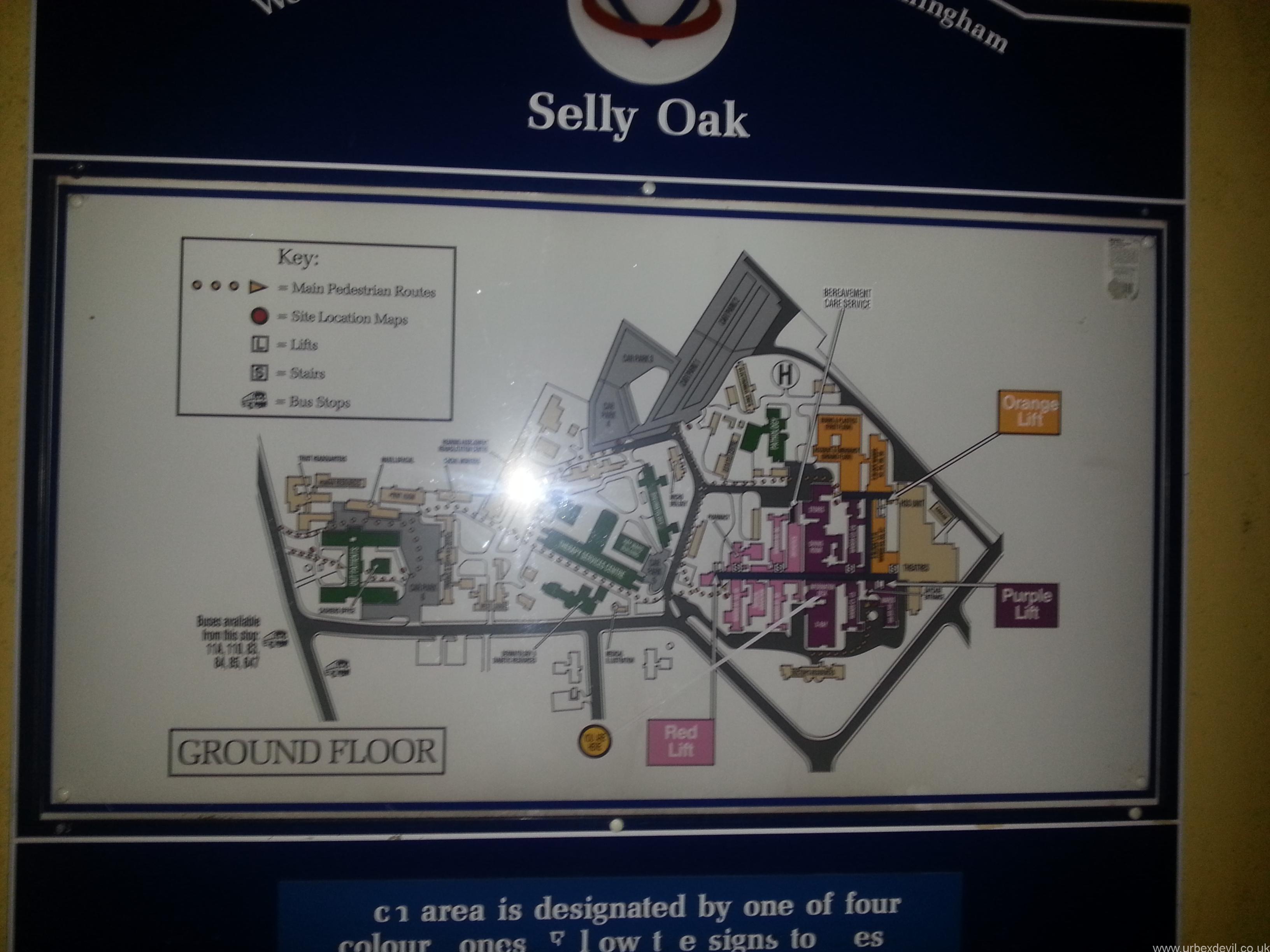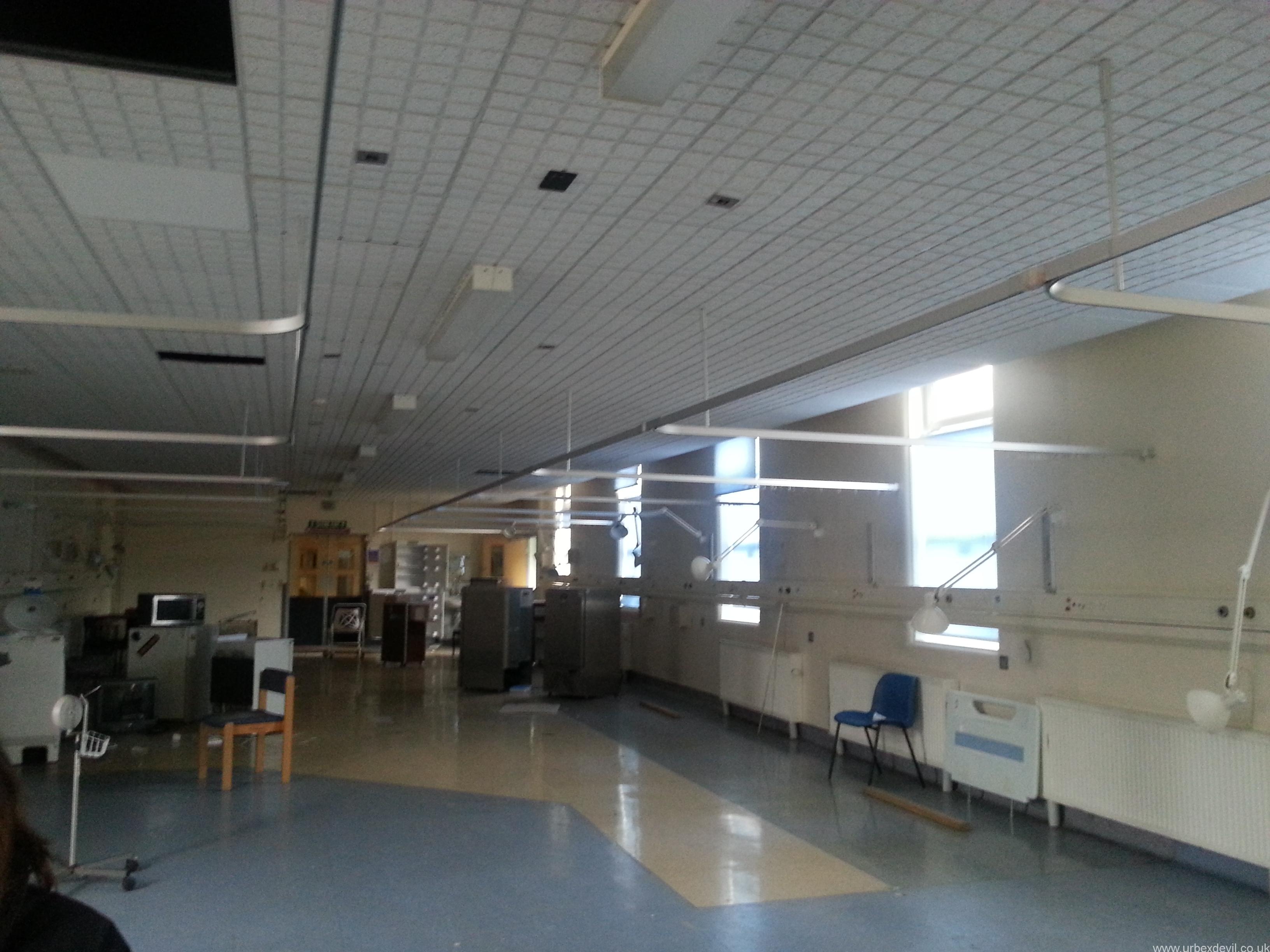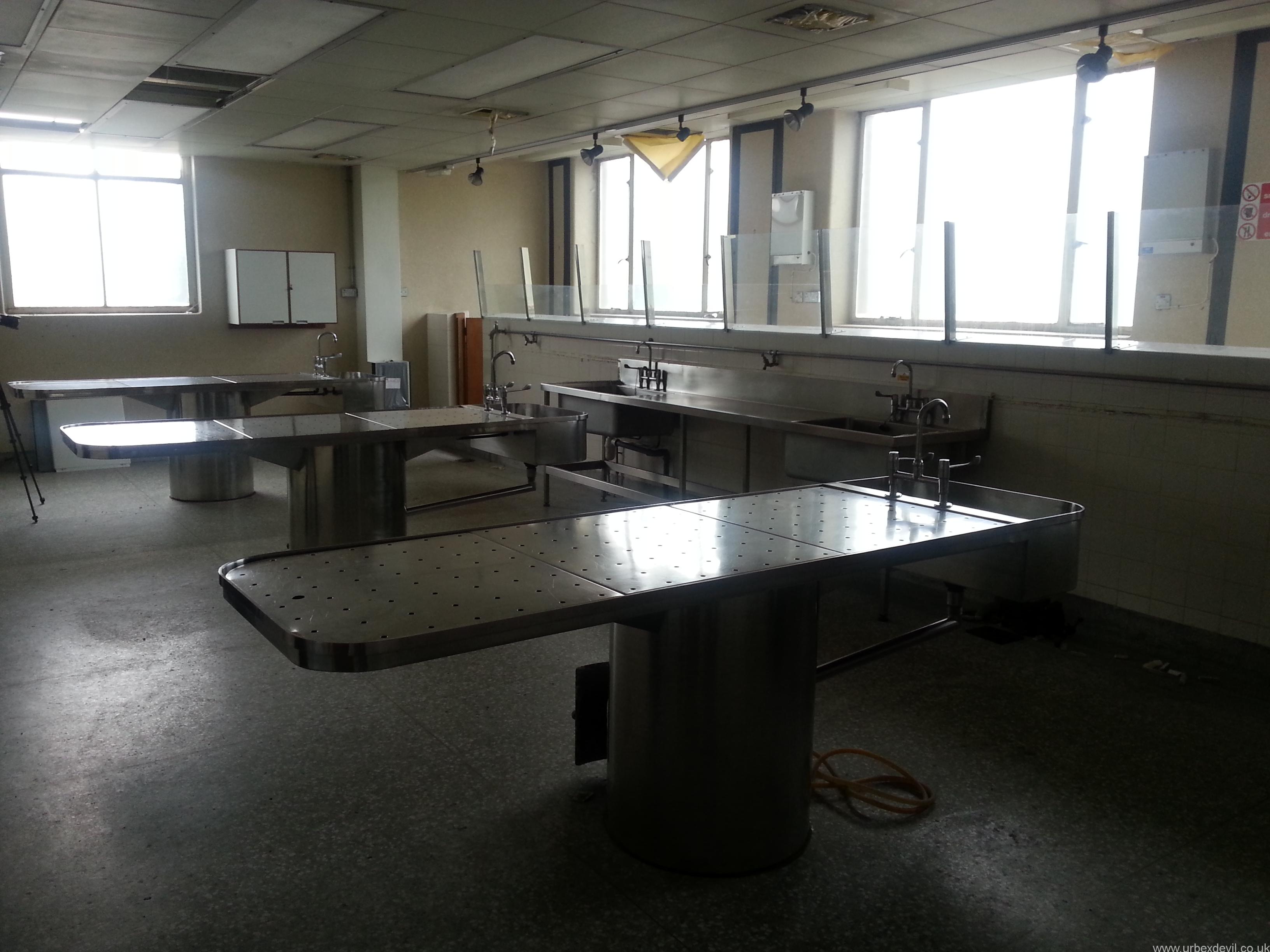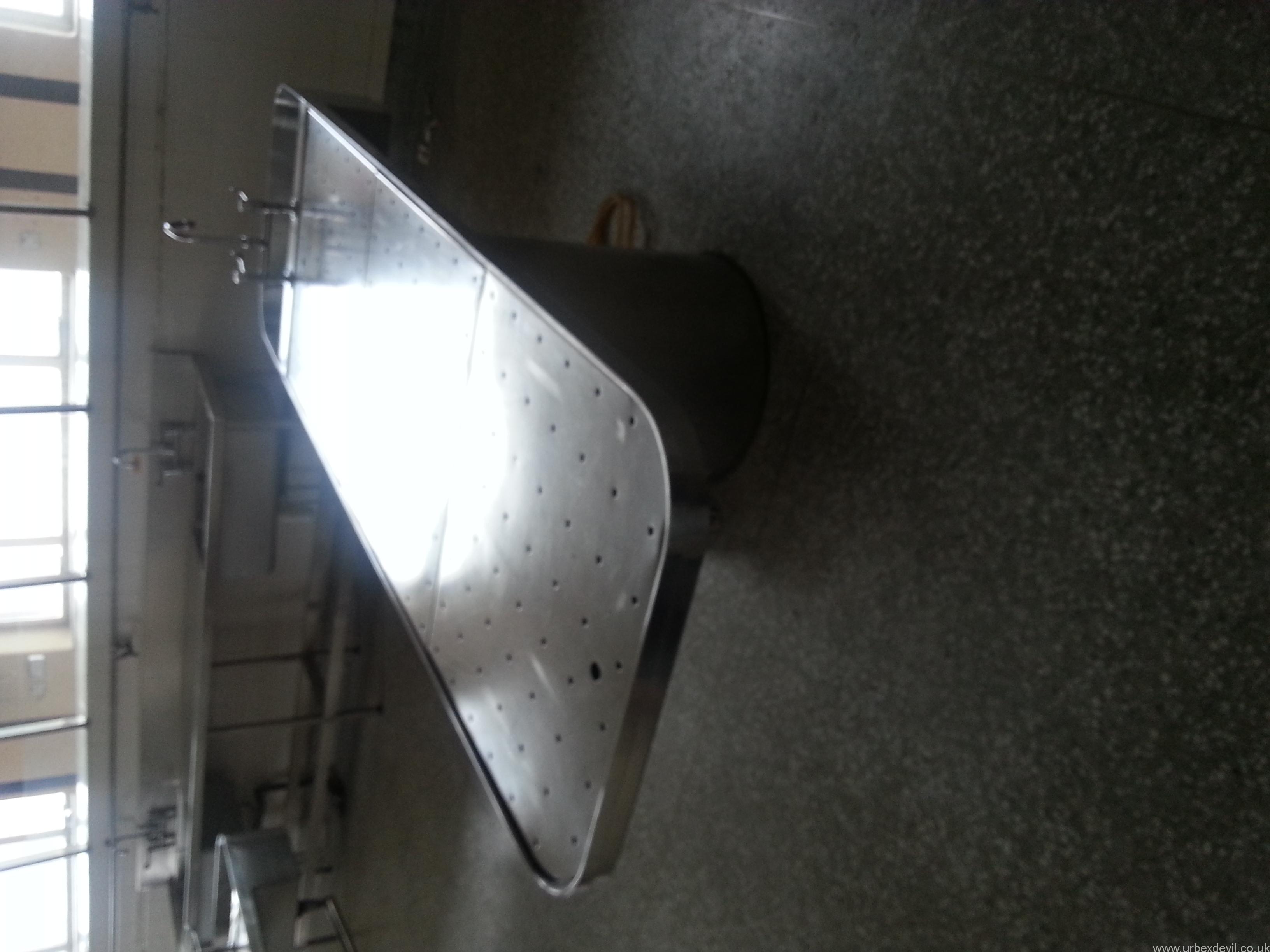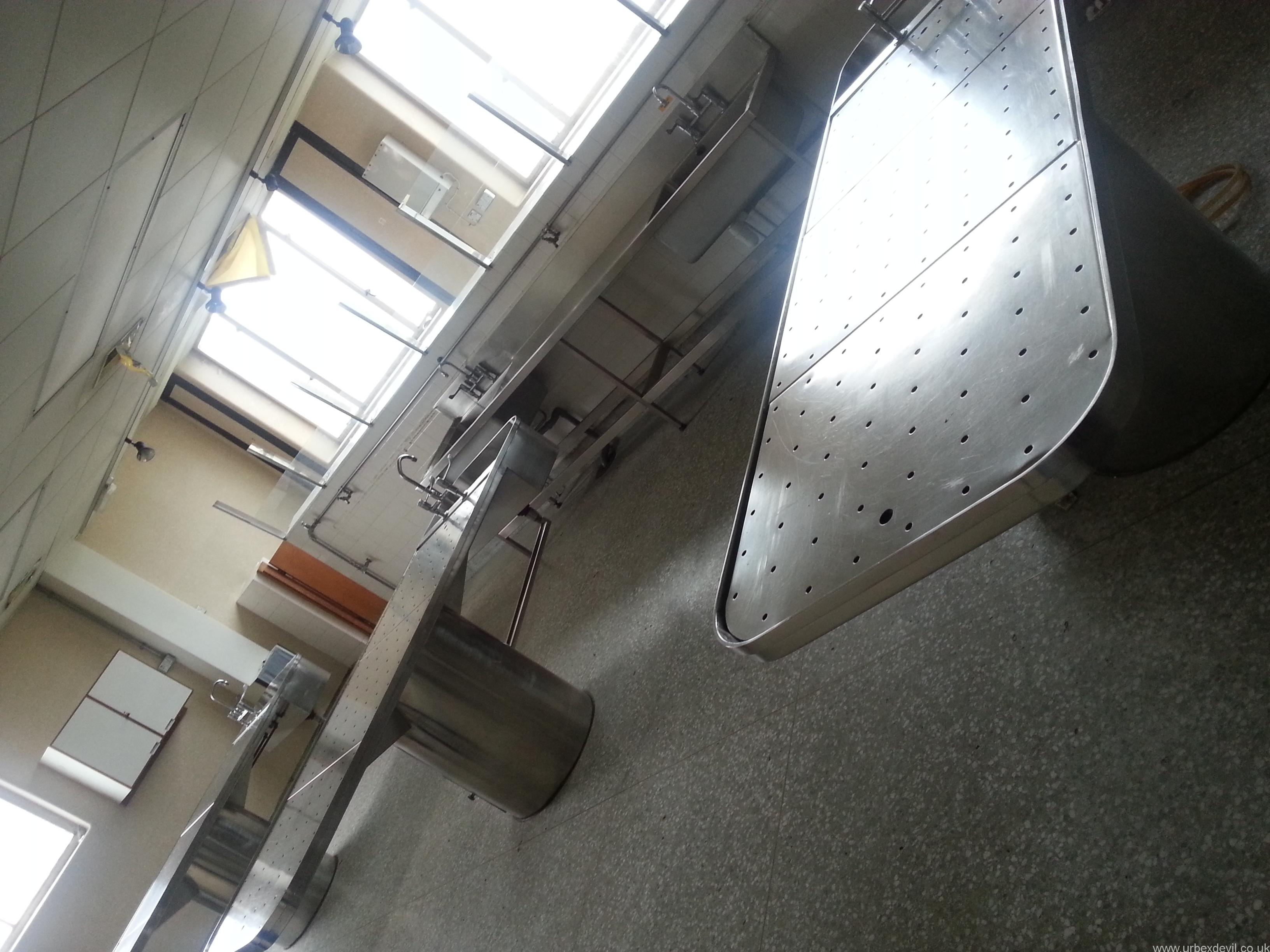It’s certainly been a while since we had an explore on this scale and what an explore it was! After an early start, a McDonalds breakfast and quick fuel stop we arrived at Selly Oak Hospital to spend the next two hours looking for an access point.
Numerous failed attempts later we bumped into two fellow urbexers who we joined forces with and located an access point that seamed more ideal for a cat than a human. I think it’s an unanimous decision between us all that the entrance was somewhat undignified, however it proved to me one of the most amusing entrances to date. Once inside we went our separate directions and bumped into each other a few more times during the day, sharing directions around the hospital as we met.
Many hours later we bumped into yet more fellow urbexers, who seamed determined to get inside the mortuary. Teaming up again we made our way inside, which was again a very sketchy entrance… for one of us at least anyway and what a stunning mortuary it was!
Enough of my ramblings now, here’s a little history on the site (yep you guessed it, shamelessly stolen from the world wide webs) and I will let the pictures do the talking.
“The first buildings on the site of Selly Oak Hospital were the King’s Norton Union Workhouse – built as a place of care for the poor. However in 1862, after a change in the law and emphasis, it became a place that accommodated 200 pauper inmates who were forced to work within the confines of the workhouse. After further acts of Parliament in later years, it was decided to create separate places for the sick. These were often built adjacent to the workhouses and were the forerunners of today’s hospitals.
In 1897 a separate infirmary was built, though it was massively over budget with costs escalated from £18,000 to £52,000. It housed 250 patients. There was also maternity provision, though no operating theatre or mortuary. It was also the year nurses began training at Selly Oak. Demand continued and the workhouse and infirmary were expanded further in the early 1900s.
In 1911, King’s Norton became part of the City of Birmingham and the King’s Norton Workhouse Infirmary was renamed Selly Oak Hospital. Facilities continued to improve and grow as attitudes to the poor changed. In 1930 Selly Oak Hospital and the Workhouse (which was renamed Selly Oak House) came under the administration of Birmingham City Council. Selly Oak House was then used to care for the elderly chronic sick. Operating theatres were added to Selly Oak Hospital in 1931, the biochemistry and pathology laboratories opened in 1934, and the School of Nursing opened in 1941.
In 1948, when the National Health Service was introduced, Selly Oak Hospital and Selly Oak House were amalgamated. In 1997 University Hospital Birmingham NHS Foundation Trust was formed and Selly Oak Hospital joined with the Queen Elizabeth. In 2002 the Centre for Defence Medicine was given approval and the hospital was used as the main treatment centre for military casualties from Afghanistan and Iraq. In 2010, upon the completion of the new QE Hospital, Selly Oak Hospital was largely closed with the exception of a few services occupying outbuildings on site.”

